Everything You Need to Know About Taking the Train in France
Enzojz/Getty Images
- Getting Around
- Types of Trains

International Train Services
- How to Buy Tickets
- Tips for Taking the Train
France is the largest country in western Europe, so train travel makes sense. Happily, France has a fast and efficient train system, and the French government has invested massively in high-speed trains (the TGV train or Train a Grande Vitesse ) and high-speed lines (LGV or Ligne a Grande Vitesse) .
There are over 1,056 miles of dedicated high-speed lines and thousands more main lines and smaller lines, so almost everywhere is accessible by train travel in France.
The French rail network links all the major towns and links up many small towns in rural France. With careful planning, you can get around just using train travel during your vacation. Generally, the trains are on time, comfortable and relatively cheap.
However, some trains run only at certain times on certain days, so you need meticulous planning if you are traveling in rural France by train.
Getting Around France From Paris
Like many capital cities, Paris suffers from having no central railway hub, but a number of mainline termini. Here are some of the main destinations served from the main stations .
- Gare du Nord: Northeast France, London (Eurostar) , Brussels, Amsterdam (Thalys), Lille, Valenciennes, Calais
- Gare de l'Est: Nancy, Metz, Reims , Strasbourg , Germany, Luxembourg
- Gare de Lyon: Lyon , Dijon, Besançon, Geneva, Mulhouse, Zurich, Clermont-Ferrand, Marseille , Nice , Nimes, Montpellier , Perpignan; Italy and the east of Spain
- Gare d'Austerlitz: Tours, Poitiers, Limoges, Bordeaux , Toulouse , Biarritz, western Spain
- Gare Montparnasse: All western TGVs, Brittany , Brest, Rennes, Nantes
- Gare St. Lazare: Caen , Cherbourg, Rouen , Le Havre
Types of Trains in France
All types of trains run in France, from the special TGV and other high-speed trains to smaller branch lines. While some lines are operating old carriages, most of the trains are now comfortable, modern, and have high-tech additions like WiFi. Many have massive picture windows along the sides; others have an upper deck that gives you a fantastic view of the French countryside you are powering through.
The main types of trains in France are:
- The TGV Train network ( Train a Grande Vitesse ) runs to major cities in France and Europe.
- Intercites trains cover many of the medium distance routes between cities like Amiens, Orleans, Bordeaux, Caen, Lyon, Reims, Troyes, Toulouse, and Paris. They link cities in French regions like Nantes, Bordeaux, and Lyons-Nantes-Tours.
- TER is the French regional service running from towns and villages over 21 regional networks in France.
- AutoTrain sleeper service runs from Paris Bercy Station down to the south of France, taking you and your car.
Other national rail carriers use TGV train technology in Europe:
- TGV Lyria trains run through France into Switzerland
- Eurostar runs between the UK, Lille, Paris, and Brussels
- Thalys trains run to Belgium, the Netherlands, and Germany
How and Where to Buy Tickets
Like most countries, ticket prices vary widely. If you can book early, you will get good bargains, but you may have to stick to a specific time. If you book that and miss the train, you may not get reimbursed.
Ticket prices are no higher on a TGV or express train than on a local line. And to compete with the low-cost airlines, TGV trains offer reasonable prices for early bookings and for the less popular times of trains. Internet booking is always a good idea.
All French train tickets can also be ordered online, and you can then print them out on your computer as an e-ticket, exactly as the airlines do.
Visitors from the USA can buy online with Rail Europe , and visitors from the U.K. can buy online with Voyages sncf (formerly Rail Europe UK).
Tips for Taking the Train in France
- Arrive early to find out which platform the train goes from. Paris train stations can be quite confusing.
- There might not be good refreshments on the train; check in advance and, if necessary, buy your own snacks/light lunches at the station.
- You will have to validate your ticket. Look for the yellow machines ( ‘compostage de billets’ ) usually just before reaching the platform. Insert your tickets into the slot and retrieve them. Ticket inspectors will check your ticket on the train, and if it is not validated will probably find you.
How to Travel From Zurich to Paris by Train, Bus, Car, and Plane
How to Travel from Frankfurt to Paris by Train, Bus, Car, and Plane
France Guide: Planning Your Trip
How to Travel from Paris to Aix-en-Provence by Train, Car, Bus, and Plane
How to Ride the High-Speed TGV Trains in France
How to Travel From Paris to Strasbourg by Train, Bus, Car, and Plane
One Week in France: The Ultimate Itinerary
Guide to Major Train Stations in Paris
How to Travel From Paris to Montpellier
How to Get to France From Barcelona and Other Spanish Cities
Traveling to Arles by Train, Plane, and Car
Getting Around Paris: Guide to Public Transportation
France Railways Map and French Train Travel Information
How to Travel from Paris to Colmar by Train, Bus, Car, and Plane
How to Navigate Paris Train Stations and Transfers
How to Travel from Paris to Toulon by Train, Bus, Car, and Plane
Protect Your Trip »
Best places to visit in france.
France is home to some of the most lively cities, bucolic villages and renowned wine regions on the globe. U.S. News considered factors like variety of attractions, lodging, weather and culinary scenes to create this ranking of the best places to visit in France. Whether you're seeking an action-packed sightseeing adventure or a relaxing wine retreat, you'll find a fun French vacation here. To influence next year's ranking, vote below for your favorite destinations in France.
Mont Saint-Michel
Montpellier, french alps, chamonix-mont-blanc, aix-en-provence, loire valley.

As the world's best place to visit , it's no surprise that the electrifying City of Light tops this list. France's capital city is a year-round tourist destination with iconic attractions like the Louvre and the Eiffel Tower and incredible architecture (think: the dazzling Basilique du Sacré-Coeur). Not to mention, Paris offers unparalleled dining and shopping scenes and more museums than you could hope to visit in one trip. Keep in mind, Paris is often flooded with tourists and room rates can be pricey. If you're looking for a deal, travel in winter or early spring.

The capital of the Alsace region offers the perfect mix of French and German culture thanks to its location on the France-Germany border. While here, travelers should see Strasbourg's Gothic-style cathedral and stroll through the UNESCO World Heritage-listed Petite France quarter with its half-timbered houses and postcard-worthy waterways. Plus, those with an interest in politics can tour several important European institutions during their visit, including the European Parliament and the Council of Europe. For an extra dose of charm, arrive in December to see one of Europe's oldest Christmas markets.

Rising above the sea like a castle in a fairy tale, Mont Saint-Michel in Normandy is one of France's most-visited sights. Legend says the archangel Michael, the island's namesake, repeatedly appeared to Bishop Aubert of Avranches in dreams, telling him to build a church on top of the island in A.D. 708. Since its completion, it has become an important pilgrimage site for Christians and European intellectuals. Visitors can tour the picturesque abbey and admire its incredible medieval architecture or wander its surrounding streets, which are lined with tiny shops and quaint cafes.

Dubbed La Ville Rose due to the prominence of distinctive clay bricks in its architecture, Toulouse is a feast for the eyes. Throughout this city, which is located in the South of France, you'll find marvels like the neoclassical Le Capitole on the main square, the stately Basilica of Saint-Sernin (an 11th-century UNESCO site) and the Hôtel d’Assézat, which houses a noteworthy art gallery. What's more, several canals with shady footpaths pass through the city, including the idyllic Canal du Midi. For some of the best views of Toulouse, take a cruise on the River Garonne, or just sunbathe on its banks.

Sunny Montpellier glows with a combination of old world charm and a trendy university lifestyle. This city in the south of France evokes Parisian appeal with Haussmann architecture and stylish promenades. And like Paris, adornment is everywhere in Montpellier, from fashionable boutiques to street art to France's oldest botanical garden. Plus, since Montpellier is located 7 miles from the coast of the Mediterranean, a beach break is close at hand. Once the sun sets, take part in the city's youthful nightlife scene, which includes everything from music halls to dance clubs.

It's easy to see why Colmar, located in the heart of Alsace's wine region, is considered one of France's most beautiful cities. Colorful houses that look as if they belong in a fairy tale line the Little Venice district, where you can take a boat tour through Colmar's canals or reach boutiques and eateries on foot. The setting is picturesque regardless of when you vacation here, but for even more charm, visit Colmar at night when lights illuminate the city during annual events like the Colmar International Festival, Alsace's wine fair and Colmar's Christmas market.

To see some of France's most spectacular art and architecture, head to Avignon. This city in southeastern France is full of stunning structures, including the 14th-century Palais des Papes, the largest Gothic palace in the world, and the arched bridge, Pont d'Avignon. A number of can't-miss museums are spread throughout Avignon as well, such as the Musée Angladon, which houses works by highly regarded artists like Edgar Degas, Pablo Picasso and Vincent Van Gogh. Visit in July to attend the Festival d'Avignon, one of the world's largest performing arts festivals.

If your ideal French vacation involves a little more nature and a little less city, head to the French Alps . Here, you'll find some of the best ski slopes in Europe, as well as beautiful scenery that rivals any work of art or architecture. In summer, the typically snow-covered mountains thaw just enough to create perfect conditions for hiking and biking. Enchanting villages sit at the base of the range, offering several places to unwind when you've had enough fun on the slopes or trails.

Despite its war-filled past, this region in northern France is also a place of great beauty and culture. Étretat's white cliffs are a great place to take in the area's natural scenery. Then, visit the region's capital city, Rouen, to admire works of art at the Musée des Beaux-Arts and stroll past the quaint half-timbered houses. Be sure to sample some of the city's culinary specialties to see why it is now a UNESCO City of Gastronomy. Or, see some of the remnants of Normandy's heavy history at the D-Day Landing Beaches and The Bayeux Tapestry.

Glamorous Nice occupies a picturesque spot along the French Riviera. Beach bums and culture hounds alike will enjoy the city's pebbly shores, engaging museums, boutique shops and Baroque-style palaces. Be sure to stroll along the coastline's Promenade des Anglais and pick up some fresh flowers and produce at the vibrant Cours Saleya market, located in old town. You'll likely spend a pretty penny on lodging and beach access, but experiencing Nice is worth it. To save some coin, travel between mid-March and April or from September to October, the area's shoulder seasons.

Often called "France's Isle of Beauty," Corsica features diverse landscapes and a unique culture that make it seem like a miniature continent. The Mediterranean island's clear blue water and white sand beaches are ideal for sunbathing, snorkeling and kayaking, while its mountainous terrain and dense forests provide ample opportunities to hike trails like the highly regarded (albeit challenging) GR20. Those looking to take in some history can visit the Maison Bonaparte museum to see Napoleon's birthplace. What's more, Corsica offers a one-of-a-kind food scene that showcases various local delicacies, such as lonzu (dry-cured ham) and brocciu (cheese).

While it may not be as well known as big-name cities like Paris, Lyon competes with the best of them. Despite being the third-largest city in France, Lyon is much calmer and less touristy than other similarly sized destinations. The streets are filled with public art, including the city's famous trompe l'oeil murals, and there are museums that focus on everything from movies to history. Plus, it's surrounded by hundreds of wineries and home to 4,000-plus restaurants, several of which boast Michelin stars, making it especially appealing to oenophiles and foodies.

If you love to ski, chances are you'll enjoy shredding powder at Mont Blanc, the highest mountain in Europe. In the bustling Chamonix (the main place to stay if you want to ski at Mont Blanc), you'll have easy access to the longest off-piste run in the world (Vallée Blanche) and rugged, challenging slopes. But this destination, which hosted the 1924 Winter Olympics, offers more than just top-notch skiing. Chamonix is also a great place to go hiking, mountain biking and whitewater rafting. For some family-friendly fun, visit the town's adventure park to zip down its Alpine coaster and various slides.

Quaint, charming Aix-en-Provence is a university city known for its tree-lined boulevards, cute cafes and lively markets. Life moves at a more leisurely pace here than in other French cities, meaning it's the perfect place for travelers to get lost in the scenic streets. Make sure to add Cathédrale Saint-Sauveur and Le Grand Marché – two of the city's top attractions – to your itinerary. You can also see where artist Paul Cézanne (an Aix-en-Provence native) painted some of his masterpieces at Atelier de Cezanne, or venture outside of the city to see the Provencal scenes that inspired him.

Vincent Van Gogh fans may recognize the streetscapes of Arles: This small city in Provence inspired some of the artist's best-known works with its bright colors and rustic feel. Art aficionados can walk in Van Gogh's footsteps and explore his favorite haunts on a walking tour through this romantic city or visit the Fondation Vincent Van Gogh Arles. Beyond this noteworthy connection, Arles is renowned for its Roman ruins, including a two-tiered amphitheater, the Alyscamps necropolis and the Constantine Baths. And as the gateway to the Camargue region, Arles is a great base for visitors looking to explore this marshy, flamingo-filled area.

Another popular wine region, Burgundy is home to rolling hills, superior cuisine and an array of vineyards. Those visiting Burgundy must spend time exploring the medieval villages, historical abbeys and museums that call this area home. Dijon, the region's history-rich capital, makes a great home base for touring the area. And, of course, you can't leave without trying the region's wine, which mainly uses the pinot noir and chardonnay grapes, and dining on some of its rich cuisine.

Northwestern France's Brittany region stands out from the rest of the country in more ways than one. Locals are proud and protective of their Celtic heritage, including their unique language, traditions and festivals. As a result, visitors will find many well-preserved historical sites throughout the area, including prehistoric megaliths and medieval towns like Saint-Malo, a popular port town with a 12th-century citadel. Brittany also features breathtaking coastlines with fantastic beaches that are known for their phenomenal waves for surfing, dive spots and dolphin-spotting opportunities.

As the capital of France's Champagne region, Reims is a must-visit destination for both history buffs and those who love bubbly. The city offers many Champagne cellars where visitors can learn about how the popular wine is produced before tasting it. Additionally, Reims features breathtaking Gothic architecture at attractions like the Cathedral of Notre-Dame at Reims, where 25 French monarchs were crowned between 1223 and 1825, and the adjacent Palace of Tau, the former residence of France's archbishops. No visit would be complete without perusing the exhibits in one of Reims' museums, which cover a range of topics from war history to art and automobiles.

The gateway to the Loire Valley, Tours is perfectly situated for touring the region's wineries. But with Tours' historical elements and prime location along the Loire River, you may just want to stay in town. Place Plumereau, a medieval marketplace that remains one of the city's oldest squares, exudes irresistible charm with half-timbered houses, while churches like the Saint-Gatien Cathedral stun with their stately façades. Visitors will also have their pick of green spaces, from parks like Prébendes d’Oé Garden to riverside guinguettes (open-air cafes) at Tours sur Loire. What's more, several of the region's famed châteaux (including the Château de Villandry) sit just outside the city.

For a romantic escape, visit the Loire Valley in central France. Situated along the Loire River, the area is peppered with châteaux, bed-and-breakfast accommodations, farms and wineries renowned for their sauvignon blanc. The region itself is even a designated UNESCO World Heritage Site because of its beauty and historical villages. Plan to spend some time in a few of the valley's laid-back cities and towns, such as Orléans and Saumur, and you can't miss the emblematic Château de Chambord.

This wine-producing hub woos travelers with its riverbank location and surrounding countryside. With nearly 300,000 acres of vineyards, Bordeaux offers ample choices for those looking to sip some of the best (typically bold red) wines in the world. In the city center, marvel at the Gothic-style Basilique Saint Michel, walk across the Pont de Pierre (a beautiful stone bridge), snap a photo of the iconic Place de la Bourse and enjoy the Jardin Public's pathways and flora.

Located on the French Riviera just 8 miles from Nice, the tiny hilltop village of Èze makes for an excellent daytrip. The best way to spend your time in this medieval town is meandering through its cobbled streets that look as though they've been pulled from a postcard. In doing so, you'll find picturesque views of the coast, as well as luxury hotels and shops from another era. Top sights include the Notre-Dame-de-l'Assomption and Jardin Exotique d'Èze, as well as the walking path of Nietzsche, who was inspired to write here. Before leaving town, stop by the Fragonard Parfumeur factory for a fragrant tour.

Located 35 miles northeast of Montpellier, Nîmes delights history buffs with some of the world's best-preserved Roman treasures like its emblematic arena and La Maison Carrée, a temple dating back to 10 B.C. Museums throughout Nîmes also cover its past. But lest you get the wrong impression, Nîmes is anything but stuffy. The city embraces the joie de vivre of the South of France with countless festivals, from structured events like the concert lineups of the Festival de Nîmes to lively Ferias de Nîmes – multi-day celebrations that occur twice a year at Pentecost and in September, and center around bullfighting, dancing and music.

France's oldest and second-largest city has become an exciting, up-and-coming tourist destination. Marseille has a number of sights to see, including the Basilique Notre-Dame de la Garde and Château d'If, the ominous prison made famous by Alexandre Dumas' "The Count of Monte Cristo." When the weather is nice, the rocky cliffs and secluded beaches of the Calanques are excellent for swimming, boating and hiking. No trip to Marseille would be complete without a stop by the Mucem, a museum dedicated to Mediterranean civilization. Plus, its rooftop terrace makes the perfect vantage point to admire the city.

Famous for its annual film festival in May, Cannes is just as impressive (and much less congested) other times of the year. Cannes is another French Riviera hot spot that welcomes travelers looking for a little relaxation (think: sun-soaked beaches and meandering walks through the steep streets of Le Suquet, one of the city's oldest neighborhoods). Visitors can sightsee as they stroll along La Croisette, a 2-mile-long promenade, or sit down for an exquisite meal at a Michelin-starred restaurant. Feeling lucky? Stop by one of Cannes' casinos.
Vote to Add these Destinations to the Rankings

Carcassonne

Cirque de Gavarnie

You May Be Interested In

Best Places to Visit in Europe for 2023-2024

Best Places to Visit in Spain

Best Cheap European Vacations for 2023-2024

Best Family Vacations in Europe

Best Beaches in France

Best Beaches in Italy
If you make a purchase from our site, we may earn a commission. This does not affect the quality or independence of our editorial content.
Recommended
The 18 Best Napa Valley Wineries to Visit in 2024
Lyn Mettler|Sharael Kolberg April 23, 2024

The 25 Best Beaches on the East Coast for 2024
Timothy J. Forster|Sharael Kolberg April 19, 2024

The 50 Best Hotels in the USA 2024
Christina Maggitas February 6, 2024

The 32 Most Famous Landmarks in the World
Gwen Pratesi|Timothy J. Forster February 1, 2024

9 Top All-Inclusive Resorts in Florida for 2024
Gwen Pratesi|Amanda Norcross January 5, 2024

24 Top All-Inclusive Resorts in the U.S. for 2024
Erin Evans January 4, 2024

26 Top Adults-Only All-Inclusive Resorts for 2024
Zach Watson December 28, 2023

Solo Vacations: The 36 Best Places to Travel Alone in 2024
Lyn Mettler|Erin Vasta December 22, 2023

26 Cheap Beach Vacations for Travelers on a Budget
Kyle McCarthy|Sharael Kolberg December 4, 2023

The 50 Most Beautiful White Sand Beaches in the World
Holly Johnson December 1, 2023

- Getting around France: Transportation Tips
Book your individual trip , stress-free with local travel experts
- roughguides.com
- getting-around
- Travel guide
- Itineraries
- Local Experts
- Travel Advice
- Accommodation
Plan your tailor-made trip with a local expert
Book securely with money-back guarantee
Travel stress-free with local assistance and 24/7 support
My niece and I attended this terrific workshop. We learned a lot and had tons of fun. The bread and pastries were amazing. It was great to get behind the s...
With the most extensive train network in Western Europe, France is a great country in which to travel by rail. The national rail company, SNCF (Société Nationale des Chemins de Fer), runs fast, efficient trains between the main towns. Buses cover rural areas, but services can be sporadic, with awkward departure times. If you want to get off the beaten track the best option is to have your own transport.
Canal and river trips
Tailor-made travel itineraries for france, created by local experts.

14 days / from 3860 USD
An active walking tour out of the way in France
Your trip starts with an in-depth introduction to France in Paris: several unique day excursions connect you with local Parisians to show you their city and way of life. Afterwards continue south to start a few days walking journey through Southern France before ending around Avignon.

10 days / from 2411 USD
Southern France – Walks in the Alpilles and Lavender fields
Start your tour in the coastal city of Marseille, exploring Cassis on the way. Around the Alpilles in Provence, you will be provided with detailed walking materials to explore the area on foot, from both Les Baux and St Remy. End your tour in famous Avignon.

12 days / from 2948 USD
Tasting Eastern France
A delicious yet active journey through Eastern France. Start your trip in Lyon with some unique food tours before setting off on a 4-day walk across the Beaujolais region. Almost every day ends with a wine tasting in your guesthouse, soothing for body and soul.
SNCF (0844 848 5848) operates one of the most efficient, comfortable and user-friendly railway systems in the world. Staff are generally courteous and helpful, and its trains – for the most part, fast, clean and reliable – continue, in spite of the closure of some rural lines, to serve most of the country.
Pride and joy of the French rail system is the high-speed TGV ( train à grande vitesse ), capable of speeds of up to 300kph, and its offspring Eurostar. The continually expanding TGV network has its main hub in Paris, from where main lines head north to Lille, east to Strasbourg and two head south: one to Marseille and the Mediterranean, the other west to Bordeaux and the Spanish frontier. Spur lines service Brittany and Normandy, the Alps, Pyrenees and Jura.
Bookable online only, iDTGV trains compete with low-cost airlines and have quiet areas, a bar, facilities to watch DVDs and play computer games. Available on routes to more than 30 destinations from Paris including Bordeaux, Mulhouse, Marseille, Nice, Perpignan, Toulouse, Strasbourg and Hendaye, travel times can be changed for an additional fee. Intercité is the catch-all brand name for trains providing intercity services on routes not yet upgraded to TGV. Though not as fast, they have decent facilities including restaurant cars. Intercité sleeper services link Paris, Toulouse, the Alps and the south. Local services are covered by TER regional express trains.
Aside from the regular lines there are a number of special tourist trains , usually not part of the SNCF system or covered by normal rail passes, though some offer a discount to rail-pass holders. One of the most popular is the spectacular Petit Train Jaune, which winds its way up through the Pyrenees.
Tickets and fares
Tickets can be bought online or at train stations ( gare SNCF ). If you have language problems or there are long queues at the counter, note that touch-screen vending machines with instructions in English sell tickets for express services in most stations; separate vending machines for regional (TER) services have basic English labelling. All tickets – but not passes or computerized tickets printed out at home – must be validated in the orange machines located beside the entrance to the platforms, and it’s an offence not to follow the instruction Compostez votre billet (“validate your ticket”).
Timetables covering particular destinations are available free at stations. The word Autocar (often abbreviated to car ) on the timetable signifies that the service is covered by an SNCF bus, on which rail tickets and passes are valid.
Fares are cheaper if you travel off-peak ( période bleue or blue period) rather than during peak hours ( période blanche or white period); peak period generally means Monday mornings and Friday and Sunday evenings. One-way iDTGV fares from Paris to Nice start at around €56, and from as little as €30 one-way to Toulouse. Tickets are sold a maximum of three months in advance on national trains and four months in advance on TER. You can choose your seat on TGV; reservation is obligatory on certain Intercité services.
On certain mainline routes a limited number of discount tickets , known as tarifs Prems can be bought up to ninety days in advance; these are non-refundable and cannot be changed. Prices start at €25. It’s worth checking the Trainline.com website for last-minute offers, too.
Rail passes
SNCF offers a range of travel cards , which are valid for one year, and can be purchased online, by phone (33 892 35 35 35), through accredited travel agents and from main gares SNCF. For example, the Carte Weekend (€75) offers a discount of between 25 and 50 percent for cardholders and a companion for weekend journeys including travel on TGV trains. The Carte Jeune (€50) for 12- to 28-year-olds implements a 25 to 50 percent discount at any time. Similar deals are available for the over-60s (Carte Senior; €60) and families with children under the age of 12 (Carte Enfant +; €75).
Non-Europeans also have the option of picking up the France Rail Pass (starting from $205/$371 for three days unlimited travel in one month) before arriving in France. The pass is available for 3- to 9-day periods.
SNCF operates bus services between train stations in areas no longer accessible by rail. Additionally, private, municipal and departmental buses can be useful for local and cross-country journeys – for instance along the long coast of the Var, much of which is not served by train. If you want to see much outside the main towns be prepared for early starts and careful planning – the timetable is often constructed to suit market and school hours. As a rule, buses are cheaper and slower than trains.
Larger towns usually have a gare routière (bus station), often next to the gare SNCF . However, the private bus companies don’t always work together and you’ll frequently find them leaving from an array of different points (the local tourist office should be able to help locate the stop you need).
Most of France’s coastal islands, which are concentrated around Brittany and the Côte d’Azur can only be reached by ferry . Local companies run services, with timetables and prices varying according to season. Some routes have a reduced schedule or cease to operate completely in winter months, while in high season booking ahead is recommended on all but the most frequent services.
Arriving by air from outside Europe, you may be able to get a good deal on add-on domestic flights . Air France operates the majority of routes within the country, although competition is hotting up, with the likes of easyJet running internal discount flights from Paris or Lyon to Biarritz, Brest, Corsica, Nice and Toulouse.
Driving in France can be a real pleasure, with its magnificent network of autoroutes providing sweeping views of the countryside. If you’re in a hurry, it’s worth paying motorway tolls to avoid the often congested toll-free routes nationales (marked, for example, RN116 or N116 on signs and maps), many of which have been reclassified as routes départementales in recent years. Many of the more minor routes départementales (marked with a D) are uncongested and make for a more scenic – if slow – drive.
There are times when it’s wiser not to drive at all: in big cities; around major seaside resorts in high season; and at peak holiday migrations such as the beginning and end of the month-long August holiday, and the notoriously congested weekends nearest July 14 and August 15.
Licences, petrol and tolls
US, Canadian, Australian, New Zealand, South African and all EU driving licences are valid in France for up to twelve months, though an International Driver’s Licence makes life easier. The minimum driving age is 18 and you must hold a full licence. Drivers are required to carry their licence with them when driving, and you should also have the insurance and registration documents with you in the car.
All the major car manufacturers have garages and service stations in France, which can help if you run into mechanical difficulties. You’ll find them listed in the Yellow Pages of the phone book under “ Garages d’automobiles ”; for breakdowns, look under “ Dépannages ”. If you have an accident or theft, contact the local police – and keep a copy of their report in order to file an insurance claim. Within Europe, most car insurance policies cover taking your car to France; check with your insurer. However, you’re advised to take out extra cover for motoring assistance in case your car breaks down.
Note that petrol stations in rural areas tend to be few and far between, and those that do exist usually open only during normal shop hours – don’t count on being able to buy petrol at night and on Sunday. Thankfully, some stations are equipped with automated 24-hour pumps. Most sell unleaded ( sans plomb ), and diesel ( gazole or gasoil ); some also sell LPG and an increasing number are selling SP95-E10, a form of unleaded which includes 10 percent ethanol. Not all cars can run on this, so check with the manufacturer before using it.
Most autoroutes have tolls : rates vary, but to give you an idea, travelling by motorway from Calais to Montpellier costs roughly €65.70; pay in cash or by credit card (get in a lane marked CB at the toll-gates). You can work out routes and costs of both petrol and tolls online at the useful viamichelin.com . UK motorists can use the Liber-T automatic tolling lanes if their cars are fitted with the relevant transponder; to register in advance for a transponder and for more information see saneftolling.co.uk .
Rules of the road
Since the French drive on the right , drivers of right-hand-drive cars must adjust their headlights to dip to the right. This is most easily done by sticking on glare deflectors, which can be bought at most motor accessory shops, at the Channel ferry ports or the Eurostar terminal and on the ferries. It’s more complicated if your car is fitted with High-Intensity Discharge (HID) or halogen-type lights; check with your dealer about how to adjust these well in advance. Dipped headlights must be used in poor daytime visibility.
All non-French vehicles must display their national identification letters (GB, etc) either on the number plate or by means of a sticker, and all vehicles must carry a red warning triangle, a reflective safety jacket and (since July 2012) a single use breathalyser. You are also strongly advised to carry a spare set of bulbs, a fire extinguisher and a first-aid kit. Seat belts are compulsory and children under 10 years must travel in an approved child seat, harness or booster appropriate to their age and size.
In built-up areas the law of priorité à droite – giving way to traffic coming from your right, even when it is coming from a minor road – still sometimes applies, including at some roundabouts. A sign showing a yellow diamond on a white background indicates that you have right of way, while the same sign with a diagonal black slash across it warns you that vehicles emerging from the right have priority. Cédez le passage means “Give way”; vous n’avez pas la priorité means “You do not have right of way”.
If you have an accident while driving, you must fill in and sign a constat d’accident (declaration form) or, if another car is also involved, a constat aimable (jointly agreed declaration); in the case of a hire car, these forms should be provided with the car’s insurance documents.
Unless otherwise indicated speed limits are: 130kph (80mph) on autoroutes ; 110kph (68mph) on dual carriageways; 90kph (55mph) on other roads; and 50kph (31mph) in towns. In wet weather, and for drivers with less than two years’ experience, these limits are 110kph (68mph), 100kph (62mph) and 80kph (50mph) respectively, while the town limit remains constant. Many towns and villages have introduced traffic calming and 30kph limits particularly in town centres where there are lots of pedestrians. Fixed and mobile radars are now widely used. The alcohol limit is 0.05 percent (0.5 grams per litre of blood), and random breath tests and saliva tests for drugs are common. There are stiff penalties for driving violations, ranging from on-the-spot fines for minor infringements to the immediate confiscation of your licence and/or your car for more serious offences. Note that radar detectors and SatNav systems that identify the location of speed traps are illegal in France.
To rent a car in France you must be over 21 (25 with some agencies) and have driven for at least a year. The paper counterpart of UK driving licences is now obsolete and therefore for UK licence-holders to prove to any car rental agency that they have not exceeded the maximum twelve penalty points, it is essential to go to the “ Share Driving Licence Service ” with the DVLA website prior to your rental, where you can attain the necessary evidence.
Car rental costs upwards of €80 a day and €100–250 for a week for the smallest car; reserve online well in advance to get the best price. You’ll find the big-name international firms – Avis, Hertz and so on – represented at airports and in most major towns and cities. Local firms can be cheaper but they won’t have the agency network for one-way rentals and you should check the small print. Unless you specify otherwise, you’ll get a car with manual (stick shift) transmission.
Car rental agencies
By scooter and motorbike.
Scooters are ideal for pottering around locally. They’re easy to rent – places offering bicycles often also rent out scooters. Expect to pay in the region of €35 a day for a 50cc machine. If you are over 24 years old, you don’t need a licence for a 50cc moped – just passport/ID – but otherwise you’ll need a driving licence. For anything 50cc–125cc you’ll need to have held a driving licence for at least two years regardless of your age, and for anything over 125cc you need a full motorbike licence. Rental prices are around €60–70 a day for a 125cc bike and expect to leave a hefty deposit by cash or credit card – over €1000 is the norm – which you may lose in the event of damage or theft. Crash helmets are compulsory on all bikes, and the headlight must be switched on at all times. For bikes over 125cc it is compulsory to wear reflective clothing. It is recommended to carry a first-aid kit and a set of spare bulbs.
Bicycles ( vélos ) have high status in France, where cyclists are given respect both on the roads and as customers at restaurants and hotels. In addition, local authorities are actively promoting cycling, not only with urban cycle lanes, but also with comprehensive networks in rural areas (often on disused railways). Most towns have well-stocked repair shops, but if you’re using a foreign-made bike with non-standard wheels, it’s a good idea to carry spare tyres.
You can take your bike free of charge without reservation on many TER and Intercité trains; look out for trains marked on the timetable with a bicycle symbol. Folding bikes travel free on TGV and Intercité trains if they’re packed into a bag no more than 90cm x 120cm; for non-folding bikes you’ll have to pay a €10 fee and it may be necessary to book a space in advance. Another option is to have your bicycle delivered to your destination for a fee of €80. Eurostar has similar arrangements. On ferries, bikes count as your “vehicle” and attract much lower charges than taking a car across. Some airlines, such as British Airways, will not charge an additional fee for a bicycle if it’s within your free baggage allowance; others now charge – check when making your booking.
Bikes – usually mountain bikes ( vélos tout-terrain or VTT) or hybrid bikes ( vélos tout-chemin or VTC) – are often available to rent from campsites and hostels, as well as from specialist cycle shops and some tourist offices for around €15 per day. Many cities, including Lyon, Marseille, Nice and Paris, have public self-service bike hire schemes with hire points scattered widely throughout the city.
With over 7000km of navigable rivers and canals, boating is one of the most relaxed ways of exploring France. Expect to pay between around €800 and €2500 per week, depending on the season and level of comfort, for a four- to six-person boat. There are many companies offering boating holidays or you could contact the Fédération des Industries Nautiques (01 44 37 04 00). If you want to bring your own boat, contact Voies Navigables de France (VNF) (0800 863 000), which has information in English on maximum dimensions, documentation, regulations and so forth. The principal areas for boating are Brittany, Burgundy, Picardy-Flanders, Alsace and Champagne. The eighteenth-century Canal de Bourgogne and 300-year-old Canal du Midi in particular are fascinating examples of early canal engineering, the latter being a UNESCO World Heritage Site.
The Rough Guides to France and related travel guides
In-depth, easy-to-use travel guides filled with expert advice.
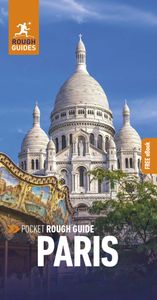
Travel advice for France
From travel safety to visa requirements, discover the best tips for traveling to France
- Eating and drinking in France
- Travel Tips France for planning and on the go
- How to get to France
- Outdoor activities
- Shopping tips for France
- Best time to visit France
Find even more inspiration here

- Travel Tips
written by Rough Guides Editors
updated 26.04.2021
Ready to travel and discover France?
Get support from our local experts for stress-free planning & worry-free travels.
- Travel advice
- Where to stay

The Essential France Travel Guide
Welcome to The Essential France Travel Guide ! From gorgeous coastlines and rolling vineyards to bustling romantic cities and historical sites, France has it all. And of course, it has all the wine and cheese you could ever imagine. As a matter of fact, we think you’ll fall in love with all things French as soon as you arrive!
People often think of Paris when planning a trip to France, but the City of Lights isn’t all that the country has to offer. France is ideal for slow travel. Just pick any of the delightful towns scattered from the coastlines of Normandy down to the Mediterranean Sea to explore.
This France travel guide advises you on the best insights on cities and destinations, designed with the slow traveler in mind. If you desire to know France more deeply and participate in cultural exchange, this guide is for you!
TABLE OF CONTENTS
What can I expect from France?
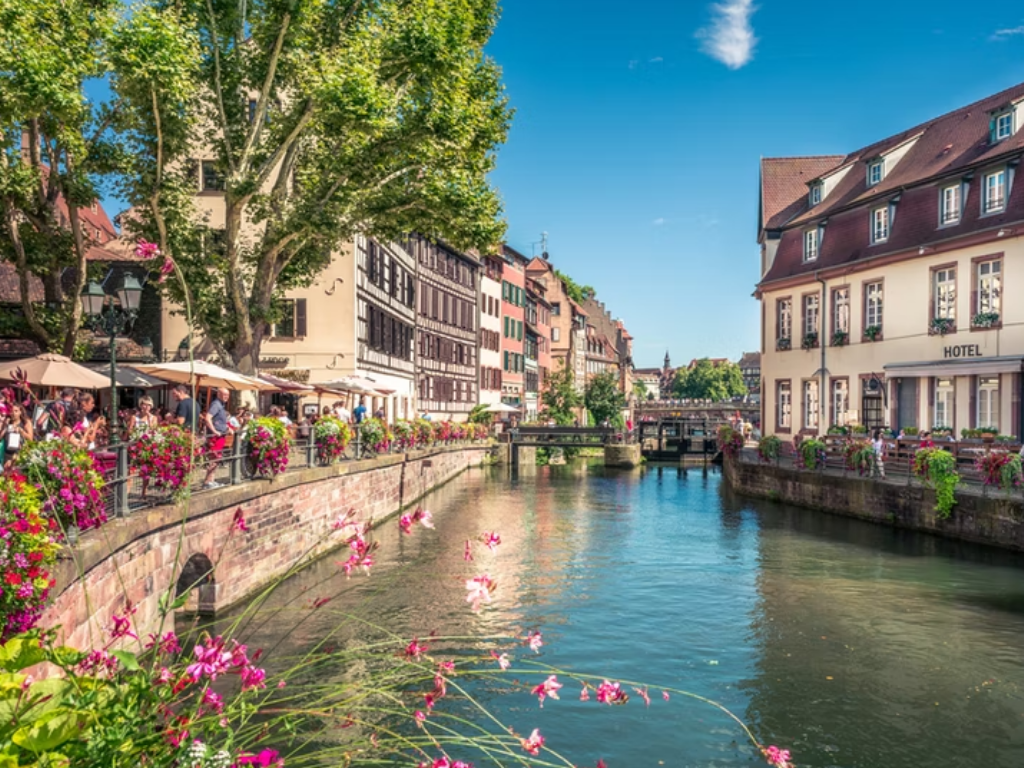
Overview: Outside of Paris, it is easy to take your time in France. Most people aren’t in much of a hurry. Plus, it’s easy to get around the country with or without a car. Grab a baguette and a bottle of wine, and you’re set for the day.
Currency: The Euro (€) is the official currency of France
Electrical Plug: France uses the type C and the Type F electrical plugs, which have two round posts side-by-side. Get a plug adaptor to use your electronics in France.
Visa: France is a part of the Schengen area. A tourist visa allows Americans to enter Europe for a total of 90 days. You do not need to apply for a visa ahead of time; upon arrival, just let Customs know you are in Europe for touristic purposes.
Religion: France is a secular state with some of the strictest laws in the world separating church and state. Although France is historically Catholic, most people identify as atheists or agnostic. France is also home to a visible Muslim population.
Languages: French is the main language spoken in France. Local dialects are spoken throughout the country. For example, Alsatian, a dialect of German, is widely spoken in parts of the Grand Est. Arabic is also spoken given the historical ties between France and North Africa.
Keep in mind that the French are proud of the French language. Generally, they are uncomfortable speaking English, unless absolutely necessary. To emphasize, signs and other types of information are rarely printed in English, especially in the French countryside. Brush up on your French before you go , or at the very least, download Google Translate!
Opening Hours: Standard work hours in France are 9 am-6 pm with a two hour lunch break around 12-2 pm. For the tourist, the key hours to know are: 1) bakeries open as early as 6 or 7am, and 2) retail generally opens at 10am. In other words, you can enjoy your coffee and croissant before hitting the local boutiques! Additionally, it is common for small businesses to be closed on Mondays after a busy weekend.
Regions: France is divided into 13 different administrative metropolitan regions including: Auvergne, Brittany, Bourgogne, Corsica, Centre-Val de Loire, Grand Est, Hauts de France, Ile de France, Nouvells Aquitaine, Normandy, Occitanie, Pays de la Loire, and Provence-Côte d’Azur.
Festivals/Celebrations: France has a variety of different festivals located all throughout the country. Some of the most popular French festivals include: Cannes Film Festival (May), Nice Carnival (February/March), Les Choregies d’Orange (celebration of Opera), Tour de France (21 days in July), Bastille Day (France’s independence day on July 14th), and the Menton Lemon Festival (February).
Alsace (Grande Est) is well known for its month-long Christmas markets (December). Here, the magic of the season meets hot wine, ice skating, exquisite Christmas displays, and local crafts in a festive atmosphere.
Things to Do and See in France
France is so much more than what you see in the movies. The entire country has fairytale villages and castles, towering, French gothic cathedrals, and of course romance around every corner. Each city, region, and village has its own unique style and variety of things to taste, see, and experience. It is impossible to fit everything there is to do in one France travel guide. But, we have put together the best experiences to inspire you to slow down and immerse yourself in French culture.
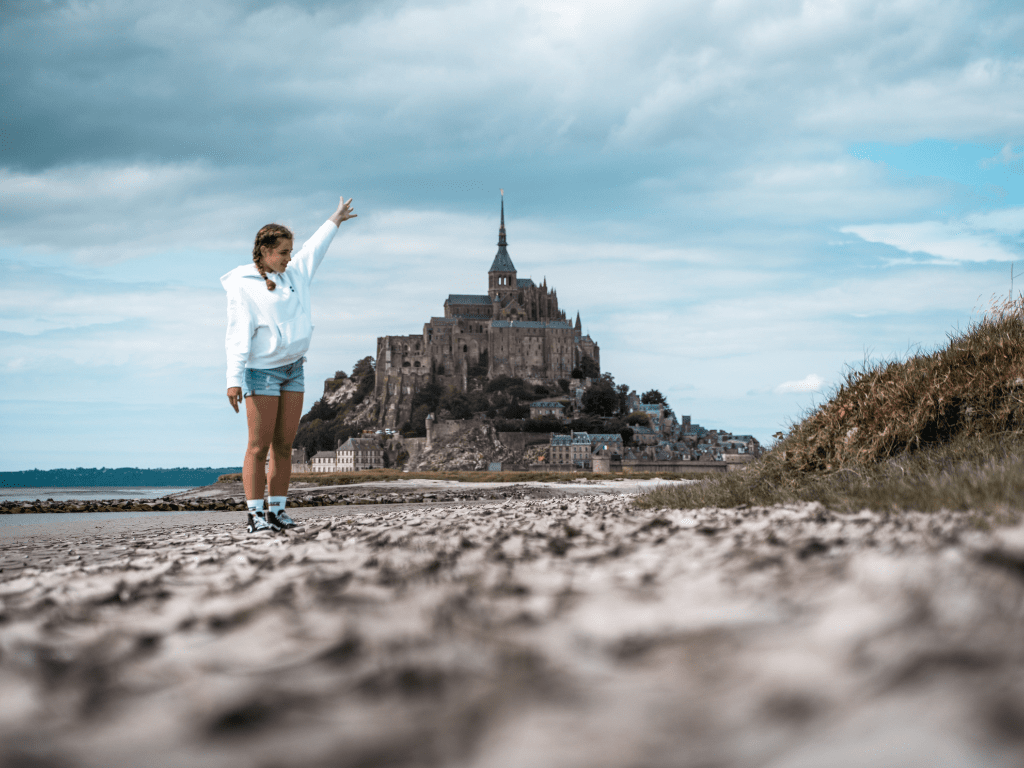
Top Things to Do in France
- Paris – More often than not, Paris will be your starting point in France. The city is not only known for its beauty and romance, but also for its amazing architecture, historic sights, and mouth-watering French cafes and restaurants. Some of the best things to do in Paris are: the Musée de Louvre , Eiffel Tower, Notre Dame Cathedral, Catacombs of Paris, Moulin Rouge, Arc de Triomphe , the Seine River, and the Musée d’Orsay .
- Mont Saint-Michel – Situated at the top of a tidal island this UNESCO Heritage site cannot be missed. Mont Saint-Michel, located on the border of Brittany and Normandy, is protected by fortified walls, in keeping with the magic of the middle ages. What was once a monastery is now one of the most visited spots in the country. To maximize the experience, consider staying on the island overnight to explore and capture photos in the moonlight.
- Hop a bicycle in Strasbourg – Located in the Grand Est and home to the European Parliament and Council of Europe, the city of Strasbourg boasts architectural wonders from every period since Medieval times. The timbered-lined City Center is also UNESCO World Heritage Site. Best of all, you can enjoy these sights by renting Strasbourg’s favorite form of transportation: the bicycle. Then, cycle over the Europe Bridge to Germany and back again!
- The Loire Valley – The Loire Valley itself is a UNESCO Heritage Site. Famous for having an abundance of châteaux (castles) (around 300 in existence) in the area, the valley stretches 174 miles (280 kilometers) down the river. The Chateau de Chambord is the largest castle and is well worth a visit . This is surely superb spot for slow and immersive travel through the countryside of France.
- Provence Lavender Fields – Visiting France in the summer comes with its perks, especially Lavender season (mid June-mid August). In the south of France throughout the Provence region, lavender fields take over the landscape, stretching for miles and miles in every direction. In addition to the lavender fields, the entire region of Provence is filled with charming villages and year-round markets.
- Gorge du Verdon – Located in the south of France, the Gorge de Verdon will amaze you with the most turquoise and teal-colored waters in all of France. The 15 mile (24 km) canyon stretching above the Verdon river, is an ideal place for low-impact water sports such as kayaking or stand-up paddle boarding.
- Le Puy Camino – An extension to the Camino de Santiago in Spain , hikers can begin on a variety of French trails, the most popular being the one beginning at the Cathedral in Le Puy-en-Velay, France.
- Saint-Tropez Beaches – The coast of Saint-Tropez is any beach lover’s dream. Known as “the pearl” of Cote d’Azur, it has arguable the best coastline in the country with it’s crystal clear waters, white sands, and views for days. Additionally, the unofficial yachting capital of France offers many sailing and boating opportunities to see the coastline from a distance.
- Cannes Film Festival – One of the most popular and attractive events in the world for art and film lovers is the Cannes Film Festival. The festival is known for recognizing high-caliber films, and spectators can take in filmmakers and celebrities making their way down the red carpet, all while having some of the best views in Cote d’Azur.
- Go Skiing in the French Alps – While you may think of Switzerland when you think of the Alps, France shouldn’t be left off the list. Stretching across the southeastern part of the country, the French Alps is one of the most popular destinations for getaways and winter sports.
- Chateau Vaux-le-Vicomte – This historic monument is the representation of the first France Formal Garden, dating back to the 17th century. The Chateau Vaux-le-Vicomte, located just 34 miles (55 km) southeast of Paris in Maincy, is known for its geometric layout of gardens and landscaping, fountains, and eye-catching historical architecture. It’s perfect for a afternoon stroll. But, if you can, go in the evening for a candlelit dinner when the romance is gleaming.
- Wine Tasting in Bordeaux – A trip to France is not complete without going out for a wine tasting, and Bordeaux is the best place to be. While there are dozens of vineyards all over the country, the wines of Bordeaux are some of the tops in the country. The city itself is also a nice change of pace from Paris, being more slow-moving and walkable, and there are many vineyards to visit in the region.
Book a Tour in France
Browse amazing tours in France organized by our friends at GetYourGuide , and make the most of out your trip.
Typical Costs When Traveling
Accommodation – Costs have been rising higher and higher in recent years, but France is a country fit for any budget. Depending on your traveling style, hostels are available in most major cities, starting on average at 30€ and up per night. Budget-friendly guesthouses and B&Bs (75-100 €/night) are located throughout the country, as well as luxurious châteaux (200€/night) and hotels. Vacation rentals are very popular and can be booked through sites like Airbnb ( Get a discount with my link ) or VRBO .
Food – A traditional French breakfast consists of coffee, a baguette with butter and jelly, a viennoiserie (e.g. croissant or pain au chocolate ) and a glass of orange juice for $10. Lunch tends to last long in France, typically being the longest meal of the day. Dinner time, on average, starts around 7 pm. It is very easy to find a prix-fixe meal for lunch or dinner for 10-20€. Add wine for an average of costs 4€. Keep in mind that Europe, unlike the USA, does not offer free refills for drinks. That means each one must be paid for separately.
Transportation – The transportation system in France is very sophisticated and affordable, and you can easily get around larger cities using public transportation. For travel in-country, SNCF operates a system of trains ranging from commuter to high speed long distance trains. More on trains and busses in the booking section, below . You may easily search trips and book online, but please note fares are not typically available more than 6 months in advance. For the best price, book around one month in advance. To avoid lines—and due to lines being paperless post-COVID—pre-purchase online.
Activities – There is no shortage of activities in France. Most museums and historical sights have a small fee, if any fee at all (students and kids are usually free). Depending on your budget and travel style, activities can be easily done on a budget, or splurge for more sophisticated or drawn-out activities for a more immersive France visit.
Suggested daily budget – 40-80 EUR / 40-80USD (Note: This is a suggested budget assuming you’re staying in a hostel, eating out at casual establishments, and using local transportation. Using the budget tips below, you can always lower this number. However, if you stay in luxury accommodation or splurge on meals, expect this to be higher!)
Money Saving Tips
Traveling slowly through France can be a good thing or a bad thing for your wallet. Depending on your travel style, a long and immersive trip may mean sticking to a tight budget. However, once you get the hang of French and European culture—something we hope this France travel guide is doing—it’s not so hard to save a a few euro.
- Skip the sit down restaurants – While a sit-down meal is something recommended to do at least once in France, once is enough. It is very easy to find small cafes with take-out or street food options in most major cities. The taste is just as good and is usually half the price.
- Rent a Bike – Like many other tourist destinations, you can easily find bikes and scooters to rent for a few hours of your trip. Pick one up, and drop it off at any other city bike stand in the city. Just check signage to rent and pay via credit card using the mobile phone app.
- Book ahead in the high season – Budget accommodations in highly trafficked cities have a way of selling out in the high season. If you are sure of your travel dates, consider booking several weeks or months in advance in spring and summer.
- Sharing Economy Services – Download the BlaBlaCar ridesharing APP to see if someone is driving to your destination, and split the cost of gas. For accommodations, rent an Airbnb , couchsurf , or participate in a work exchange . (Of course, use good judgement if deciding to use any of these services.)
Where to Stay in France
In whatever city you travel to in France, it’s best to stay in the city center when possible. Try to book accommodation within walking distance (15 minutes) to the center. If nothing else, book a place close to a metro station for easy access to public transportation.
In smaller cities where you can walk the entire length of the city on 20-30 minutes, any clean, appealing location will be suitable.
Some lovely places to stay in France are:
- The ibis hotel chain has great properties at a great value! ibis Paris Bastille Opera 11th had the most beautiful lobby and breakfast area, too.
Traveler Tip: Look through reviews prior to booking to see how previous guests describe the atmosphere and nights sleep.
What to Eat in France
The typical French breakfast begins around 8-9 am. It is typically something light such as bread or a pastry, with a tea/coffee. Eggs are also common, typically on a croissant sandwich.
Lunch is enjoyed later in the day around 12-2 pm, and in many larger cities, shops and other buildings will shut down and close for lunch hours. Lunch tends to be the longest meal of the wine in France.
Dinner time in France starts around 7 pm. This tends to be the larger meal of the day, and one that can last late into the night, especially if you enjoy a glass of French wine or two. In France, eating dinner is not simply dinner, it is an event to gather and meet with friends, talk about your day, and relax. Keep in mind, that when eating out in most French restaurants, the bill will not be brought to you until you ask for it. Tipping is not required or expected, but a small tip is always appreciated.
Best Food to Try in France
Due to the entertainment industry and media, when most people think of France, what often comes to mind are baguettes, cordon bleu, or caviar.
However, there is so much more to French cuisine than portrayed on television. Here are some French favorites not to miss:

Macaroons – This delectable French pastry may be a popular treat all around the world, but a French macaroon is a mouth-watering delight. Most pastry shops will have homemade fresh macaroons made daily. Certainly, stop in for a few treats.
Cassoulet – A favorite dish of the French is cassoulet . This is feel-good food at its finest, consisting of white beans slowly stewed with meat. The type of meat will vary, but duck and pork are most commonly used. Some chefs will add vegetables for unique flavors.
Bouillabaisse – Originally from Marseille, bouillabaisse is a fresh fish stew that features herbs and spices. The recipe will vary from chef to chef, and city to city, but the most important part is the fresh fish. If you enjoy seafood, you must try bouillabaisse .
Additionally, cheese: If you are a cheese connoisseur or a food lover of any kind, don’t forget to taste the awesome variety of cheeses in France—the stinkier the better. Your taste buds will thank you later.
How to Get Around France

Public Transportation – You will find a great network of public transportation including metro, rail, and bus services. Plan to do a lot of walking and enjoy pedestrian-only areas. Many smaller cities are completely walkable if you stay in the city center, meaning you will not need to take public transportation at all after arrival. Just use your own two legs!
Train – The transportation system in France is modern, and you can easily get around larger cities using public transportation. For travel in-country, France has 2 main Train lines: SNCF and OUIGO, operating in all major cities, and dozens of smaller villages as well. Most trips are easily searched and booked online , but please note fares are not typically available more than 6 months in advance.
Bus – If you have a little more time and/or want to save money, buses are typically cheaper than trains and run regularly. Some towns not serviced by train are accessible by bus, but please be aware they may only run once per day or only on certain days of the week. Check out our recommended booking tools to search and book schedules. Flix Bus , is a popular and well-known bus service in Europe, having routes throughout France, sometimes even as low as $2.
Budget Airlines – We prefer enjoying the landscape and the ease of traveling by train. Nevertheless, Europe boasts many budget airlines both to get to/from France as well as to travel within France. Prices are often similar to trains, so take into account the total travel time to decide if taking a flight is worth it to you. Ryanair is a popular budget airline in Europe that we have used many times. The planes are small, but you get what you pay for.
Car Rental – There are many towns and hamlets worth a short visit, so for the more adventurous heading off the beaten path , or a road trip through the Loire Valley perhaps, we suggest renting a car. Using highways can get pricey with an increase in toll booth prices, but can be avoided using less popular routes. France drives on the right side of the road (same as the USA), and stick shift cars are most common. Prepare to pay a premium to rent an automatic.
Rideshare – For the budget conscious and less risk-averse, ride shares using the Bla Bla Car APP are an option. Simply search for a ride, meet your driver, and split the cost of gas. This can be a great option to jump to a small village and an opportunity for cultural exchange . Additionally, especially in the south of France, hitchhiking is often very common. We know multiple people who have, in fact, hitchhiked the entire country (though it’s not our cup of tea)! When choosing a ridesharing option, it is most important to be safe. Use your gut and be smart; if something feels off, it probably is. Assess your risk, and be sure to get travel insurance .
When to Go to France
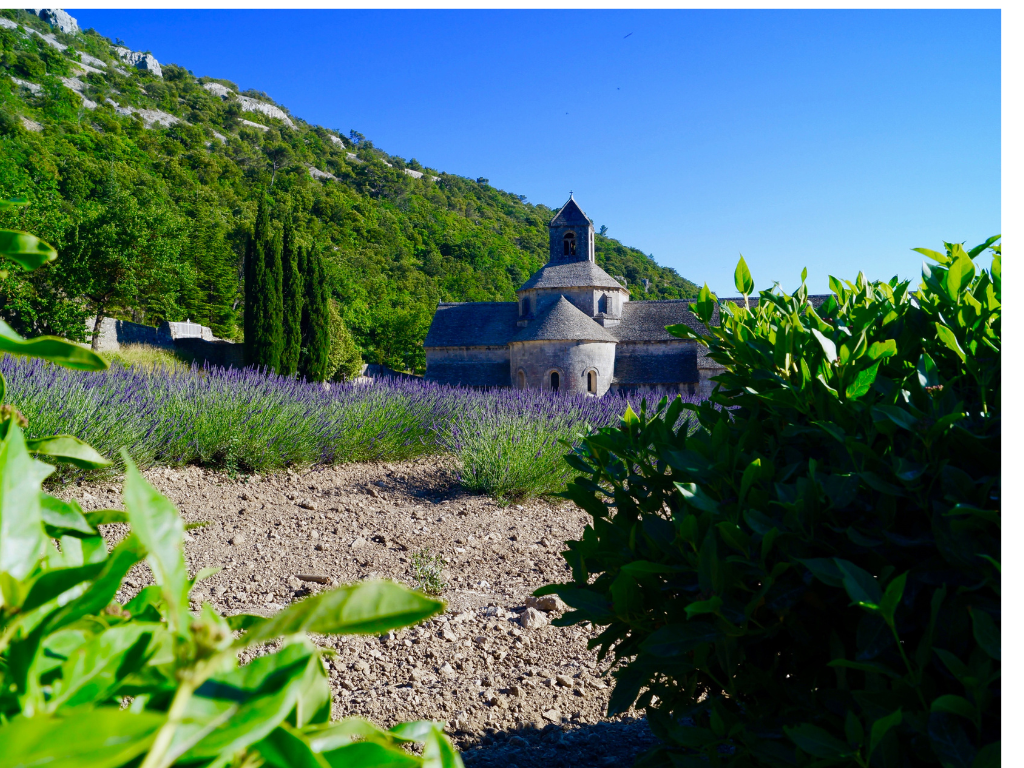
France is a country that experiences all four seasons. Depending on which region of France you are visiting, locations and times may vary for when is the best time to visit. Overall, springtime offers a combination of good weather, fewer crowds, and gorgeous views.
While France has amazing summers, it comes with big crowds and higher prices. Plus, the French are not known for a love for air conditioning, so be prepared to sweat.
September-November tends to be the shoulder season in France, offering lower rates, and attracting fewer visitors .
How to Stay Safe in France
France is safe for travelers, for the most part. There will always be petty crime in major cities and pickpocketing isn’t unlikely. Stay alert, and watch out for your surroundings at all times. If you are out after dark, stay in a well-lit area. In short, be smart and trust your instincts.
Riots and strikes are fairly common in France . When this happens, try to avoid major events or important buildings, and check for schedules (e.g. train station, buses, and airplanes) or announcements in advance of travel.
Luckily, if you book online, more and more booking platforms tend to send emails and updates when strikes are occurring and will alter schedules.
Don’t forget to purchase travel insurance with World Nomads prior to your trip in case of an emergency or trip interruption. Check out the many benefits of travel insurance on our dedicated World Nomads page , or get a quote below.
Best booking tools for slow travelers in France
Check out our recommended booking tools for self-planned itineraries:
- Google Flights – Start your planning here. To get an idea of flight prices and routes, browse Google Flights by using the explore map.
- Skyscanner – Find flights that other search engines miss.
- Expedia – Best all around booking tool, search for hotels, flights, cars, vacation packages, and cruises. No matter where you are going, this booking tool help every type of traveler get the best value every time.
Accommodations:
- Booking.com – Access a clear, easy, and transparent hotel booking process that includes hotels, hostels, guesthouses, and more. It’s great for anyone who likes to stay organized and do research.
- Hostelworld – The leading provider of online hostel reservations to budget, independent, and youth travelers, Hostelworld has has a great search interface and the largest inventory of hostels to choose from.
- Airbnb – Rent a room or entire apartment to live like a local. (Use my link to get $65 off your first stay)
Transportation:
- Rome 2 Rio – Begin planning your in-country travel with this website offering air, train, bus, or taxi routes. (I like to use this as a research tool.)
- Trainline – Europe’s leading train and coach app, get the best available prices, times, and train/bus tickets for your journey. You can also purchase train and bus tickets directly from suppliers.
- Eurail – This all-in-one train pass offers flexible access to most trains across Europe and is good for a backpacking trip. Go wherever you want, whenever you want.
- Bla Bla Car – Find a carpool ride with this ridesharing APP. Just chip in for gas!
Activities & Tours
- GetYourGuide – Find and book city tours, day trips, and cultural experiences.
- EatWith – Join culinary experiences led by passionate hosts and chefs.
Travel Insurance:
- World Nomads – Don’t forget to protect your investment from trip interruptions to unexpected injuries.
- SafetyWing – Designed to meet the medical and travel needs faced by digital nomads and remote workers, insurance covers unexpected illness and injury as well as emergency travel-related issues like lost checked luggage.
Go to our resources page for more booking tools we use to plan our trips.
Gear & Packing List
The landscape and climate can change drastically in French, so pack a variety of clothing and footwear if you’re planning to travel extensively. While the south is known for it’s sunny beaches, the northern coast can be cool and wet.
Check out my packing list for Europe . In addition, be sure to include the following for France specifically:
- a sun hat (summer) – women’s sun hat | men’s/unisex sun hat
- lightweight summer dress (women) or dri-fit button down top (men) for evenings out (summer)
- bathing suit (summer) – you never know when you might like to go for a swim
Shop My Travel Essentials

Expat Tip: The trench coat is the ultimate fashion statement in France, and super easy to pack!
France City & Regional Guides
Although this France travel guide is written on a country level, we recognize there are dozens of cities and smaller towns that allow visitors to slowly travel through France.
With this in mind, take a look at our France regional and city articles for the best tips on how to enjoy slow travel in France:
- 10 Best Day Trips from Strasbourg for Slow Travelers
- 12 Things to Do in Aix-en-Provence
France Guidebooks & French Tools
Check out our recommended France guidebooks, apps, and language learning tools to help you learn about the French language and culture.

Disclosure: Some of the links provided on this website are affiliate links from which I may make a commission if you make a purchase. See disclaimer for more information.
Blogger & Ex-Spanish Teacher
Tristina Oppliger has traveled to 35+ countries on five continents. Having previously lived in Spain, she loves studying foreign languages and cultures. In fact, she has a Master's in Foreign Language Education and is a former Spanish Teacher! Tristina is passionate about living free—remote work, exploring the world, and finding adventure wherever she goes.

Get our Rail Planner app
Plan your trip, get extra discounts, and show your Pass as you go.

Our favorite spring routes
Celebrate spring with these 7 off-the-beaten-path train routes

All about seat reservations
Everything you need to know about booking your seats

Alternatives to Busy Routes
Travel between popular European cities without seat reservations

Through our Chatbot in the bottom right corner.

Ask the Community
Browse questions from fellow Eurail travellers, or ask your own!
- Plan your trip
- Suggested Itineraries
France Itinerary
- Order overview
- Reservations overview
- My Trips & Travelers
- {{translatedTraveler}} {{#promotional}} {{currencySign}} {{standardPrice}} {{/promotional}} {{quantity}}x {{currencySign}} {{finalPrice}}
- Child {{childPasses}}x FREE
- {{translatedPassType}}
- {{translatedValidityPeriodDescription}}
- {{translatedClass}}
- Remove Pass(es)
- {{variant.localizedTravelPackDescription}} {{quantity}}x Free
- {{variant.localizedPassUpgradeDescription}} {{quantity}}x {{currency}} {{price}}
- Your order will arrive by {{expectedDeliveryDate}} 1 x {{currency}} {{price}}
Your cart is empty
Discover the best of French life with this spectacular France itinerary. Start your trip in beautiful Paris and let the train carry you down to the sunny Mediterranean, while cruising through hillside vineyards and endless lavender fields. Reserve a seat on France's TGV high-speed train for fast and comfortable journeys between major cities. Or take it easy and explore the French countryside with RET regional trains, one charming village at a time. When traveling with a Eurail Pass , you simply can't miss out on la belle France .
Itinerary in short
Cities visited in this trip:.
Click here or on the map to view this route in our Trip Planner.
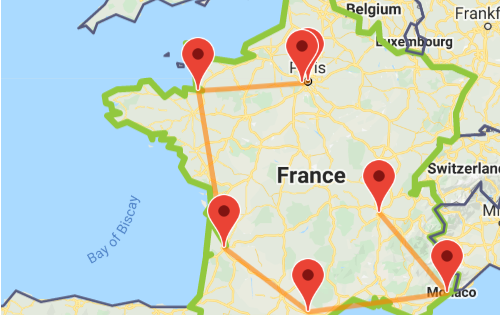
For this itinerary we recommend:
- Eurail pass: France
- Travel days: 7 days within 1 month
Most of the high-speed trains in France, like the TGV and some InterCités, require reservations. These reservations are not included in your Eurail Pass. Make sure to book your seats in advance, there are limited seats available for Eurail Pass holders. It's also possible to avoid reservations all together, simply by taking regional trains .
Travelling to France or Italy with a Eurail Pass?
Let us help you get more out of your trip. Sign up to get discounts and insider tips for your destination , including top attractions, local food and drink experiences and more – all delivered straight to your inbox. Just tell us when your trip starts.
Paris, France
Paris is known as the city of love, and what a lovely place it is! Take a stroll underneath the famous Eiffel Tower and have a glass of wine on the banks of the Seine river. You can do some fancy shopping on the Champs Élysées by day and visit the magnificent Paris Opera by night. The city is a haven for culture vultures, who could spend days exploring the wonderful collection of the Louvre museum . Make sure to visit the art district of Montmartre , where famous painters like Picasso, Dalí, and Van Gogh used to work. Here you'll also find the pristine white Sacré-Coeur Basilica , the second most famous church in Paris, after the hunchback's hideout - the Notre Dame .
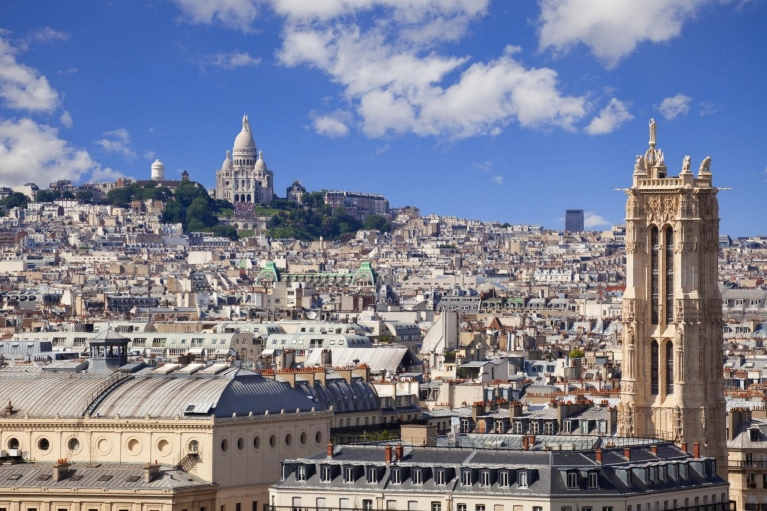
From Paris to Versailles
Travel time:
Gare Montparnasse
Versailles, France
Versailles-Chantiers
For splendor with a capital S, visit the magnificent Palace of Versailles . A symbol of flamboyance, it was the royal palace for two centuries right up to the French Revolution. Take a stroll around the Versailles Gardens to follow in the footsteps of Louis XIV, the infamous Sun King. Inside the palace, you’ll find extravagance in every room. Don’t miss out on the Royal Apartments and the fabulous Mirror Hall (Galerie des Glaces). Visit the Hall of the Battles (Galerie des Batailles) to see France’s military history in paintings and in sculptures.
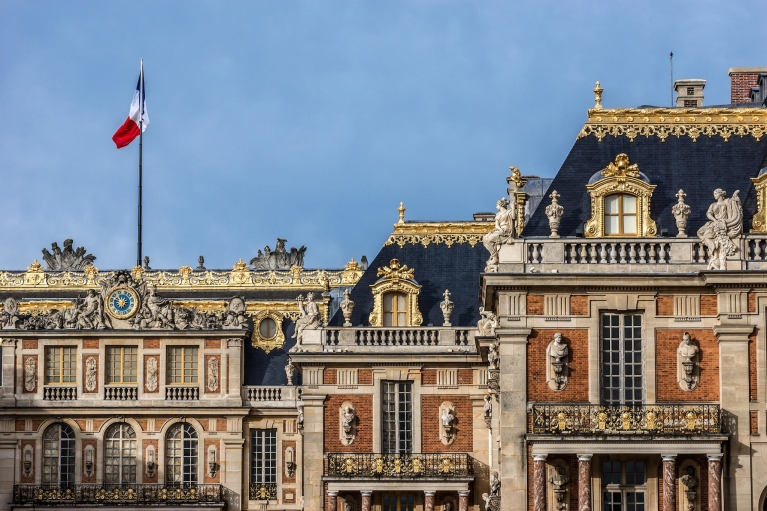
From Paris to Mont St. Michel
Reservation needed:
Reservation required
Rennes, France
Gare de Rennes
Mont St. Michel, France
Mont St. Michel
Mont Saint-Michel, France
An hour out of Rennes, just off the coast of Normandy, you'll find the tiny island of Mont Saint-Michel. It is dominated by the monastery from which it draws its name and was an important place of pilgrimage in medieval times. These days, Mont Saint-Michel is one of the major tourist attractions in France. For centuries, you could only reach the island when the tide was low, but these days a bridge connects the town to the mainland. Take a regional train from Rennes to get to Mont Saint-Michel.
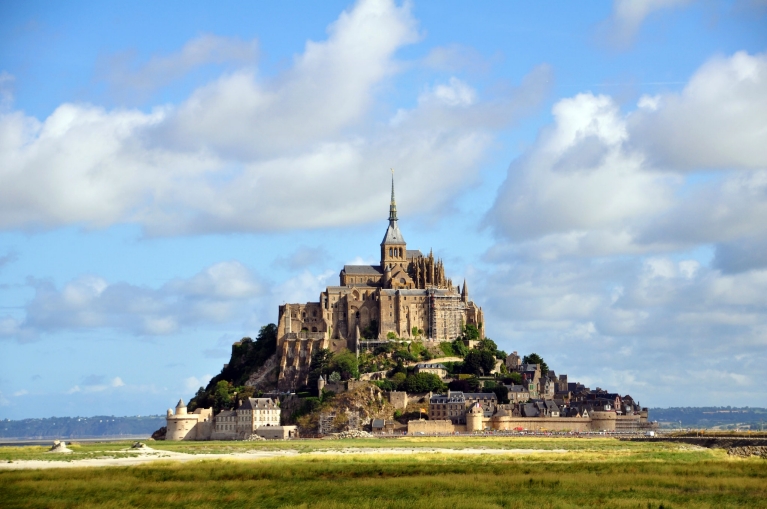
From Mont St. Michel to Bordeaux
Nantes, france.
Gare de Nantes
Bordeaux, France
Gare de Bordeaux-St. Jean
The port city of Bordeaux is France’s uncontested wine capital. You’ll find many luscious vineyards and charming chateaux in the region, which have been producing wine since Roman times. If you're interested in a wine tour , by foot or by bike, beautiful Bordeaux is the perfect place for it! The city itself is rich in architectural highlights from all periods. Climb to the top of the bell tower next to Bordeaux Cathedral (Cathédrale Saint-André) for a stunning view of the city. In the Musee des Beaux-Arts de Bordeaux you can find a large collection of masterpieces by famous European painters.
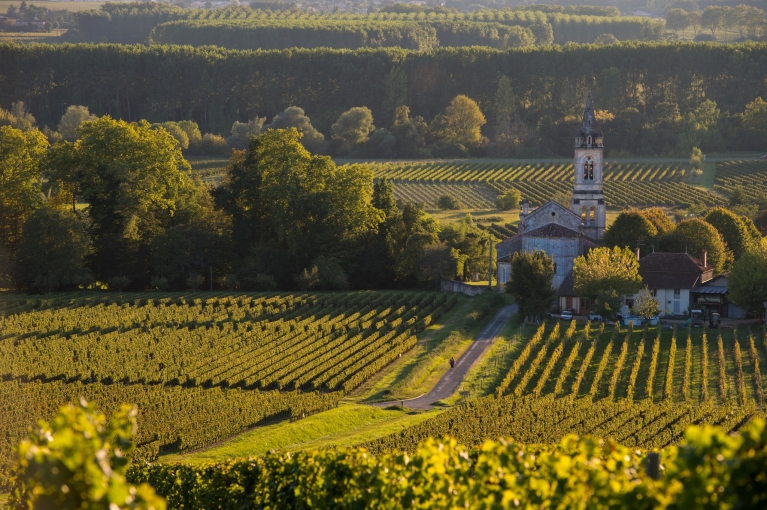
From Bordeaux to Carcassonne
Carcassonne, france.
Gare de Carcassonne
On your way to the sunny Mediterranean, hop off the train in Carcassonne for a sight you'll never forget. The town's medieval citadel will make you believe you’ve stepped out of a time machine. Take a walk through history and visit the Chateau Comtal and the gothic Basilica of Saint-Nazaire . Stand in front of the impressive Narbonne Gate where the centuries look down upon you.
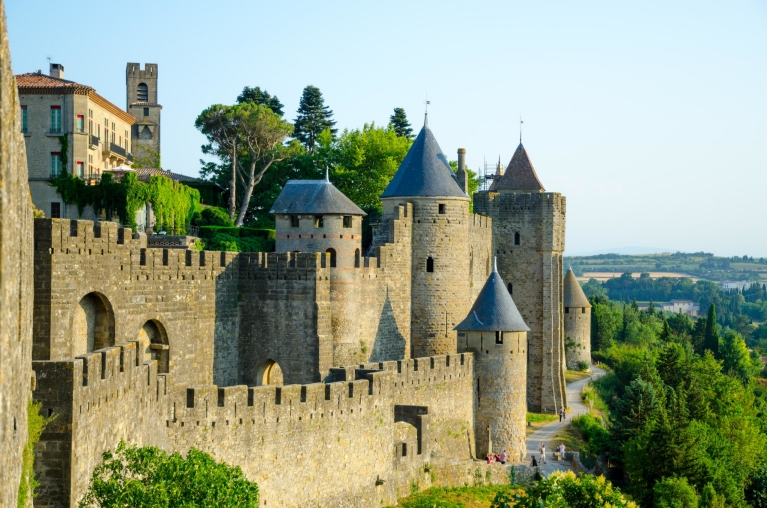
From Carcassonne to Nice
Marseille, france.
Gare de Marseille-Saint-Charles
Nice, France
The city of Nice is located on the Mediterranean coast near the Italian border. It’s one of the most popular tourist cities in France, second only to Paris. Enjoy the gentle sea breeze on the Promenade des Anglais and work on your tan on Nice’s beautiful beaches. Only twenty minutes away from Nice you’ll find the tiny city-state of Monaco . Take a daytrip there to see the yachts in the marina and the Lamborghinis in the streets. If you’re feeling lucky, you can place a bet at the famous Monte Carlo casino.
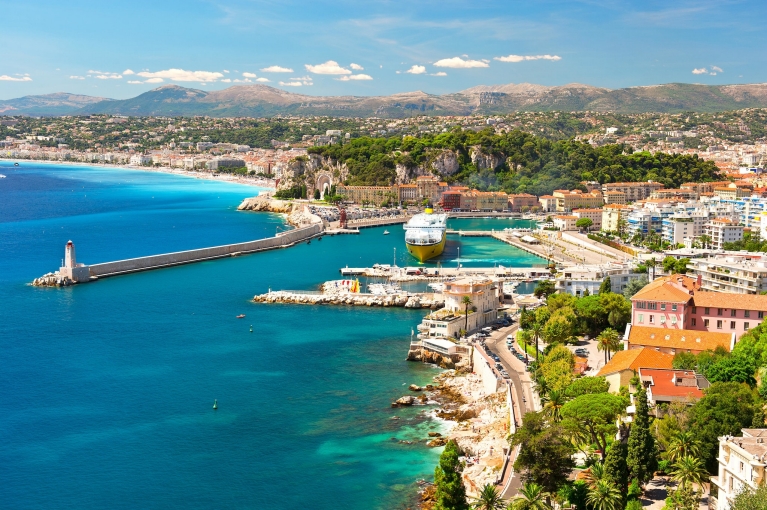
From Nice to Lyon
Avignon, france.
Gare d’Avignon Centre
Lyon, France
Lyon Part-Dieu
If you’re making your way back to Paris, the city of Lyon is the perfect stopover. For centuries now, Lyon has been known as the gastronomical capital of France. Go to a bouchon , a typical Lyonnais restaurant, to taste authentic local cuisine and have a glass of Beaujolais wine. In Lyon's bustling center, you’ll find plenty of interesting sights. Have a look inside the Basilica of Notre-Dame de Fourvière and observe the city from the top of Fourviere hill. If you’re looking for some peace and quiet, visit the Parc de la Tete d’Or , one of the most beautiful parks in France.
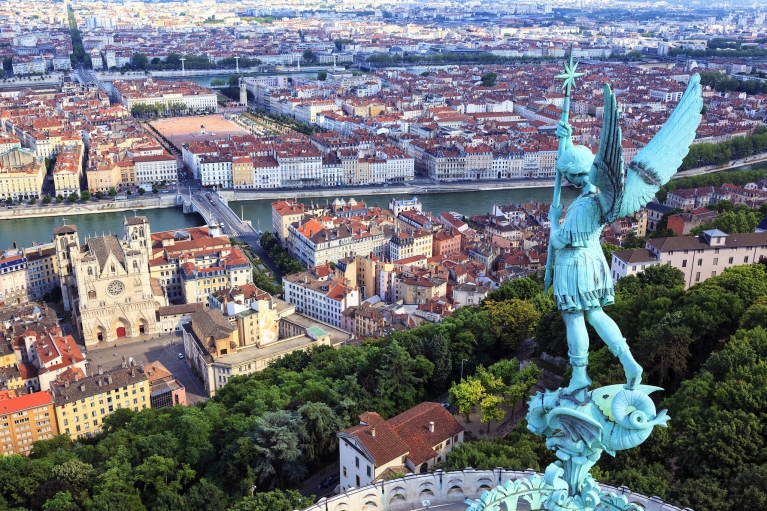
Experience France with the Eurail France Pass!
Change of currency.
You cannot change the currency once you have a Pass in your cart. Remove the Pass, and then change the currency on the website header.

2 Weeks in France: 3 itineraries
DISCLAIMER: This post might have links to travel services and products that we enjoy. We might make a commission from it at no extra cost to you.
Do you know that France is the most visited destination in the world ? Year after year, France receives 90 million tourists from all over the world. It’s undeniable that choosing where to spend 2 weeks in Europe is difficult.
There are so many to see with so little time. But with France, a person has to visit it at least once in their lifetime. If there are other places in Europe you want to see, you can plan a 2-week South Europe trip .
France is a country well-known for many things, including fashion, food, wine, football, and of course, Paris, the city of love. The French language is even dubbed the most romantic language.
Europe’s highest mountain can be found here, and their gastronomy was even granted a UNESCO World Heritage status. For cheese lovers, France has 1,600 different types of cheese, so you’ll never run out of options. Escargot is also something distinctly French that is a must-try for those who are adventurous in terms of food exploration.
Aside from that, a lot of people include France in their bucket list of places they want to visit, that’s why it’s the world’s most popular tourist destination. The reasons are endless, whether it’s because of the museums or the Eiffel Tower.
Below, you will see three different itineraries for those who want to stay for 2 weeks in France. Aside from that, we’ll also provide you with travel tips on how to make your vacation more seamless.
THINGS TO KNOW BEFORE VISITING FRANCE
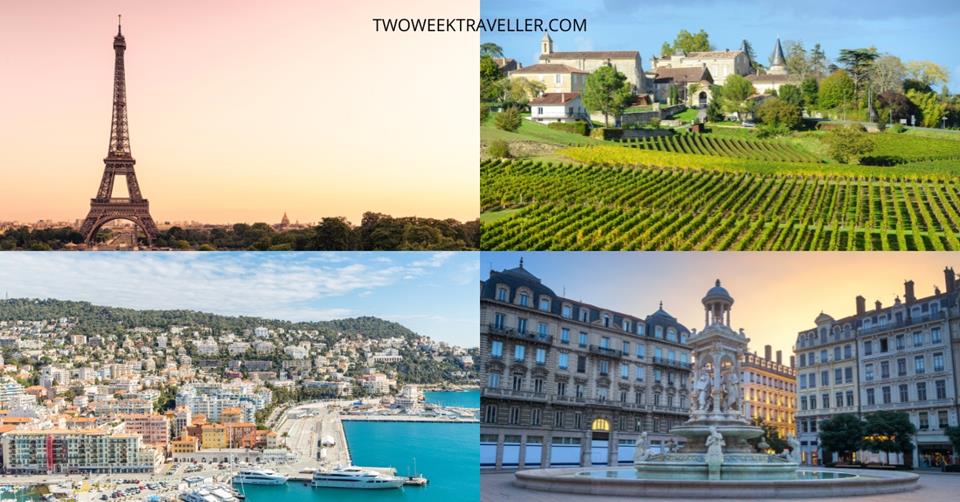
Before we get into the itineraries, there are a few things that you need to know first, such as getting around, the best time to go, as well as the language and currency.
It is imperative to know the modes of transportation available in various locations to account for the time it would take you to travel from one place to another. The information below will help you plan and write your own itinerary for 14-day France.
When is the best time to go to France
The best time to go depends on what season you prefer. April to May is their springtime, June to August is summer and September to October is their autumn seaso n. Their winter season is from December to February, so this is perfect for those who love or want to do winter activities.
However, please take note that summer is a peak season. There are more tourists, and the prices of accommodations and tours skyrocket. If you prefer the off-peak season, this is during February, right after the end of the winter season or sometimes after summer.
The shoulder seasons in France are spring (April to June) and fall (September to October). These periods offer milder weather, fewer crowds, and often lower prices for accommodations and flights compared to the peak summer months.
Getting around
There are various modes of transportation in France, including riding a train, ferry, taking a bus or coach, or boarding a plan e and of course, you can use a bicycle, rollers, or segway.
Taxis are the most commonly used mode of transport in the city. On the other hand, city buses are another option and more affordable.
Renting a car to travel around France is actually one of the most affordable and convenient modes of transportation. You will have control of your time and the freedom to change your mind about the destination. You don’t need to book domestic flights and buses beforehand.
Just remember that in France, most cars are still using a stick or manual transmission. So, make sure that you are comfortable using that.
Language and currency
I’m sure you already know that France’s main language is French . Now, it’s time to learn some of the most common phrases that each tourist should know
- bonjour – hello
- merci – thank you
- pardon – excuse me/sorry
- parlez-vous Anglais – do you speak English
- s’il vous plait – please
- au revoir – goodbye
France’s currency is the Euro, which can also be used in 18 other countries that are a part of the EU. The euro replaced France’s previous currency, which was called Francs, in 2002.
It’s easy to get around France and pay using your bank card. However, it is still best to bring cash in case your card doesn’t work or the terminal is glitching.
Cost of a 2-week France trip
France is one of the most popular destinations in the world making it one of the most expensive in the world especially during the peak season (summer and Christmas). Here are some ideas on what to budget:
- Affordable: Budget travellers might spend around €1,200 to €1,800. This includes hostel stays, supermarket meals or street food, public transportation, and free attractions.
- Mid-Range: For a comfortable experience with mid-tier hotels, some restaurant meals, domestic travel, and paid admissions, expect to spend about €2,500 to €4,000 .
- Luxury: A luxury trip with top hotels, fine dining, private tours, and exclusive experiences can cost €7,000 to €12,000 or more .
If you narrowed down the dates you plan to go, it’s best to make travel arrangements in advance – more specifically accommodation booking.
France implements the same visa policy as the entire EU . This means that if your passport is from North America, some Latin America, some East and Southeast Asia, and most of Oceania. Of course, if you have a passport from an EU member, you don’t need a visa to enter France, and you can stay for as long as you want.
Other travel tips
Top things to see in france (pinned map).
Click the icon on the top right to enlarge the map. Credit: map data: Google
2 WEEKS IN FRANCE ITINERARIES
France is one of the largest European countries regarding landmass and population. It is well-known for its culinary reputation, backed by the fact that it has the most Michelin-starred restaurants and chefs.
France is also famous for its historic towns, rich culture, and ancient waterways. 2 weeks in France might not be too much, but it’s enough to get a glimpse of its culture, history, and delicious food.
There are a few travel itineraries for 2 weeks in France below and you can decide which one you prefer or you can simply get some ideas and create your own .
Itinerary #1: First-time (Paris, Calais, Dunkirk, Nice, Marseille)
The first itinerary option for your 14 days in France includes the cities of Paris, Calais, Dunkirk, Niece, and Marseille.
Paris is one of the most beautiful cities in the world. Aside from the Eiffel Tower, Louvre and Notre Dame, it is also well-known for the terraces in its cafes. A family trip to Paris is also a great plan since you have Disneyland to visit together.
Calais, on the other hand, is a transport hub, a fishing port, and a centre for fish marketing. It is also France’s gateway to England. It’s also a known historical place, an awesome destination for history enthusiasts.
Nice is popular among tourists for its beautiful scenery , Mediterranean climate, and annual festivals and parades, one of which is the Carnival de Nice.
Marseille is the sunniest major city in the country , and since the historic sights are well-preserved, expect to be amazed by the castles, museums, churches, and old streets. It also has some local dishes, including Bouillabaisse and Pastis, which are both must-try.
Paris for 3 days
If you need further convincing to visit the city of love, then prepare to be amazed. For art enthusiasts, you’ll find one of the most famous paintings in the world here, in the Louvre Museum, it’s Mona Lisa by Leonardo da Vinci.
It also has an underground city called The Catacombs, and if you love taking long walks or going for a run and exploring nature, then you’re in for a treat because they have 450 parks and gardens.
If you’re going to spend two weeks in France, you can allot 3 days in Paris and then spend the rest doing day trips around the city.
The capital can be an expensive city to explore, but there are many free things you can do in Paris . this includes visiting artworks and historical sites, all at no cost.

Calais and Dunkirk for 3 days
You can get to Calais from Paris by riding a bus, boarding a train, or drivin g. The fastest option would be to drive, and the cheapest would be to ride a bus. Both destinations are popular for having a lot of historical sites, including places related to World War II.
To reach Dunkirk, if you’re from Paris, you could either ride the train or drive. Some of the top tourist attractions here include Musee Portuaire, Beffroi de Dunkerque, Dunkirk 1940 Museum, and Parc Zoologique de Fort Mardyck, among others.
Nice for 4 days
From Calais to Nice, you could ride the train, ride a bus, drive, or a combination of taking a train and boarding a plane, which is the most recommended option as it is the fastest.
If you’re coming from Dunkirk to Nice , you could also board the train, ride a bus, drive, or a combination of a train ride and boarding a plane, which, like the Calais to Nice route, is also the most recommended option.
Marseille for 4 days
You can go to Marseille from Nice by train, bus, or drive. The cheapest option would be to use a bus, and the fastest would be to drive.
Marseille is a popular destination because it is a lively and vibrant city . It has a well-known port that also carries a lot of historical value and still plays a big part in France’s economy. You can even take a ferry from Marseille all the way to Algiers in Africa. You can take boat trips or go on a cruise in Marseille.
However, if you want a true beach destination, Nice and Montpellier are the two best places to have stunning beaches near Marseille.

Itinerary #2: City, Beach, Wine (Paris, Bordeaux, Nice)
The second itinerary option for your 2 weeks in France includes the cities of Paris, Bordeaux, and Nice. Aside from being dubbed the city of love, Paris is also called the city of lights because it is among the first major cities in Europe to adopt street lighting.
Aside from the world-famous tourist attractions previously mentioned, Paris is also well-known for its contribution to world literature. Bordeaux is famous for its wine, so much so that it is considered the wine capital of the world.
It is also well known for its mansions, art museums, and cathedrals. It is even declared a UNESCO World Heritage Site for its wealth of architectural treasures. Plus, it’s the region to go surfing.
Nice is famous not only for its beaches and natural scenery but also because of its museums, food, and Roman archaeological sites.
Paris for 5 days
You’ll already be able to enjoy a lot of famous sights and sceneries in Paris. However, it only gets better from there as it is also close to Calais and Dunkirk, cities filled with traces of history.
Some of Calais’ famous tourist attractions include Burghers of Calais, Town Hall, La Cite de la Dentelle et de la Mode, Calais Lighthouse, and Musee des Beaux-Arts de Calais, amo
Bordeaux for 4 days
To reach Bordeaux from Paris, you could take a train or bus or fly. The most recommended option would be to ride the train, but the fastest is to board a plane.
Bordeaux is perfect for wine connoisseurs and surfers. Some of the most famous tourist destinations in this area are Cathedral St. Andre, Chateau de la Brede, guided winery tours, Pont de Pierre, River Garonne cruise, Cote d’Argent surfing spot, and much much more.
Nice 4 days
If you’re coming from Bordeaux, you can go to Nice by train, bus, or plane. You will save a lot of time if you take a domestic flight.
This French Riviera coastal city is popular for many reasons. Beautiful sandy beaches, museums, historical sites, and a port that will take you to many places in the Mediterranean Sea. From Nice, you can also reach the famous Cannes and Antibes.
Itinerary #3: City Enthusiast (Paris, Lyon, Nice)
The third itinerary option consists of the cities Paris, Nice, and Lyon. Whether you’re sipping coffee or tea on one of the cafe terraces of the Boulevard of Saint Germain or having a cruise at the Seine River, you could do all of these in Paris.
Aside from having world heritage sites, Lyon is also known as the gastronomy capital of France and is famous for the production and weaving of silk. While Nice is a Mediterranean seaside city with a temperate climate all year round and looks most like Southern Italy.
Paris for 6 days
We couldn’t get enough of Paris, just like everyone else, and for a good reason. We fell in love at first sight upon seeing the Eiffel Tower, but that’s not all there is with this magical city. Each neighbourhood (also known as a quartier) has its own charms.
The Latin Quarter has a labyrinth of narrow alleyways and pedestrian streets. Champs Elysees, on the other hand, is brimming with energy, and Montmartre has an old-world village charm. Aside from that, Paris is close to both Dunkirk and Calais, which are both havens for history buffs.
Lyon for 4 days
You can go to Lyon from Paris by train, bus, driving, or boarding a plane. The travel time would take two to six hours, depending on your choice of mode of transport. The most recommended option would be riding a train.
Aside from all of the wonders Lyon offers, you could even have a day trip to Geneva, Switzerland, as it is only 2 hours away. Visiting two countries in a day is such a cool thing to experience.

Ending your trip in Nice is a good decision since you can go hiking, enjoy the local food, and enjoy the beach – a true relaxing way a vacation should be .
The modes of transportation from Lyon to Nice include boarding a train, riding a bus, using rideshare, driving, and boarding a plane.
The travel time would take anywhere between three hours to eight hours, while a plane ride would be the fastest.
THINGS TO SEE AND DO IN FRANCE
Now that you have an idea of places to include in your 2 weeks in France itinerary, it’s time to show you the top and most popular attractions in each city.
Paris and around
- Opera National de Paris
- Boulevard du Montparnasse
- Jardin du Luxemburg
- Eiffel Tower – you can skip the line and hike up the stairs or take the elevator
- Notre-Dame Cathedral
- Louvre Museum – get a skip-the-line ticket without a guide or with a live guide
- Arc de Triomphe – scale the rooftop
- Pompidou Centre
- Seine River Cruise – you can book a 1-hour cruise or a cruise with a yummy gourmet dinner
- Champs-Elysees
- Sacre-Coeur
- Musee de Montmartre
- Moulin Rouge Cabaret Show – enjoy with champagne or a dinner
- Musee d’Orsay
- Luxembourg Gardens
- Catacombs of Paris – explore with an audio guide
- Sainte-Chapelle
- Grand Palais
- Versailles – join a guided tour
- Tuileries Garden
- Shakespeare and Company
Lyon and around
- Quartier Saint-John and Quartier Saint-Georges
- Musee de la Civilisation Gallo-Romaine
- Colline de la Croix-Rousse
- Presqu’ile District
- Parc de la Tete d’Or
- La Basilique Notre Dame de Fourviere
- Cathedrale Saint-Jean-Baptiste
- Rhone Valley – book a wine-tasting tour
- Place Bellecour
- Musee des Confluences – get your ticket in advance
- Teatro Galo-Romano
- Vieux Lyon – join a food tour or an Old Town walking food tour
- Lake Geneva, Switzerland – 2 hours from Lyon
- Musee Cinema et Miniature
- Saone River – get on a cruise and visit UNESCO sites or a cruise with a dinner
- Musee de l’imprimerir et de la
- Musée des Arts de la Marionnette
- Fresqye des Lyonnais
- Bartholdi Fountain
- Lyon Botanical Garden
- Vieille Ville
- Promenade des Anglais
- Castle Hill Park
- Musee Matisse
- Jardin Albert 1er
- Marc Chagall National Museum
- Villefranche Bay – enjoy a 1-hour cruise or have fun snorkelling
- Castle of Nice
- Modern and Contemporary Art
- Foundation Maeght
- Field of Lavender and Gorges of Verdon – best if visiting from spring to summer, then you must book a tour of the Lavender fields
- Cathedrale Saint-Nicolas de Nice
- Parc Phoenix
- Cimiez Monastery
- Basilique Notre-Dame de l’Assomption
- Opera de Nice
- Basilique Notre-Dame de la Garde
- Abbaye Saint-Victor
- Chateau d’Ilf
- Mucem – Museum of Civilizations of Europe, you can skip the line and save some time
- Old Port of Marseille
- Cathedrale La Major
- Massif des Calanques – have fun on a 5-hour cruise or explore with an e-bike
- Palais Longchamp
- Parc National des Calanques – sign up for a kayak tour
- Calanque de la creme
- Do a day trip to Provence – best if you have a max of 7 people in your group or book a wine tour to Provence
- Winery tours
- Place de la Bourse
- La Cite du Vin
- La Grosse Cloche
- Porte Cailhau
- La Cité du Vin – learn everything about the wine of Bordeaux by joining this tour
- Bordeaux Cathedral
- Saint Emilion – book a day trip sightseeing with wine tasting
- Musee d’Aquitaine
- Gran Teatro de Burdeos
- Bordeaux Museum of Fine Arts
- River Garonne – enjoy a cruise with a glass of wine
- El Espejo de Agua
- Jardin Public
- Book a walking tour to hit up the top sites in one go or a tour of Bayonne and Biarritz together
- Basque Museum
- Bayonne Cathedral
- Saint-Esprit
- Cathedrale Sainte-Marie de Bayonne
- Cerreau des Halles
- Bayonne Botanical Garden
- L’Atelier du Chocolat-Musee du Chocolat – book a chocolate tasting
- Plaine d’Ansot de Bayonne
- Miramar Beach
- Milady Beach
- Marinella Beach
- Plage d’Ilbarritz
ACCOMMODATIONS
Below is a compilation of places to stay in France, categorised by city. This list will help you find accommodations for your trip, depending on your budget. You should be able to find hotels, from budget ones to luxury resorts.
- Affordable: Hotel des Belges or City Inn Paris
- Mid-range: B&B Hotel Paris or Au Pacific Hotel
- Luxury: Pullman Paris or citizenM Paris
- Affordable: Alter’hostel or Away Hostel & Coffee Shop
- Mid-range: Bayard Bellecour or Hotel Edmon W Lyong Part-Dieu
- Luxury: Hotel Le Roosevelt or Cour des Loges Lyon
- Affordable: Villa Saint Exupery Beach Hostel or Hostel Ozz Nice
- Mid-range: Hotel Byakko Nice or Villa Berlioz or Centrum Nice
- Luxury: Hotel de France by AMMI or Hotel La Villa Nice Victor Hugo or Hotel Florence Nice
- Affordable: Hotel du Theatre or Central Hostel
- Mid-range: ibis Hotel or B&B La Maison Galiene or Gabylou
- Luxury: Maison Ferdinand B&B or Best Western Premier or Quality Hotel or Hotel de Tourny
- Affordable: Toyoko INN or Montempo Marseille Centre Dome
- Mid-range: Best Western Hotel or Maison Juste
- Luxury: La Residence Du Vieux Port or Hotel Belle-Vue Vieux-Port
Calais/Dunkirk
- Affordable to Mid-range: Holiday Inn Calais or Hotel Les Jardins Dunkirk or B&B Hotel Dunkirk or ibis Dunkirk
- Affordable to Mid-range: Hostel 20 or ibis Hotel or Hotel Cote Basque
- Luxury: Hotel Villa Koegui or Hotel des Basses Pyrenees or Boutique Hotel Un Appart en Ville or Libertitu B&B
SUMMARY OF 2 WEEKS IN FRANCE
2 weeks in France sounds like not a lot of time, and it’s true. However, it doesn’t mean that you can’t have a good time in only 14 days. Thankfully, France has a pretty good transportation system making it easier for visitors to get from one place to another.
When making your own itinerary for France, don’t try to see and do everything. If you really like this country, leave some for your future visit. During this upcoming trip, list only 3-4 cities to see so you have plenty of time to enjoy it all without rushing yourself.
I hope that you found this 2 weeks in France itinerary helpful.
TO SAVE THIS ITINERARY, PIN THIS IMAGE BELOW:

Get Daily Travel Tips & Deals!
By proceeding, you agree to our Privacy Policy and Terms of Use .
Getting Around France: Transportation Tips
Independent Traveler
Travel Smarter! Sign up for our free newsletter.
Traveling around France is easy, whether you get there by plane, train, automobile — or even boat, in the case of Corsica. So don’t feel like you’ve got to spend all your time in Paris . Get out and explore the countryside, wine regions and other sights to be found in Western Europe’s largest country.
A fast two-hour train ride from Paris will get you to Lyon, France’s gastronomic center. A 90-minute drive puts you in Champagne, where you can sip bubbly in the town where Dom Perignon perfected it. A flight to Marseilles lets you soak up the Mediterranean sun while visiting classic Provencal towns like Aix, St. Remy, Arles and Nimes. Or maybe you just want to hop a Velib’ bike and cruise the streets of Paris like a local!
Here’s our guide to getting around France.
Flying to and Around France
Chances are, you’ll fly into Paris if you’re traveling direct from the U.S. — most likely landing at Charles de Gaulle (CDG) airport in Roissy, though some flights arrive in Orly (ORY). There are also direct flights from the U.S. to Lyon and Nice. Air France, United, Delta, British Airways and Lufthansa fly to CDG, while OpenSkies flies to Orly.
Air France is the country’s major airline for interior flights, but other European carriers, including discounter Ryanair, also serve various airports.
Keep an eye out for strikes and work slow-downs, which seem to happen at least once a year. Check your airline’s website prior to travel for any news.
France Air Travel Resources: Momondo.com WhichBudget.com
Renting a Car in France
If you’re sticking to major cities during your trip, there’s no need to rent a car. You’re much better off transferring by train or plane — and driving in urban areas can be a hair-raising experience.
But if you’re looking to explore the little towns and villages France is famous for, renting a car will give you the freedom you need. All the major rental agencies serve France, and if you’re staying three weeks or longer, there are also lease programs from Renault and Citroen which offer fully insured, brand-new cars at very attractive rates.
Here are some things to remember when renting:
– You’ll get the best deal by reserving your car before you arrive in France.
– To rent a car in France you must be at least 21 years old (or 25 years old for some agencies) and have a major credit card.
– Some agencies may require you to have had your driver’s license for at least a year. An international driving permit is not required for American renters.
– The majority of cars in France are manual transmission; you’ll pay a premium for an automatic (these also tend to be larger cars, which will guzzle more gas).
– If you’re going to be leaving luggage in the car while visiting sights, be sure you book a car with a trunk or covered hatchback large enough to hold and conceal everything. The lowest rental-class cars often have miniscule trunks.
– Insurance coverage and collision damage waivers very widely among rental agencies. If you’re counting on using your credit card insurance coverage, reconfirm it before leaving on your trip.
– Gas ( essence ) and highway tolls are far more expensive than in the United States. Many of the France’s largest, fastest highways are toll routes. In addition to cash, Visa and MasterCard (but not AmEx) credit cards ( cartes bancaires or CB) are accepted at most toll booths. To be on the safe side, it’s a good idea to choose a lane with a human being in the booth. Otherwise, if you have trouble with your card processing at the unmanned booths, press the button for assistance.
– Rent or bring along a GPS, unless you enjoy getting lost (which does have its rewards in France!).
– Children under 10 may not ride in the front seat.
– Combining rail travel and car rental can be convenient, with many rental agencies in or near train stations.
– Roundabouts — intersections where several roads lead to a central traffic circle — are common in France. Don’t freak out. You can go around the circle as many times as it takes to find the street you want! But notice that drivers signal when they’re going to turn out of a traffic circle, and be sure to do the same.
– On multi-lane highways and autoroutes , the French stick to the right-hand lane, except when passing. Always use your signal, and don’t pass on the right.
Car Rental Resources: AutoEurope.com CarRental.com Citroen-EuroPass.com/en / Europcar.com RenaultUSA.com
France by Train
France created one of the earliest high-speed train systems, and continues to add destinations. The TGV ( Train a Grande Vitesse ) serves 150 cities in France and neighboring countries, at speeds up to 200 miles per hour. It’s operated by SNCF, the state-owned railway company, which also offers regular inter-city services on its 20,000 miles of rails.
Rail Europe, the SNCF’s official representative in North America, offers a wide variety of rail passes — but all must be purchased before arriving in France. If you’re 60 or above, look into senior passes, which are good for 25 to 50 percent reductions on rail travel, depending on the day and time of travel, as well as how far in advance reservations are made.
If you don’t speak French, the best option is to reserve on the Rail Europe website. If you understand French, you’ll save some cash by reserving directly via the SCNF sites. (All links are below.) You can opt for first- or second-class seating, but the second-class option is perfectly nice and costs less. If you’re picking up reserved tickets at a train station, allow plenty of time. Most U.S. credit cards don’t work in the automatic kiosks, and lines can be long at ticket windows.
Regular train tickets need to be inserted into an automatic stamping machine to be validated before you get on the train. The French verb for this is composter . You’ll see other travelers doing this before going onto the platforms, so just watch and follow suit. TGV tickets purchased online and printed out do not need to be validated.
As with air travel, keep up on any news surrounding strikes.
France Rail Travel Resources: RailEurope.com SNCF.com (for regular trains) TGV.Voyages-SNCF.com (for TGV)
Traveling by Boat in France
If you’re planning a visit to Corsica, France’s largest island (aside from lands overseas), one possibility is to go by boat. The fastest trip is on the high-speed NGV ( Navire a Grande Vitesse ), which departs from Nice. There’s also regular ferry service from Marseille, Nice and Toulon. You can even get to Corsica from Italy, with ferries departing Genoa, Livorno, Savona, Naples or Sardinia.
France Ferry Resources: DirectFerries.co.uk/sncm_ferries.htm Corsica-Ferries.co.uk
Biking in France
France was a pioneer in bike-sharing, where you subscribe, then pick up a bike in one self-service location and drop it off at another. A number of French cities offer the service, so keep it in mind for short hops. It’s a good idea to first check out the system online, since fees differ depending on how long you keep a bike, and plans vary from town to town.
In Paris, more than 20,000 bikes are available in the Velib’ system. You can buy a one- or seven-day subscription online or at any Velib’ station. Dozens of other French cities offer similar programs; check the local tourist office for information.
France Bike Resources: En.Velib.Paris.fr
You May Also Like Paris Travel Guide Where to Stay in France: Lodging Tips Top 25 Ways to Save on Paris Travel The Best Uber Alternatives Around the World
–written by Gayle Keck
We hand-pick everything we recommend and select items through testing and reviews. Some products are sent to us free of charge with no incentive to offer a favorable review. We offer our unbiased opinions and do not accept compensation to review products. All items are in stock and prices are accurate at the time of publication. If you buy something through our links, we may earn a commission.
Top Fares From

Don't see a fare you like? View all flight deals from your city.
Today's top travel deals.
Brought to you by ShermansTravel
Spain: 8-Nt Madrid, Seville, Granada, Valencia...

Luxe, 12-Night Spain, France, Monaco &...
Regent Seven Seas Cruises

Ohio: Daily Car Rentals from Cincinnati

Trending on SmarterTravel
- Search Please fill out this field.
- Manage Your Subscription
- Give a Gift Subscription
- Newsletters
- Sweepstakes
20 Beautiful Places to Visit in France — From Normandy to the French Riviera
The best places to visit in France range from iconic landmarks to charming villages.
Lindsay Cohn is a writer, editor, and avid traveler who has visited 45 countries across six continents — and counting. She contributes to Travel + Leisure, Hotels Above Par, InsideHook, Well+Good, The Zoe Report, and more.
:max_bytes(150000):strip_icc():format(webp)/Lindsay-Cohn-8b22fb2d452f46f5a256755f4d0f42a5.jpeg)
Eduardo_oliveros/Getty Images
Many things entice travelers to visit France — food, wine, fashion, architecture, and natural beauty among them. There’s something wonderful to eat, drink, see, and do in every corner of this Western European nation. It’s hard not to fall in love with Paris . The glamorous beaches along the Côte d'Azur are legendary. Provence also packs a punch with fragrant lavender fields, the hilltop villages of the Luberon , and vineyards. Vines and grand chateaux mix in the Loire Valley . Truth be told, the number of dazzling places within the country is actually quite dizzying, but we’re more than happy to help point you in some of the most photogenic directions. Scroll on for 20 of the best places to visit in France.
Chiara Salvadori/Getty Images
Undoubtedly one of the most beautiful small towns in the world , Gordes draws heaps of tourists who descend upon this idyllic Luberon village in the hopes of capturing the perfect shot of its cobbled lanes, time-worn churches, and 12th-century Sénanque Abbey framed by lavender fields.
Palace of Versailles
NurPhoto/Getty Images
Whether you’re a film buff, love history, or simply want to tick one of France’s most famous landmarks off your sightseeing list, the grandeur of Versailles never fails to impress. The palace is home to the Hall of Mirrors, the Royal Chapel, and many other opulent rooms. Outside are the magnificent gardens, fountains, and sprawling park.
ANDREYGUDKOV/Getty Images
Camargue doesn’t look or feel like anywhere else in southern France. This wild region between the Mediterranean Sea and the two branches of the Rhône River delta brims with the untamed natural beauty of salt marshes, reed beds, free-roaming white horses, and hundreds of bird species — most notably, pink flamingos.
Eiffel Tower
Built for the 1889 World's Fair, the Eiffel Tower is an enduring symbol of Paris. It’s one thing to see the famous landmark in films, television shows, and photographs, but it’s quite another to get a close-up look at this incredible feat of ingenuity in real life. The twinkly lights at night only add to the romance of it all.
Île Sainte-Marguerite
Wirestock/Getty Images
Located about half a mile offshore from tourist-laden Cannes, Île Sainte-Marguerite reflects a more low-key side of the French Riviera with lovely scenery at every turn. The largest of the Lérins Islands has beautiful rocky beaches, turquoise waters, and a eucalyptus forest, plus an underwater sculpture museum.
Châteaux of the Loire Valley
boerescul/Getty Images
Part of the historical and architectural fabric of the country, the châteaux of the Loire Valley are an enduring reminder of Renaissance resplendence. Impressive from both a design and landscaping perspective, these regal landmarks range from palaces with sprawling gardens (like Château de Chambord) to smaller castles.
Saint-Jean-Cap-Ferrat
John Harper/Getty Images
Tucked on the eastern side of a forested peninsula, the exclusive commune of Saint-Jean-Cap-Ferrat has long captivated artists such as Henri Matisse, writers, and well-heeled holiday-goers with its spellbinding beauty. Expect exquisite villas hidden by lush vegetation, breathtaking beaches with clear waters for snorkeling, hiking trails, and a yacht-filled harbor.
Milena Pigdanowicz-Fidera/Getty Images
Situated just south of Colmar in the Alsace region of France, Eguisheim looks like a medieval village you’d see on the cover of a storybook with a concentric plan of narrow streets, half-timbered houses, bubbling fountains, centuries-old castles, and wine caves.
Louvre Museum
Taylor McIntyre/Travel + Leisure
No list of the best places to visit in France would be complete without mentioning the Louvre. The most patronized museum in the world is a historic landmark in its own right with an eye-catching exterior and rooms filled with priceless works of art including the "Mona Lisa" and the Venus de Milo.
Strasbourg Cathedral
Christopher Larson/Travel + Leisure
Strasbourg Cathedral is widely regarded as one the most outstanding examples of Rayonnant Gothic architecture (though, for accuracy, the remaining parts of the original structure are Romanesque). It’s a beautiful landmark with heaps of history and visual appeal that’s well worth visiting while in the Alsace region.
Simon Koh/EyeEm/Getty Images
Straddling the French-Italian border and extending into Switzerland, Mont Blanc (which translates to “White Mountain”) rises 15,771 feet, making it the highest mountain in the Alps and the second most prominent peak in Europe. People come from near and far to go skiing, ride the Aiguille du Midi cable car, and even attempt to climb to the summit.
Valensole Plateau Lavender Fields
Paula Galindo Valle/Travel + Leisure
Lavender fields have come to define Provence. This purple-hued visual is splashed across the front of virtually every postcard in the region. Many of those photos were taken on the Valensole Plateau, which erupts in a fragrant and vibrant bloom each summer.
Jui-Chi Chan/Getty Images
The charming hilltop district of Montmartre in Paris’s 18th arrondissement feels more like a small village than a big city. Cobbled streets, sidewalk cafes, windmills, and performances from local musicians give it a quaint atmosphere. Its crown jewel, the iconic white-domed Sacré-Cœur commands attention.
Saint-Tropez
LiliGraphie/Getty Images
Few places shine quite like Saint-Tropez. Celebrities, artists, and jet setters have been flocking to this cinematic holiday hotspot on the French Riveria since the 1960s. The glamorous beach clubs, mega yachts, and charming old fishing quarter keep the crowds thick every summer.
Belle-Île-en-Mer
jpchret/Getty Images
The largest of the islands off the coast of Brittany in northwest France, the aptly named Belle-Île-en-Mer is a beautiful destination with uncrowded beaches, enchanting villages, and rugged cliffs. The jagged rock formation known as Les Aiguilles de Port Coton even inspired Monet to pick up his paintbrush.
Porquerolles
sam74100/Getty Images
While it’s impossible to pick a favorite spot along the French Riveria, there’s a lot to love about Porquerolles. The largest of the Îles d'Hyères offers peaceful beaches, calm waters, rolling vineyards, cycling paths through the countryside, old forts, and an off-the-beaten-path vibe.
Veuve Clicquot Champagne House
David Silverman/Getty Images
For fans of bubbly, few things are as fabulous as a trip to the Champagne region of France. Founded in 1772, Veuve Clicquot tops the list of the most significant and celebrated producers. A visit to this world-famous house in Reims entails touring the historic cellars and, of course, sipping the finest sparkling wine.
Arc De Triomphe
pawel.gaul/Getty Images
Everyone who visits France’s capital for the first time heads over to the Arc De Triomphe for that “I went to Paris" photo. It’s worth joining the masses in admiring this famous monument that stands tall at the western end of the Champs-Élysées.
Hotel du Cap-Eden-Roc
Courtesy of Hotel du Cap-Eden-Roc
Admittedly, an overnight stay at the luxurious Hotel du Cap-Eden-Roc at the tip of Cap d’Antibes isn’t in the budget for most travelers. But that shouldn’t preclude you from visiting. Reserve a terrace table at the restaurant to savor Mediterranean cuisine alongside stunning views of the sea and the rock-framed infinity pool.
D-Day Landing Beaches
P A Thompson/Getty Images
Normandy is closely associated with WWII — specifically, the fateful day the Allied troops made landfall at the D-Day beaches, an operation that ultimately led to the liberation of France (and eventually Western Europe) from Nazi occupation. Today, travelers can visit the many museums and memorials along the 50-mile stretch of coastline.
Related Articles
Nomadic Matt's Travel Site
Travel Better, Cheaper, Longer
France Travel Guide
Last Updated: April 29, 2024
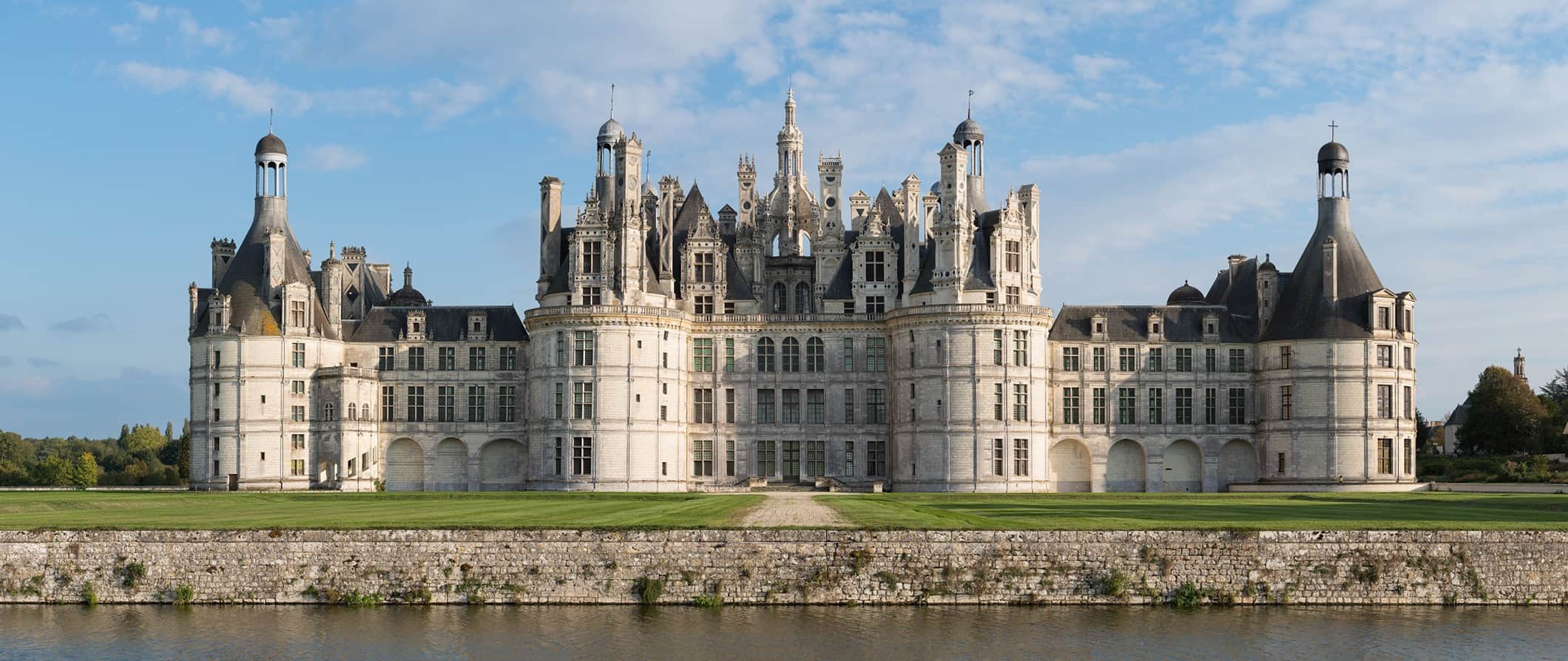
Wine, cheese, the Eiffel Tower, historic castles , beautiful beaches, snooty waiters — France is famous for a lot of things.
It’s a beautiful country with stunning coastlines, picturesque valleys, world-class wine, and tons of history. And despite what you might hear, the French are a wonderful people who love to stop and smell the roses.
I love backpacking and traveling around France.
There’s nothing like a picnic along the Seine or a spending day in the French countryside to make life seem beautiful. France is everything that people make it out to be and then some. Its long history means there are plenty of beautiful ruins, castles, and cathedrals worth exploring. There’s something for every interest here.
Traveling France can be expensive and those on a super tight budget may find it hard to experience everything France has to offer.
However, having traveled around France multiple times, I’ve picked up a wide variety of money-saving tips and off-beat attractions to see. In short, it’s possible to travel France without breaking the bank — and without missing out on what the country has to offer.
This travel guide can help you plan a trip, save money, and ensure you make the most out of your time in my favorite country in Europe !
Table of Contents
- Things to See and Do
- Typical Costs
- Suggested Budget
- Money-Saving Tips
- Where to Stay
- How to Get Around
- How to Stay Safe
- Best Places to Book Your Trip
- Related Blogs on France
Click Here for City Guides
Top 5 things to see and do in france.
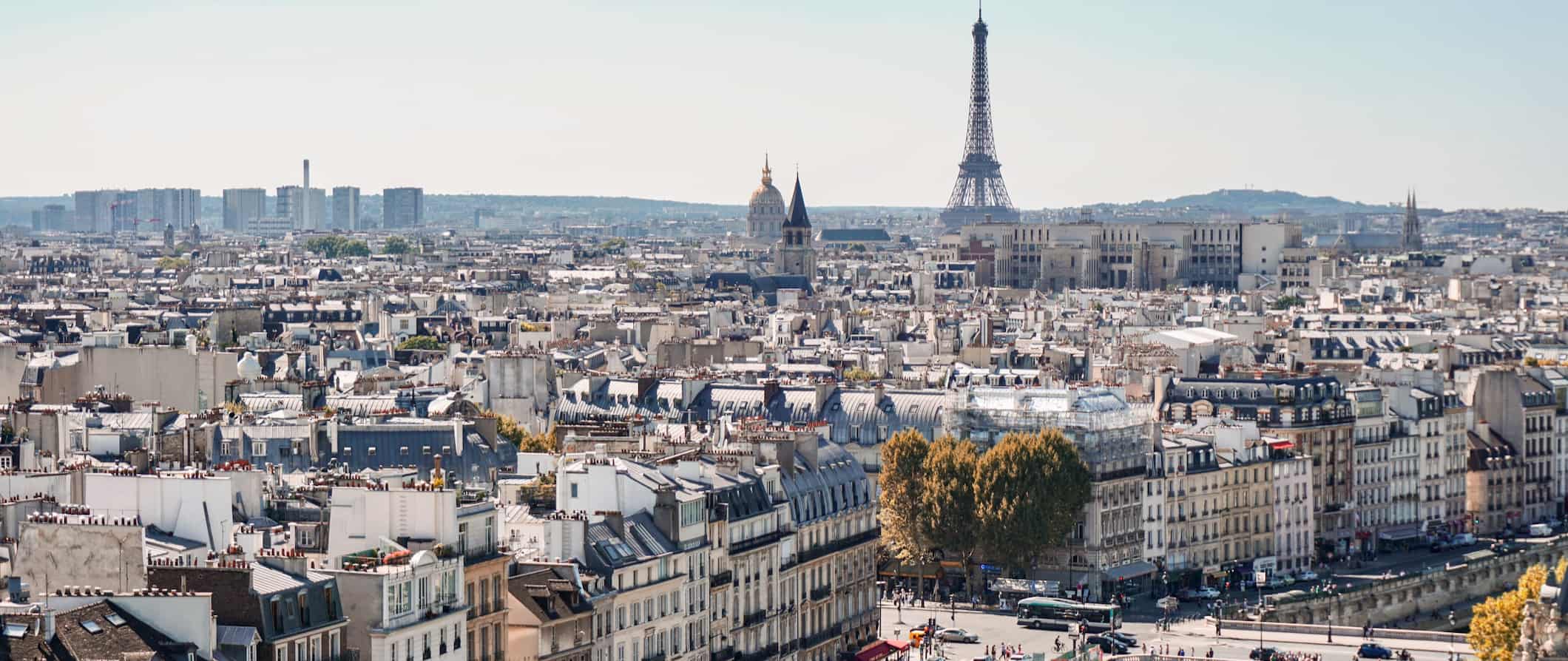
1. Spend time in Paris
Paris has everything – the Louvre, impressionist museums, the Eiffel Tower, the Seine, magnificent parks, jazz, and great food. It’s as magical as people say and while it would take a lifetime to see it all, four or five days can give you a good idea. It’s one of my favorite cities in the world. I’ve spent time living there and I think it lives up to all the hype. And, since most tourists stay in one little area, it’s easy to get out and see the city free of crowds and filled with locals living their best life.
2. Explore the Loire Valley
The Loire is lovely and picturesque, with tons of vineyards and chateaus. The region is home to some of the best wines in the world, beautiful small towns (I love Orlean), and world renowned food. It’s an area not to be missed. It’s easy to get to from Paris and you can visit a lot of chateaus here. ( Here’s a list of my favorites .)
3. Tour Marseille
Marseille is a metropolitan city that also has a rich history filled with nightlife, great restaurants, theaters, museums, and even an international soccer stadium. While the city is a bit gritty and industrial, it’s worth a visit for its beautiful waterfront and exciting mix of cultures. Visit the port, eat fresh seafood, head to Notre Dame de la Garde, and see Vieille Charite. Marseille will give you a totally different feel than the rest of France!
4. Hang out in Nice
Nice is nice (get it?). This seaside town in the south is a popular destination for budget travelers who want to soak up some sun but might not be able to afford Cannes or Monaco. I don’t think the beach here is that great, but the central location makes it easy to explore the rest of the coast (and its better beaches).
5. Drink wine in Bordeaux
Some of the best wine in the world is made in Bordeaux . While an expensive destination, it’s beautiful and worth every penny. Bordeaux has the longest shopping street in Europe, amazing seafood (eat at Le Petit Commerce), a historic center, and of course, wine. Next to Paris, it’s my favorite place in France.
Other Things to See and Do in France
1. see the d-day beaches in normandy.
On June 6th, 1944, the allies of World War II launched Operation Overlord, the largest seaborne invasion in history. Over 300,000 allied troops were involved in the operation, which took place in Normandy (some 20,000 troops died in this operation alone). Here you can learn about the D-Day landings along the beaches of northern France and see the memorials and museums detailing the history of the event. You can still see some of the old bunkers and fortifications too. Full-day guided tours of the D-Day Landings cost around 150 EUR.
2. Wander the Palace of Versailles
Located very close to Paris , this royal palace was completed by Louis XIV in 1715 and was used by the French kings until the French Revolution in 1789. Constructed at the height of French power, the complex sought to show off the monarch’s tremendous wealth. Over 10 million people visit this extravagant palace each year. After the Eiffel Tower, it’s the most popular attraction in the country. It’s as awe-inspiring today as it was back then. Tickets to the entire complex cost 27 EUR. Plan to spend the entire day — you don’t want to miss any part of this opulent place.
If you want to beat the crowds (which I highly recommend), skip-the-line tickets are available for 55 EUR. Since upwards of 10,000 people visit per day, skipping the line will save you a ton of time. The wait to get tickets can last hours.
And for a more in-depth experience, this Versailles tour is led by a local expert guide and includes round-trip transportation from Paris at a time that avoids most of the crowds.
3. Explore history in Lyon
Located around two hours south of Paris by train, this is the third-largest city in the country. The area around Lyon is home to wonderful castles and small villages. It’s great for those looking to explore the French countryside and take a trip back to medieval France. The whole city is a UNESCO World Heritage Site and truly feels like you have stepped back into the past. Don’t miss the relaxing 20-acre botanical garden, the Basilica of Notre-Dame de Fourvière (which dates to the 19th century), and touring the city’s Old Quarter.
4. Hobnob with the rich in Monaco
The Principality of Monaco is a sovereign city-state on the French Riviera. This tiny kingdom is home to winding streets, beautiful buildings, a world-famous casino, gigantic modern yachts, and just 39,000 people (over 30% of whom are millionaires!). Hang out with society’s well-heeled who flock to the Cote D’Azur from other parts of France during the summer. Spanning just a couple square kilometers, it’s one of the smallest countries in the world. Be sure to stop by the famous Monte Carlo Casino (where several James Bone films as well as Ocean’s Twelve was filmed), which is only open to foreigners.
5. See Alsace
This northeast region along the border with Germany is a beautiful place to visit. The mixing of Germanic and French influences characterizes the region (since it has been owned and annexed by both countries), with the old town of Colmar being the main attraction. The postcard-perfect downtown is lined with cobblestone streets and old half-timber houses — some of the which date back to the 1300s. Be sure to see the Goth 13th-century church. And if you love wine, drive the Alsace Wine Route, which you can explore over the course of a few days as you visit some of the region’s best vineyards.
6. Wander through Parc de la Villette
This Parisian park — the third-largest in the city after the Bois de Vincennes and the Bois de Boulogne — is host to Europe’s largest science museum and some other odd attractions. There is a large collection of architectural follies (buildings constructed for decoration), theme gardens, and open spaces for activity and exploration. It was designed for children as well as adults and is a neat place to check out. It’s in the 19th arrondissement.
7. Visit the trenches of World War I
France was ground zero during World War I (1914-1918) and there are still many indicators of the damage caused during those years around the country. For example, two important battles took place at Vimy Ridge (which marked a huge success for Canadian forces) and Verdun (the longest battle of the war that saw over 700,000 people killed or wounded). Both sites have set up excellent tourist centers and visiting facilities. It’s a moving and educational experience. You can reach Verdun from Paris in around three hours by car. Vimy Ridge is just over two hours away.
8. Explore Roman ruins
France has some of the best Roman ruins outside of Italy . Orange, Nimes, and Arles all have beautiful Roman theaters, and Nimes also contains one of the best-preserved Roman temples in the entire region of the former Empire, which dates back to around 2 CE. Personally, I loved Nimes a lot. It was an old Roman outpost and has an amazing double-tiered area that dates back to 70 CE. It’s certainly a surprise to see so many indicators of Roman rule in the south of France, and these sites are definitely worth a visit. Half-day tours around the region (including admission) cost around 80 EUR.
9. Visit the Medieval town of Carcassonne
Carcassonne is a medieval walled city. Legend has it that the town survived a siege when one of the townswomen had the bright idea of feeding the remaining food to a pig. Once they fattened it up, they threw it over the fortifications so that it appeared that they were so well-fed that they were being wasteful and gluttonous. The attacking troops gave up and went home. That’s probably not true, but this town still retains a lot of medieval character and offers plenty of interesting shops and alleys to explore. Don’t miss a tour of the castle and ramparts while you’re here!
10. Go skiing
The French Alps offer some of the best ski slopes in Europe. If you’re in Europe in the winter months and at a loss for what to do, consider getting a group together and renting a ski chalet, or staying at one of the slope-side hotels or hostels. Bring plenty of beer and wine to warm you up after a long day on the hills. Note that skiing in France is not cheap (lift passes usually cost upwards of 75 EUR per day). Some of the most popular ski resorts include La Clusaz, Avoriaz, Val d’Isère, and Chamonix.
11. See Dune de Pyla
This sand dune is located an hour outside Bordeaux in Pyla Sur Mer, a resort town where many of France’s well-to-do spend the summer. It’s the largest sand dune in Europe and the result of winds eroding one shore of the bay and blowing sand over. The dune is nearly 3 kilometers (2 miles) long and up to 110 meters (360 feet) high in some places. Visit at dawn or dusk for the best views. You can walk along the entire dune in around 90 minutes.
12. Wander the Louvre
The Louvre is the biggest museum in the world, with thousands of square feet of space and millions of artifacts and works of art (including the Mona Lisa and the Venus de Milo). To see it all, you need at least two full days, but you can do the highlights in a full afternoon. Admission costs 17 EUR, while timed skip-the-line tickets are an additional 17 EUR. Due to capacity restrictions, you MUST get your ticket in advance. They sell out these days so if you don’t get your ticket in advance, you run the risk of showing up and being denied entrance.
13. Go diving
Diving may not be the first thing that comes to mind when you think of France, but Marseille is making a name for itself as the country’s diving capital. Take a trip out into the Mediterranean, where you can explore tunnels, caves, and admire colorful sea sponges, anemones, and sea fans. You can also spot moray eels and octopus as well as numerous of shipwrecks, such as Le Liban (1882) and Le Chaouen (1961). June to October, when the water is a bit warmer, are the best months for diving here. Prices start at 110 EUR.
For more information on specific cities in France, check out these guides:
France Travel Costs
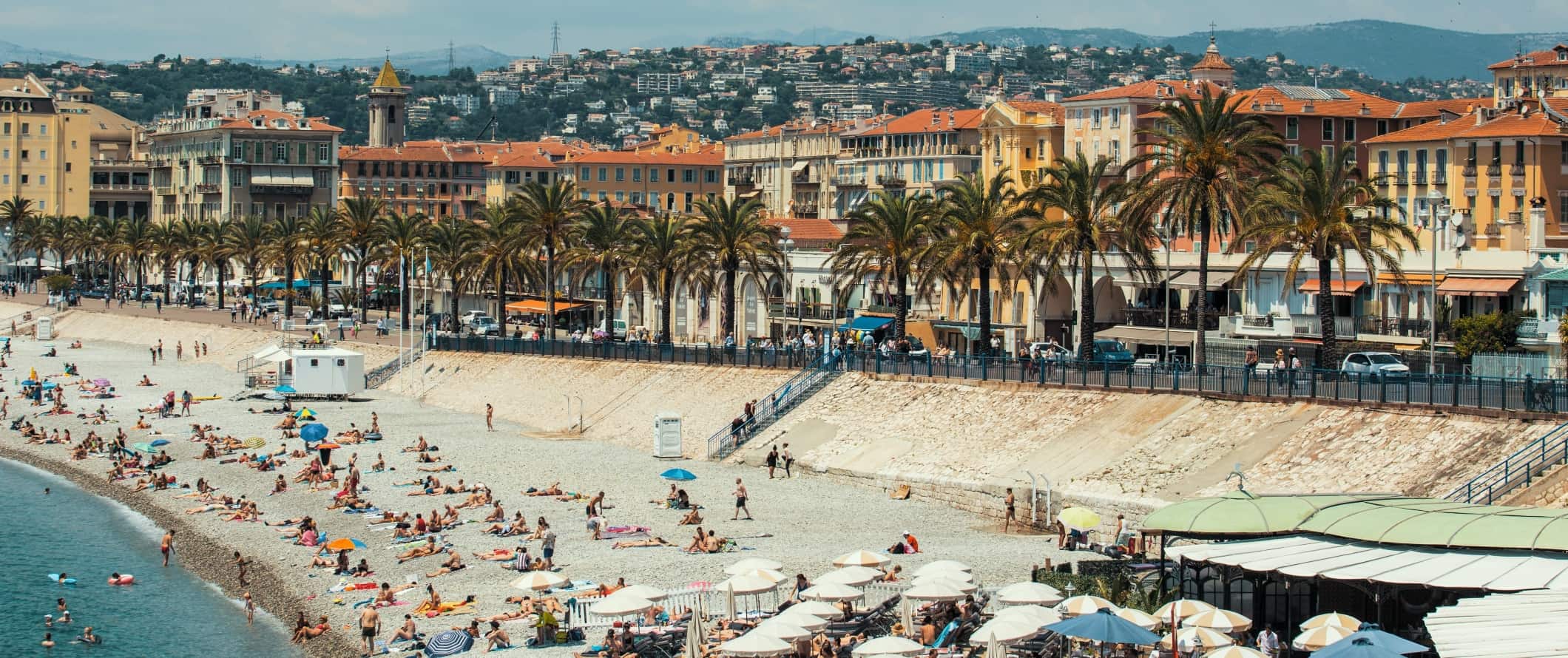
Accommodation – Dorm rooms in hostels with 8-10 beds range from 20-75 EUR per night. In Paris (and many other major cities), expect dorms to cost 40-75 EUR per night (even more in the summer). Private rooms in hostels cost between 100-150 EUR. Free Wi-Fi is standard and many hostels include self-catering facilities and breakfast.
Budget hotels begin around 85 EUR per night for a double room with free WiFi and air-conditioning. Accommodations are cheaper outside Paris, Bordeaux, and the French Riviera. Additionally, during peak summer months, expect prices to start at around 120 EUR per night. In Paris, expect to pay at least 150 EUR in the summer.
Airbnb is widely available around the country. Private rooms start around 45 EUR, though they average double that price. Entire homes/apartments start at 75 EUR (but usually cost at least triple that — especially in Paris).
For those traveling with a tent, camping is available around the country. A basic plot for two people without electricity costs around 25 EUR per night. Wild camping is illegal in France.
Food – Food in France has a long history and is intricately intertwined with the culture. Fresh bread (especially baguettes), tasty local cheeses, and plentiful wine may be stereotypical staples of the cuisine, but they really are some of the must-eat foods in the country. Be sure to also try croque monsieur (a hot ham and cheese sandwich), pot-au-feu (beef stew), steak frites (steak and fries), and if you’re really adventurous you can sample traditional delicacies like frog legs, escargot (snails) or foie gras (a fattened duck or goose liver).
Buying your own food in France can be very cheap and the best way to experience the country’s cuisine. There are many breads, cheese, and meat shops around – and it’s how the French eat. They go to their local markets, buy food, and cook. You can make your own lunch for around 10-15 EUR for two people (including wine). Pre-made sandwiches at cheap local shops cost about 6-12 EUR.
Conversely, eating at a restaurant costs between 20-35 EUR for a meal including a glass of wine.
Fast food (think McDonald’s) costs around 10 EUR for a combo meal. A cheap meal at a casual take-out place costs around 10-18 EUR.
Beer costs 6-7 EUR while a cappuccino/latte is around 3-4 EUR. Bottled water is 1-2 EUR.
If you plan on cooking your own meals, expect to spend between 45-60 EUR for a week’s worth of groceries. This gets you basic staples like bread, pasta, seasonal produce, and some meat.
France Suggested Budgets
On a backpacker’s budget, prepare to spend 70 EUR per day. On this suggested budget, you’ll be staying in hostel dorms, cooking all of your meals, using public transportation to get around, limiting your drinking, and sticking to mostly free and cheap activities like free walking tours, parks and gardens, and free museums.
On a mid-range budget of 155 EUR per day, you can stay in a private Airbnb, eat out for most meals, enjoy a few drinks, take the train between cities, and do more paid activities like wine tours and a visit to Versailles.
On a “luxury” budget of 300 EUR or more a day, you can stay in hotels, eat out for all your meals, rent a car to get around, drink more, and tour whatever tours and activities you want. This is just the ground floor for luxury though. The sky is the limit!
You can use the chart below to get an idea of how much you need to budget daily. Keep in mind these are daily averages – some days you’ll spend more, some days you’ll spend less (you might spend less every day). We just want to give you a general idea of how to make your budget. Prices are in EUR.
France Travel Guide: Money-Saving Tips
France can destroy your budget if you aren’t careful. Accommodation is pricey, eating out can get expensive, and tours aren’t always affordable. Fortunately, there are plenty of ways to save money while you are visiting France without sacrificing your experience. Here are some money-saving tips to help you reduce your costs:
- Have a picnic – Eating out in France is an expensive affair. Restaurants can break a day’s budget quickly. Thankfully, there’s nothing more French than a picnic. Head to the local market; buy some wonderful cheese, bread, fruits, and meats, and have a picnic and watch the day go by. You can have a great meal for less than 10 EUR.
- Take the (slow) train – Train travel in Europe is cheap and it’s the easiest way to get around France. The TGV line can be expensive, but if you get the slow train or have a Eurail pass , you’ll save money.
- Drink wine – In France, the wine is cheaper than water (well, almost!). While you shouldn’t skip drinking water, drink wine over other forms of alcohol to save big. A nice bottle can cost as little as 3 EUR!
- Shop at the markets – Want great French cuisine? Do what the locals do and head to the outdoor markets. Visit the cheese guy, the fish guy, the bread guy, and everyone else to get the best local ingredients to make yourself a perfect French meal. It saves a lot of money compared to eating out.
- Skip the clubs – Clubs in France are expensive and charge an entrance fee (it can be over 20 EUR!). Drinks cost 12 EUR or more. If you don’t want to spend 90 EUR in one night, skip the clubs.
- Rideshare – If you’re flexible in your schedule, use the ridesharing service BlaBlaCar and catch rides with locals between cities (or countries). Drivers are verified and it’s perfectly safe (though sometimes rides don’t show up, which is why you need to be flexible).
- Eat a prix-fixe meal – This is a set lunch menu where a 2-3 course meal costs about 15-20 EUR. This is a far more affordable option than just ordering off the menu. I always eat out for lunch and then cook for myself for dinners.
- Stay with a local – If you want to save money and get some local insight into the country, use Couchsurfing. There are a lot of hosts in this country. I highly recommend using the site at least once to lower your accommodation costs, make a friend, learn local tips, and have a kitchen to cook in!
- Take advantage of being under 26 – France has EXTENSIVE discounts for people who are under 26 if they have the ISIC card – be sure to get one!
- Bring a water bottle – Since the tap water here is safe to drink you should bring a reusable water bottle to save money and reduce your plastic use. LifeStraw is my go-to brand as their bottles have built-in filters to ensure your water is always clean and safe.
Where to Stay in France
Looking for the best hostel in France? There are tons of options in every major city. Here are some of my favorite hostels in France:
- St. Christopher’s Canal (Paris)
- Les Piaules (Paris)
- Generator Hostel (Paris)
- St. Christopher’s Gare du Nord (Paris)
- Central Hostel (Bordeaux)
- Hostel 20 (Bordeaux)
- Villa Saint Exupery Beach (Nice)
- Vertigo Vieux-Port (Marseille)
How to Get Around France
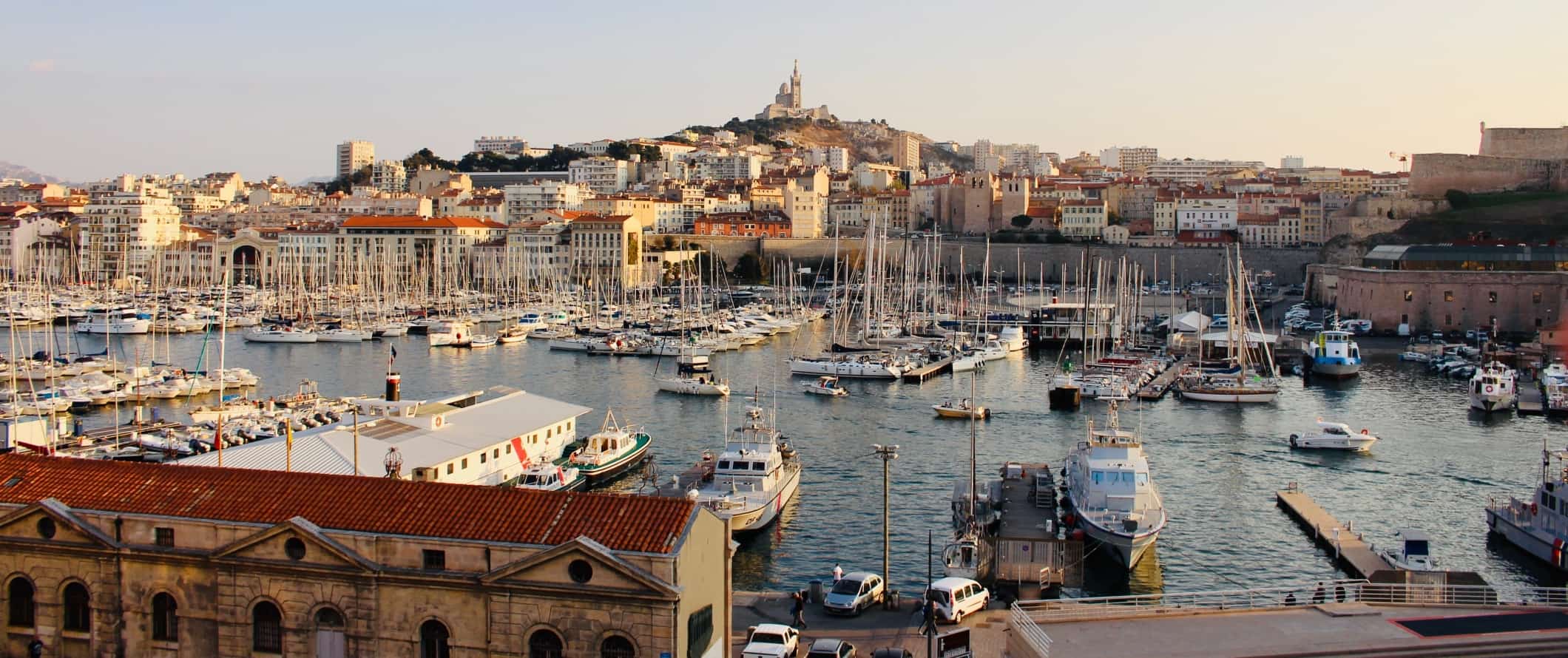
Public transportation – Local transit systems are reliable and cost between 1-3 EUR per trip. Most cities and towns have extensive train, bus, and tram systems. Transportation to and from the airport into the city center is generally affordable and user-friendly.
Paris has a “carnet” of 10 single-use tickets that costs 14.50 EUR. You can get a one-day to five-day pass (a ParisVisite) for all modes of public transportation (bus, metro, trams, and suburban trains called the RER) for between 13.20-42.20 EUR. It also gives you discounts on some major Parisian landmarks. You can buy tickets at any metro station.
Expect to pay around 12 EUR to get to Paris from Charles de Gaulle.
Budget Airlines – France has several major airports, and budget airlines are popular. It’s an affordable and easy way to get around the country if you’re not big on time.
Paris to Nice averages 50 EUR one way, and Paris to Marseille is also about 50 EUR one way. Book at least a month early to scoop up great deals. In the off and shoulder seasons, you can get these flights for as low as 15-25 EUR.
Just keep in mind that most budget airlines charge extra for checked baggage and often require you to print your ticket out in advance.
Buses – France has several bus operators, including:
My recommended bus company is Flixbus .
A 10-hour bus trip from Paris to Marseille costs around 15-30 EUR while a trip from Paris to Strasbourg costs 17-25 EUR. A 7.5-hour journey from Paris to Bordeaux starts around 13 EUR, while the 3-hour journey from Paris to Tours (in the Loire Valley) is around 12 EUR. A longer ride like 15 hours from Paris to Nice starts around 35 EUR.
While the bus is great, I generally prefer to travel by train in France as it’s a nicer, more comfortable experience.
To find bus routes and prices, use BusBud .
Trains – France has regular trains as well as the world-famous high-speed TGV. SNCF is France’s national railway, and you can buy tickets on their website. But even the regular train is much quicker than taking the bus!
If bought last-minute, a train trip from Paris to Nice costs 55-105 EUR. But if you buy in advance, Paris to Nice can cost as little as 25 EUR in 2nd class. A last-minute train trip from Paris to Strasbourg costs 70-80 EUR, but advance tickets in second class start around 19 EUR. Shorter trips like Marseille to Nice start around 36 EUR, while you can get from Paris to Tours for 19 EUR. Good discounts on train travel exist for travelers under 26-years-old!
To find routes and prices for trains around France, use Trainline .
You may also want to consider getting a Eurail Pass , which allows travelers to explore Europe by providing a set number of stops in a specific time period. These passes are continent-wide, country-specific, or regional.
Ridesharing – If your schedule is flexible, use a ridesharing service and catch rides with locals between cities. Drivers are verified and it’s perfectly safe. It’s usually cheaper than the bus too. BlaBlaCar is the most popular. There’s sometimes a language barrier but, for the most part, it’s easy to use and much more interesting than the bus or train!
Car rental – France is a great destination to rent a car and road trip (just avoid driving in cities like Paris; they can be a nightmare). Rentals start at around 30 EUR per day for a multi-day rental. Drivers need to be at least 21 years of age and usually need to have a credit card in their name.
When to Go to France
Peak season in France is the summer, when France gets incredibly crowded. Prices skyrocket during this time but the overall atmosphere and weather is great so it’s still worth visiting during peak season. Temperatures average between 16-24°C (61-75°F), though they have often climbed much higher in recent years due to climate change, reaching well into the in the 30s°C (80s°F). In the south of France, daily highs hover around 30°C (80°F) and go up from there.
Just note that a lot of the country closes down in August when people go on holidays. Make sure to plan accordingly and double check opening/closing hours.
The shoulder season is spring and fall (April-May and September-October, respectively). It’s still warm during this time but there aren’t as many crowds and prices are cheaper. This is my favorite time to visit France. The weather is good, the crowds fewer, and the prices are lower. Just make sure to bring a light rain jacket.
Winter in France is from November to February. It gets cold, even in the south. Average winter temperatures range from 0-8°C (32-46°F). On the other hand, the Christmas season is fantastic — you’ll find Christmas markets and festivals galore! While Paris is never empty, this is the quietest (and cheapest) time to visit the city.
How to Stay Safe in France
France is very safe for backpacking and solo traveling. Violent crime is rare so travelers should feel safe here, both day and night.
That said, scams and petty theft can occur (especially pickpocketing in Paris) so be on the lookout. Always keep your valuables secure and out of sight when on busy public transportation and in crowded tourist areas.
Solo female travelers should feel safe here, though the standard precautions apply (never leave your drink unattended at the bar, never walk home alone intoxicated, etc.).
One common scam in Paris is to get tourists to sign a petition against some common cause. Once you sign, they’ll pester you for a donation. To avoid getting ripped off, simply decline anyone approaching you with a petition.
When using an outdoor ATM, always check to make sure a card skimmer has not been attached to the card reader. To be safe, only use indoor ATMs.
France has a history of protesting (mainly in Paris). These can turn violent so if a protest occurs during your visit, avoid taking part.
To avoid other potential scams, you can read about common travel scams to avoid here.
If you rent a car, don’t leave any valuables in it overnight. Break-ins are rare but it’s always better to be safe than sorry. Car break-ins are most common near the border with Spain as well as in Normandy around the D-Day sights.
If you experience an emergency, dial 112 for assistance.
Always trust your gut instinct. Make copies of your personal documents, including your passport and ID. Forward your itinerary along to loved ones so they’ll know where you are.
The most important piece of advice I can offer is to purchase good travel insurance. Travel insurance will protect you against illness, injury, theft, and cancellations. It’s comprehensive protection in case anything goes wrong. I never go on a trip without it as I’ve had to use it many times in the past.
France Travel Guide: The Best Booking Resources
These are my favorite companies to use when I travel. They consistently have the best deals, offer world-class customer service and great value, and overall, are better than their competitors. They are the companies I use the most and are always the starting point in my search for travel deals.
- Skyscanner – Skyscanner is my favorite flight search engine. They search small websites and budget airlines that larger search sites tend to miss. They are hands down the number one place to start.
- Hostelworld – This is the best hostel accommodation site out there with the largest inventory, best search interface, and widest availability.
- Booking.com – The best all around booking site that constantly provides the cheapest and lowest rates. They have the widest selection of budget accommodation. In all my tests, they’ve always had the cheapest rates out of all the booking websites.
- HostelPass – This new card gives you up to 20% off hostels throughout Europe. It’s a great way to save money. They’re constantly adding new hostels too. I’ve always wanted something like this and glad it finallt exists.
- Get Your Guide – Get Your Guide is a huge online marketplace for tours and excursions. They have tons of tour options available in cities all around the world, including everything from cooking classes, walking tours, street art lessons, and more!
- The Man in Seat 61 – This website is the ultimate guide to train travel anywhere in the world. They have the most comprehensive information on routes, times, prices, and train conditions. If you are planning a long train journey or some epic train trip, consult this site.
- Rome2Rio – This website allows you to see how to get from point A to point B the best and cheapest way possible. It will give you all the bus, train, plane, or boat routes that can get you there as well as how much they cost.
- FlixBus – Flixbus has routes between 20 European countries with prices starting as low 5 EUR! Their buses include WiFi, electrical outlets, a free checked bag.
- SafetyWing – Safety Wing offers convenient and affordable plans tailored to digital nomads and long-term travelers. They have cheap monthly plans, great customer service, and an easy-to-use claims process that makes it perfect for those on the road.
- LifeStraw – My go-to company for reusable water bottles with built-in filters so you can ensure your drinking water is always clean and safe.
- Unbound Merino – They make lightweight, durable, easy-to-clean travel clothing.
- Top Travel Credit Cards – Points are the best way to cut down travel expenses. Here’s my favorite point earning credit cards so you can get free travel!
- BlaBlaCar – BlaBlaCar is a ridesharing website that lets you share rides with vetted local drivers by pitching in for gas. You simply request a seat, they approve, and off you go! It’s a cheaper and more interesting way to travel than by bus or train!
- Take Walks – This walking tour company provides inside access to attractions and places you can’t get elsewhere. Their guides rock and they have some of the best and most insightful tours in all of France.
GO DEEPER: Nomadic Matt’s In-Depth Budget Guide to Paris!
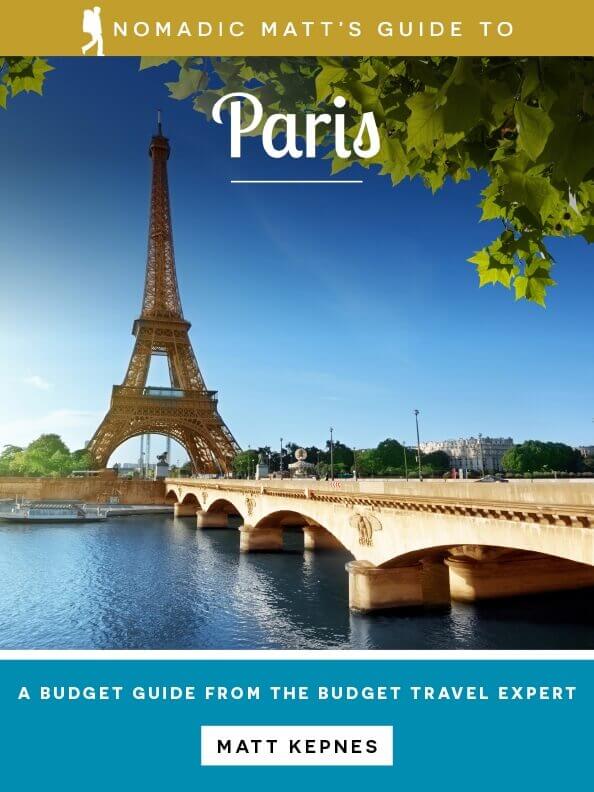
While I have a lot of free tips on Paris, I also wrote an entire book that goes into great detail on everything you need to plan a trip here on a budget! You’ll get suggested itineraries, budgets, even more ways to save money, my favorite restaurants, maps, prices, practical information (i.e. phone numbers, websites, prices, safety advice, etc.), and cultural tips.
I’ll give the insider view of Paris that I got from living and running tours here! The downloadable guide can be used on your Kindle, iPad, phone, or computer so you can have it with you when you go.
France Travel Guide: Related Articles
Want more tips for your trip? Check out all the articles I’ve written on France travel and continue planning your trip:
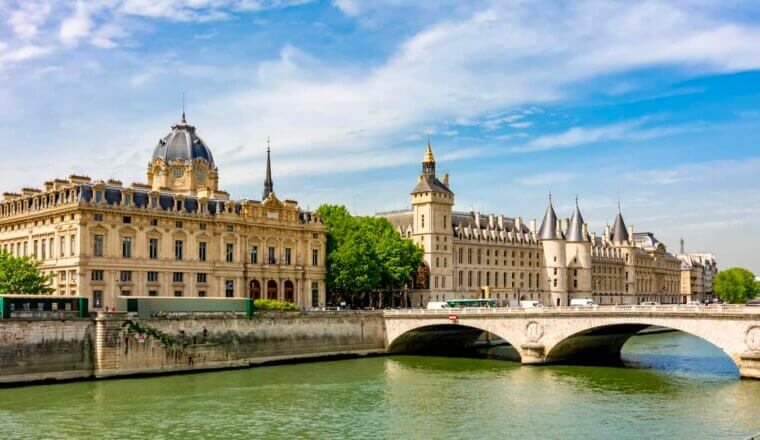
The 8 Best Hotels in Paris
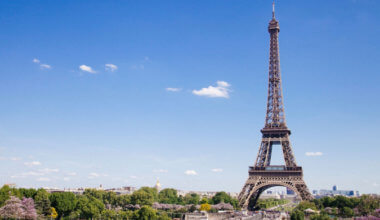
How to Spend 5 Days in Paris
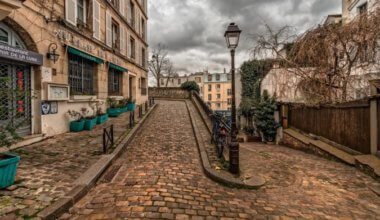
13 Off-the-Beaten-Path Things to See and Do in Paris
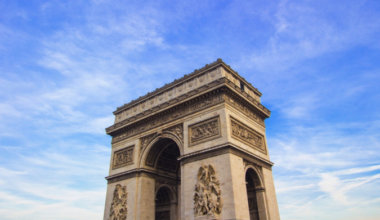
The Best Walking Tours in Paris

Life in Paris, Part 3: Nothing Lasts Forever

The 10 Best Day Trips from Paris
Get my best stuff sent straight to you, pin it on pinterest.
- Where To Stay
- Transportation
- Booking Resources
- Related Blogs
- Loire Valley
- South of France
- France Off the Beaten Path
- Non-Touristy Paris
- Arles & The Camargue
- Haute-Marne
- Loire: The Department
- Nancy Art Nouveau
- 9 Sensational Road Trips
- How to Plan Your Route
- 10 Days: South of France
- 7 Days: Basque Country
- 5 Days: Lake Geneva & Alps
- France's Regions
- France's Departments
- France's Cities
- Best Seasons
- Official Holidays
- Essential Planning Tips
- Paris Hotels with Spa
- Paris Hotels with Balconies
- Cool Paris Hotels
- Driving in France
- Taking the Train
- Renting a Car in France
- How to Shop in France
- Le Petit Shop
- Christmas Gifts
- Things to Do in Lyon
- What Is Lyon Famous for?
- The Food Capital of the World
- The Lyon Murals
- Public Transportation in Lyon
- All of the Lyon stories
- Best of France Know-How
- Most Beautiful Villages of France
- Flavigny-sur-Ozerain
- Best Landmarks
- Best Flea Markets
- Best Books About France
- Best Christmas Markets
- France's Favorite Foods
- A Typical French Breakfast
- Apero Time!
- Weird French Foods
- Let Them Eat Baguette
- French Pastry Desserts
- The Bouillons of Paris
- La Vache Qui Rit
- French Christmas Meals
- Did You Say Escargot?
- French Revolution Tours
- Ghost Tours
- Paris Food Tours
- Stereotypes and Myths
- Facts about Ze French
- La Loire: What's in a Name?
- France's Backstory
- France's Roman Ruins
- Chenonceau Castle
- La Belle Epoque
- Most Haunted Places in Paris
- Dark Tourism in Paris
- France's Abandoned Places
- Paris Catacombs
- They Built a Wall
- Legends of the Luberon
- Lyon's Secret Passages
- Small & Odd
- Burgundian Life, Dijon
- Counterfeit Museum, Paris
- France's List of Lists
- Food & Wine Brotherhoods
- Vercingetorix, King of Gauls
- The Salacious Count Bussy-Rabutin
- Napoleon Bonaparte
- General Charles de Gaulle
- Breakfast in French?
- Bathroom in French?
- Most Popular Posts
- Beyond the Baguette Newsletter
Unsure about your French table manners? Click Here to download > > How to avoid these 10 food etiquette mistakes !
Follow me on
- Plan Your France Trip
- Train Travel
Seeing the Best of France: How To Travel France By Train
Updated 9 March 2024 by Leyla Alyanak — Parisian by birth, Lyonnaise by adoption, historian by passion
Taking the train in France is relatively straightforward and one of the best ways to get around. Here's everything you need to know about train travel in France.
France's public transport system will get you to most places in the country, from major cities to small towns, usually through fabulous scenery and often skirting exquisite villages and the odd UNESCO World Heritage site.
There are other ways to visit France, of course, and sometimes, these have advantages over the train, but that's rare.
I'm French and I live in France, and have all the different modes of transport at my fingertips, including a car.
But still, when I travel (as I often do, to collect stories for this website), four times out of five, it is by train.
Why trains are the best way to see France
Other ways to travel in France
- By rideshare
Different kinds of train in France

Intercity trains
Train travel with your pet in France How to use French trains How to book train tickets in France The France railpass Train rides from Paris The Best Train Trips In France What to do if there's a train strike Book your railway tickets and passes
FAQ: Train travel in France
NOTE: Pages on this site may contain affiliate links, which bring in a small commission at no cost to you.
Perhaps we hanker back to those grand old days of the Orient Express, of wood-paneled coaches and crystal dining ware... Or maybe we're being environmentally conscious... Or like to end up downtown, or rested when we arrive, or enjoy the countryside slipping by...
Whatever the reason, we're taking the train in increasing numbers.
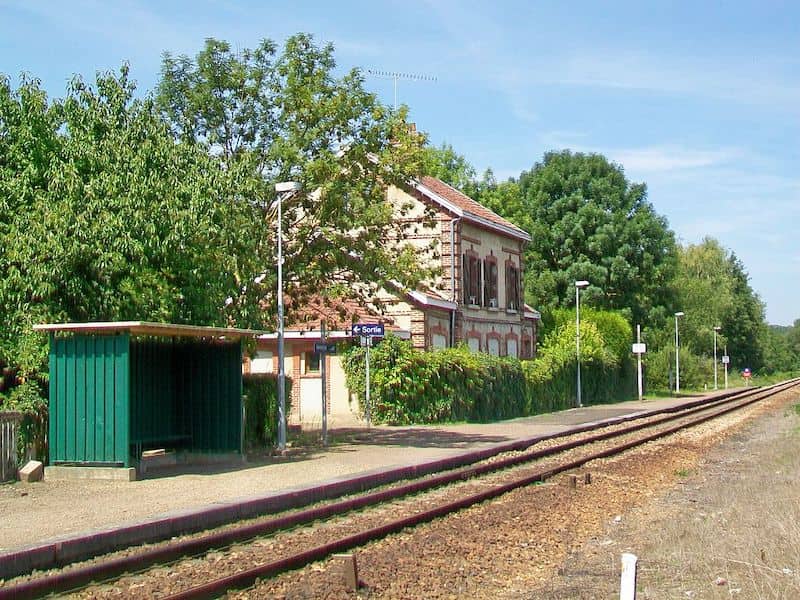
Why is train travel the best way to see France?
Traveling by train in France has many advantages over other forms of transportation. Here are the main ones:
✓ Lower carbon emissions ✓ Comfort and relaxation, great scenery ✓ No limits on luggage weight or size ✓ You can get work done if there's wifi ✓ If you book ahead trains can be highly cost effective ✓ Train stations tend to be in the center of town
As with everything, there are also disadvantages to rail travel in France:
✗ Not every town and village can be reached by train ✗ Trains can be full around major holidays ✗ You may have one or more connections ✗ Some areas around stations can be a bit rough, especially at night ✗ You can be subjected to train strikes (I deal with that below) ✗ You can't really choose your seat mates
If I love train travel so much, it's because I've done it hundreds of times. I've also traveled dozens of times in other ways and I can compare from my own first-hand experience. (In other words, yes, I'm biased!)
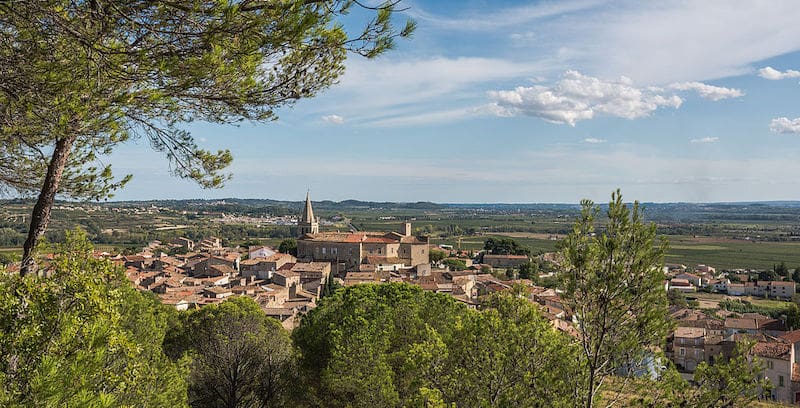
Although direct trains and main lines help you travel quickly and easily, they are not always available, and sometimes, you simply have to find an alternative to the train.
Here are a few:
Traveling around France by car
✓ No place is out of reach, even the most remote ✓ Freedom – you don't have to stick to a timetable and can come and go ✓ You can go straight to your destination without having to change trains
✗ Driving in France can be... interesting ✗ You'll have to contend with parking, which is often difficult in popular places ✗ Many cities have low emission zones that restrict driving downtown ✗ Cost can be high: gasoline, motorway tolls, parking ✗ When traffic is heavy, safety can be a concern ✗ Less relaxing for the driver than the train ✗ You could get lost and waste precious time ✗ You'll have to forget the wine, even if you're visiting a renowned château
Bus travel in France
✓ Like trains, bus stations are usually in the center of town ✓ Buses often go where trains do not ✓ This is often the cheapest way to travel in France
✗ Buses are far less frequent than trains ✗ You'll drive along soul-less autoroutes, usually France's least lovely sceneries ✗ Not as comfortable as the train ✗ Bus stations can be in even rougher neighbourhoods than train stations ✗ Buses can be a bit worrisome if you dislike the combination of high speed and narrow roads (they aren't all like this but all it takes is one)
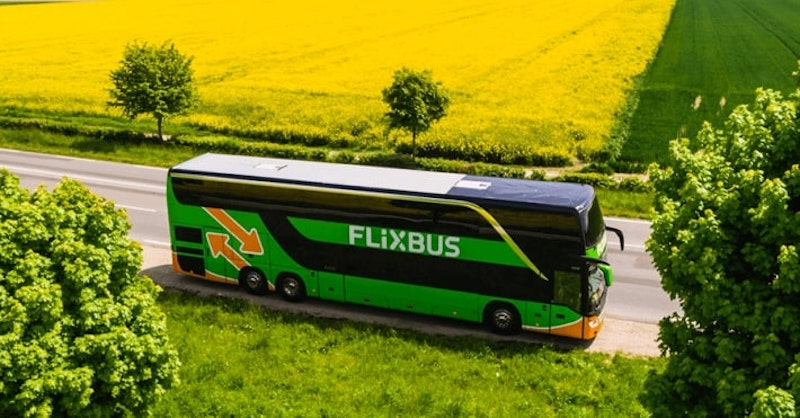
Travel by air in France
✓ Low-cost airlines can cost less than the train if you book ahead ✓ East-West transport in France is poorly served and flying may be the only way to avoid doubling your distance and traveling through central Paris
✗ Your carbon footprint may be significant ✗ Airports are often far from town, a waste of time and money fo extra transport ✗ Flights to your destination may be infrequent (unless you're headed to Paris) ✗ With all the extra security, a flight can take far longer than a train ride ✗ All that waiting can also be a source of frustration ✗ You're a bit of a hostage to weather and strikes
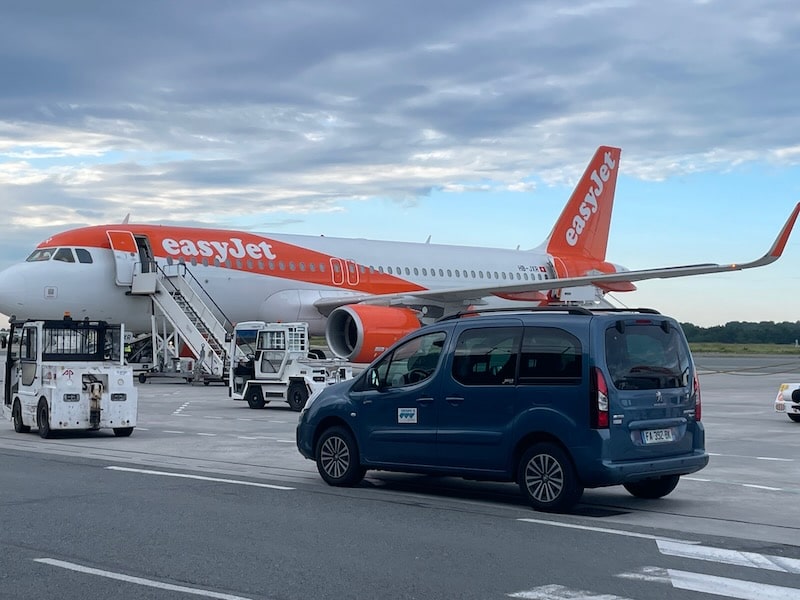
Rideshares in France
✓ The cheapest way to travel ✓ Allows you to meet people and socialize during your journey
✗ You have to trust someone you don't know ✗ You have no idea of whether the driver is qualified, good or sober ✗ You have no way of knowing if the vehicle is safe or has been properly maintained
You might also like these stories!

The different kinds of French trains
Until recently, most French trains were managed by the SNCF, the national railway company, with a very few private trains.
France is privatizing its railways so foreign trains are beginning to appear on the tracks. Most recently, the Spanish high-speed AVE train has been connecting Madrid and Barcelona with cities in France, including Paris, Marseille, Perpignan, Lyon, Toulouse and others.
The Italian Trenitalia also started rail service between Paris, Lyon and Milan, although it has been hampered by technical difficulties and rockfalls.
Still, we can expect the number of foreign trains to increase.
TGV, Inoui, Ouigo trains and similar high-speed trains
The TGV (Train à Grande Vitesse, or High-Speed Trains) are long-distance trains that travel between main destinations in France at an average speed of 320kph (nearly 200mph) along specially built tracks.
If you've never taken one of these, it might take you a few minutes to acclimatize, especially if they post the speed on a screen – quite impressive. The TGV whips across the French countryside passing everything in a blur of pastures and cows.
This is the queen of French trains and you should make it a point to take it at least once.
You do need to reserve your seat and buy your TGV ticket ahead of time – the earlier you buy, the cheaper the ticket. You can buy a ticket in either first or second class and if you book early and online, the price difference between the two classes might be negligible on some trips, so treat yourself...
The TGV comes in several flavors: there is a low-cost version – Ouigo, which you can book online only, and Inoui, which is a TGV brand for newer or refurbished older trains (soon, all normal TGV trains will become Inoui).
All of these are high-speed trains, and you can book your tickets through Trainline or SNCF .
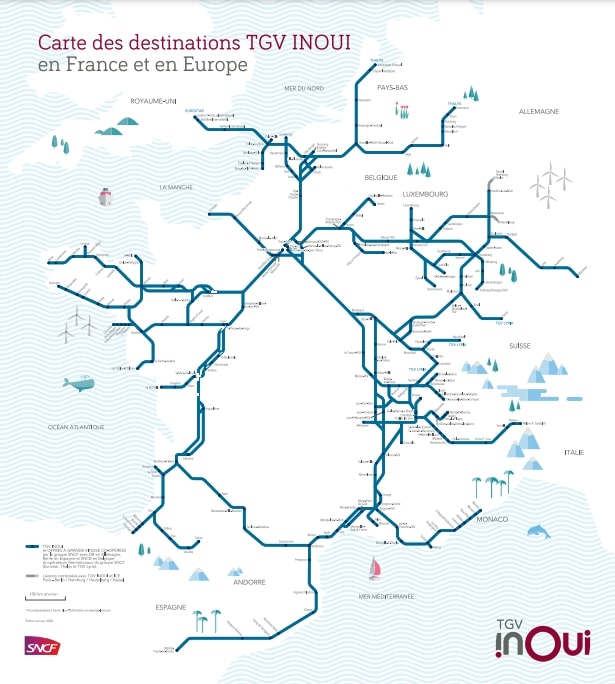
The major failing of this rail network – and of much French transportation – is that most roads lead to or through Paris . So if you want to travel from, say, Lyon in the southeast to Bordeaux in the southwest, you cannot do it directly and will usually have to go north to Paris, change stations, and head back down again.
However, in recent months I've found direct trains from Lyon to a few cities but it's still very much the exception to the rule.
While the TGV train has a cafeteria car, I prefer to buy my lunch in town or at the station before boarding – the food is better and definitely cheaper.
Perhaps the one thing I dislike about TGV trains is that seats can face either forward or backward . Sometimes you can choose, but often you cannot. So if you suffer from motion sickness (as I do) and happen to be assigned a back-facing seat, you might end up spending your entire trip standing up in the restaurant car. Trains that are double-deckers make this even worse if you're upstairs, because of the ultra-bouncy suspension, but you can usually choose your floor and seat, if not your direction.
Check schedules and book your TGV here
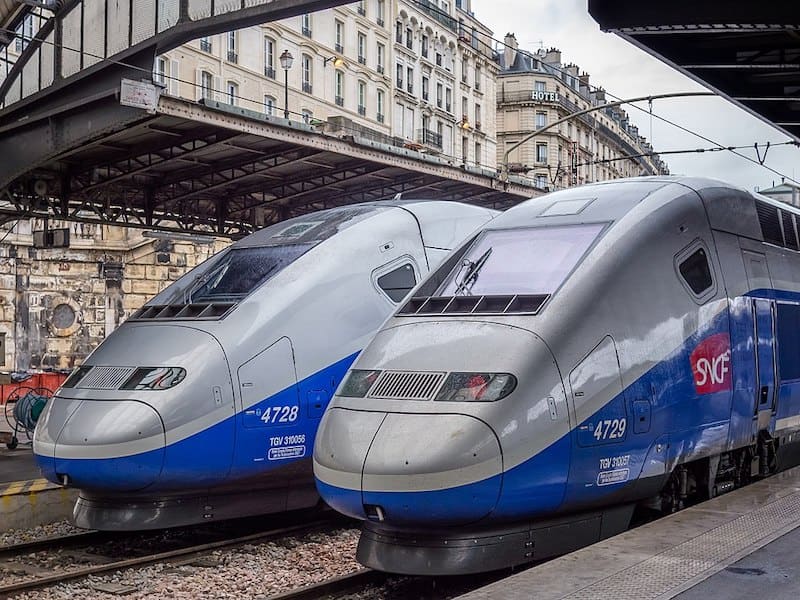
Eurostar and Thalys trains
The Eurostar is a direct train from Paris Gare du Nord to London St. Pancras. At just over 2h15, this is perfect for traveling downtown to downtown and avoiding all those pesky ferries and airport delays. Still, the cost is high and this isn't considered a bargain at all. Just a convenience.
Thalys is the train that connects you to Europe north of Paris – you can take it from Paris to Brussels, Amsterdam, Cologne, Dusseldorf, and places in-between.
Book your Eurostar and Thalys trains here
The Intercités are slower than the TGVs and link many of France's medium-sized routes, although some of these routes may also be covered by TGVs. You can decide which to take, a decision that will depend on schedules and prices.
Unlike the TGV, these trains do not require reservations. You can buy your ticket ahead of time if you don't want to bother with ticket machines or queues at the train station, but you don't have to.
I recommend that you do, because the machine might be broken or confusing – an online ticket bought ahead of time provides me with greater peace of mind. Also, you can't buy your ticket on board, so best be prepared.
Check schedules and book your Intercity here
The TER trains are regional express trains, and act as local trains if you're going to smaller towns.
For example, my town, Seyssel, doesn't have any high-speed trains but I can take a TGV from Paris to Valserhône and change there to a TER for a 10-minute ride.
Most often, the regional trains will wait for the TGV and Intercity if these are late. However, if your TER is late, your TGV will not wait. So if you're starting a journey on a TER and then connecting to a TGV, please give yourself ample time.
Contrary to France's faster trains, y our TER ticket is usually valid for the entire day so if you miss your TER, you can catch the next one. Check when you're buying it.
Also, there is no seat reservation on the TER.
What are the most popular international train routes in France?
To recap, several international trains will either get you to France or take you away from the country:
- The Eurostar from France to the UK (you can also catch the Eurostar to south of France)
- The TGV Lyria, between France and Switzerland
- The Thalys to Germany, Belgium and the Netherlands
- Other highly popular routes include the Italy to France train or the Barcelona to Nice train
Book your international trains and your rail passes here.
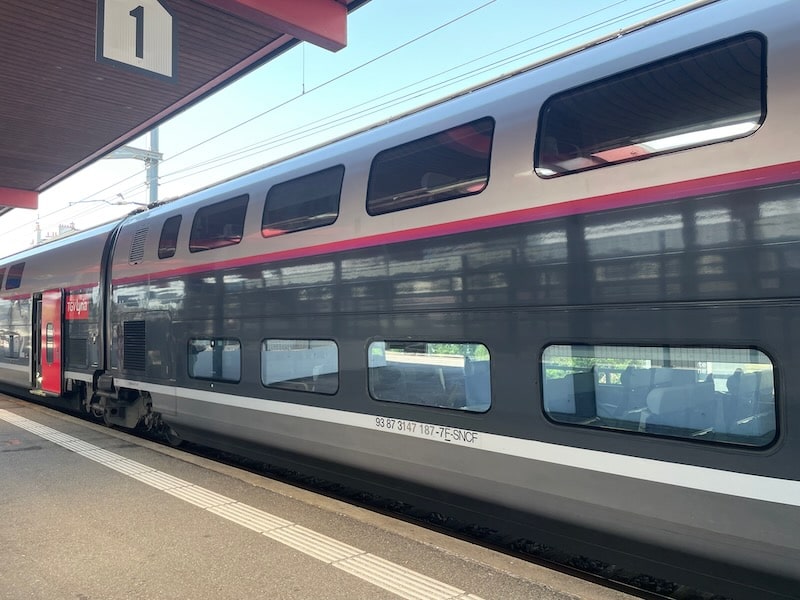
Auto train: taking your car on French railways
You can no longer do this.
There used to be a car train from Paris to the south of France but that has been discontinued. Most people heading to the Côte d'Azur (the French Riviera) will choose to drive, or will take the train and rent a car at their destination.
However, it's worth keeping an eye out because with the resurgence of overnight trains, taking your car along might be next.
Click here to compare car rental prices
Night train
In my youth, before the advent of fast trains, we used to have sleeper cars and a trip was as much an adventure as a distant voyage. I remember taking the night train from Paris to Geneva, where I was attending university, and have fond memories of the people I met on these trips.
With the advent of high-speed trains and low-cost airlines, night trains began to disappear in France, until perhaps one or two were left just a few years ago.
But the overnight may have been saved by President François Macron, who has committed to returning these night trains to service.
From Paris, you can now catch an overnight train to Albi, Argelès-sur-Mer, Ax-les-Thermes, Briançon, Cannes, Lourdes, Nice and Toulouse.
People are appreciating the value of slow travel, and sometimes the journey is as much fun as the destination.
Don't expect the magnificent sleeper cars of yesteryear but you can at least lie on a bunk for the duration of the trip. Not quite the romantic night trains of our imagination... but let's call it a work in progress.
How easy is it to travel around France by train with your pet?
You can absolutely travel with your pet on the France train system and it's quite straightforward.
- Whatever its size, you'll have to pay €7 for your pet.
- If your pet weighs more than 6kg (usually a dog), you'll have to muzzle and leash it but it will have to travel at your feet, not on the seat beside you. I'm not sure what happens if you have an 8kg Maine Coon, though...
- If you want to reserve a ticket for your pet, you'll have to book it directly from the French railway company, SNCF. In some regions, however, a technical glitch won't allow you to book an online ticket for your pet and you'll have to get it at the station. And of course, in some stations, the machines don't work or there's no staff... In these cases, I would just board the train and stop the conductor the second you see him and explain the situation. If you wait, you will get fined. If you explain the first time s/he walks by, you "might" get fined...
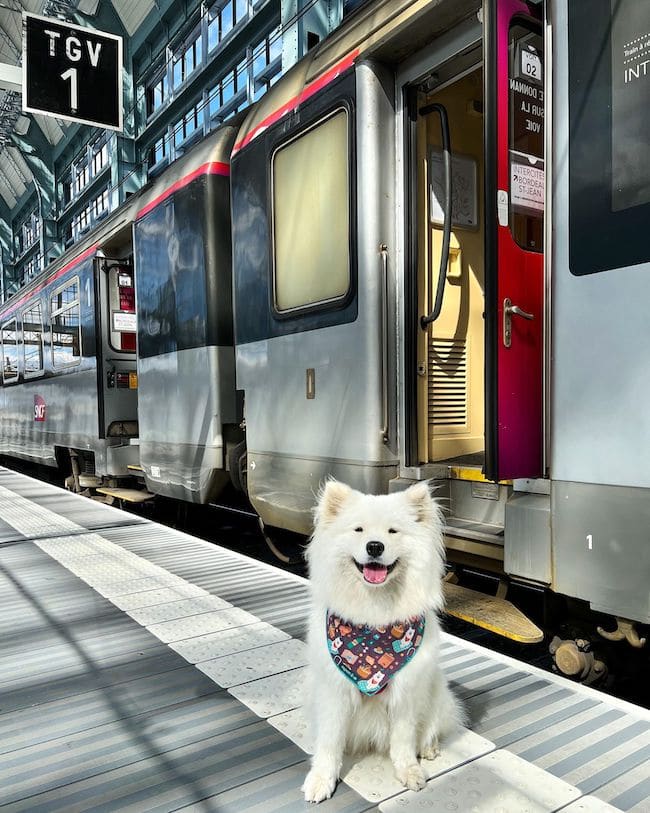
How do you use the train in France?
The French train system isn't overly different from other European train systems and getting around France by train is relatively simple.
But, France being France, we do have a few idiosyncrasies...
- First and most important, many French cities (even smaller ones) have several train stations so make sure you know where your train trip starts or ends. This is crucial if you're connecting: Paris, for example, has seven major (and several minor) stations, some of which are at opposite ends of the city and may require several subway rides.
- If the letters TGV are included in your destination's name, beware: it might be a station designed specifically for high-speed trains , and these are often outside the city center. For example, Avignon Centre is right downtown, but Avignon TGV is 5km away. Not far, mind you, but not a pleasant prospect if you're lugging suitcases behind you.
- French train stations can also be works of art. Many of them are quite old (in fact, some were so beautiful they have been converted into museums, like the Musée d'Orsay, which was once the Gare d'Orsay). Some are small and picturesque, others are modern and look no different from subway stations. Just be prepared for the variety.
- Most train stations have departure boards. I say most because some tiny stations have put up new, electronic boards but because there is insufficient maintenance staff, these often break down and repairs may take time.
- Where there are boards, especially large mural ones, you should know that French trains all carry numbers . You may have two trains leaving at almost the same time for the same destination but since the arrival time at destination isn't listed, you might not know which to take. Use the number (it's on your ticket) to tell them apart or you might spend a lot more time touring the countryside than you expected.
- Always take your luggage with you wherever you go, including the bathroom. If you leave it unattended, there's every chance it will soon be surrounded by armed soldiers and sniffer dogs. Terrorism is rare in France but incidents, however scarce, have been violent and authorities are always on the lookout for anything suspicious. Like abandoned luggage. Not too long ago I had to spend more than an hour outside the Part-Dieu train station in Lyon while explosives experts blew up a backpack, probably forgotten by someone rushing to catch a train.
- And finally, if you're traveled by train in France before, you'll know about compostage , when you slip your paper ticket into one of the bright yellow machines you'll find scattered throughout the station as well as on your platform. Not for long, though, as they're being phased out! If you have a paper ticket (which you bought in a machine or at the station), you MUST validate it, however hard it is to find the machine, or be fined. If you really can't find one, make sure you grab the conductor as soon as you get on the train and explain. It's a confusing interim situation so I suggest you save yourself the trouble and buy an electronic ticket online, which does not need validation.
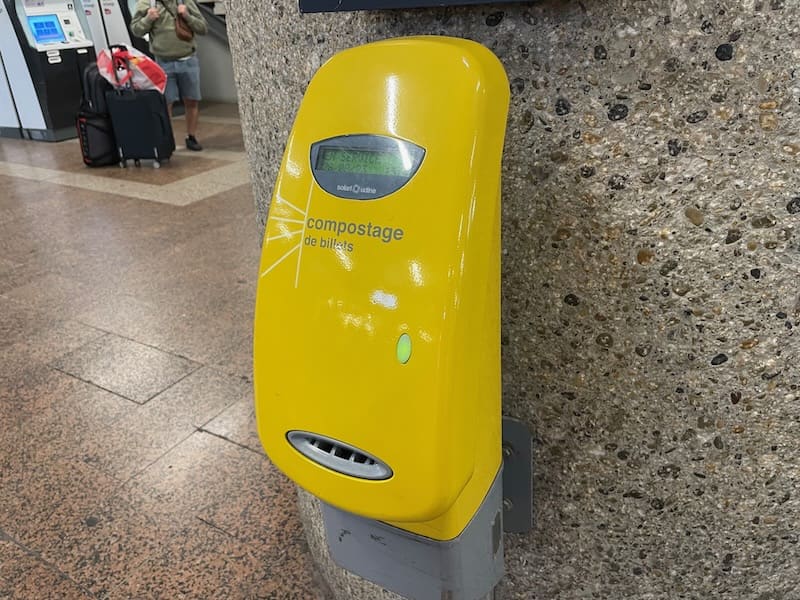
How to buy train tickets in France
There are several ways to buy your France train tickets.
- Online is probably the easiest and most straightforward way of booking a train in France, because you can take your time and study all the options, and you don't have to worry about validation. If your plans are relatively clear, just head to Trainline or Rail Europe and book your ticket.
- You can buy your ticket from a travel agent, if your ticket is perhaps part of a larger trip.
- You can buy it at the train station, either from the office or from the machine. Large train stations have offices that are usually open all day. Smaller stations, however, may only be open a few hours a day – if that. If the office is closed, there will be a (complicated) machine to sell you your ticket. There is an English option but you may have to click up to ten times to buy a simple ticket, and you'll need a card with a chip and a pin. A regular credit card won't work. Save yourself the hassle and use your phone, the information office, or buy your ticket before you leave home and print it out or download it.
- Please be aware that you CANNOT buy TGV tickets or TER tickets on the train! If the machine is broken and the office is closed, you cannot claim you were unable to buy a ticket (I speak from experience). Get on your smartphone and buy it online before the train leaves the station otherwise you will pay a fine . If everything has failed and you do not have a ticket when you board, keep an eye out for the conductor, who must be stopped during his or her "premier passage" or first swing through the train. It's sort of a "grace" period which may avoid a fine...
Train passes in France
If you're planning on doing a lot of train travel in France, then a pass of some sort may well be cost effective. If, on the other hand, your journeys will be occasional and not necessarily predictable, a pass will probably cost you more than buying your tickets individually.
Here's what you should know about French rail passes.
- There are two distinct but relatively similar passes: Eurail if you live outside Europe, and Interail if you live within Europe (UK included, despite Brexit). Find out more about these passes here .
- Either pass allows you to travel between three and eight days during a one-month period.
- You can get a pass for several European countries if you're traveling around Europe by train but you can also get a single-country pass if you're planning a trip to France only.
- Whichever pass you choose, remember that if you take the TGV, you'll need a reservation, which costs extra. You cannot just hop on.
To recap, a rail pass is a good idea:
- if you plan many long-distance trips
- if you plan to use plenty of trains that don't require a reservation
- if you want the freedom of not having to plan (except for TGVs, you can board all other trains on a whim, in any direction).
Individual train tickets are better:
- when you only plan to take the train a few times
- if there aren't many trains to your region, for example in the Ardèche or in the Luberon region of southern France.
Train rides from Paris
As you can see, taking the train in France is pretty straightforward. And since there's a good chance you'll be coming across Paris at some point, here are a few extra points to know.
The one most confusing element when taking the train to or from Paris is the multitude of train stations . Here's a quick breakdown of the main ones:
- Gare d'Austerlitz: if you're headed to the southwest
- Gare de l'Est: for eastern France, Germany and northern Switzerland
- Gare de Lyon: south towards Lyon and onward to the Riviera, to Spain and to western Switzerland
- Gare Montparnasse: western France
- Gare du Nord: northern France and Belgium, the Netherlands and parts of Germany – and the Eurostar for the London to France train
- Gare Saint-Lazare: Normandy
Bear in mind that these distinctions are more general than exact, so do check your ticket carefully to make sure you head for the correct station. Getting to them isn't complicated because they're all on either commuter lines or rapid subway lines.
Also bear in mind that if you're changing trains in Paris, you may have to cross town to do so. Sometimes not, but it pays to check.
And finally, if you have a paper ticket, make sure you validate it in the bright yellow machine.
The best trips by train around France
Organizing a France by train itinerary can be a fun experience. We have a very dense railway network combined with a huge variety of landscapes, so getting on the train will often yield something stupendous.
For example, taking the train from Marseille to Nice is a delight. Not only do you avoid the dense road traffic (especially in summer), but you'll be treated to a delightful sequence of cliffs, beaches, turquoise seas, marinas, yachts, glorious flowered gardens... the journey is a vacation in itself.
Sometimes, a banal everyday journey can be stunning. If you're traveling from Geneva, Switzerland towards Aix-les-Bains, as I have often done, you'll discover two distinct visual gems: the gorges and aqueduct over the Rhône as you speed across the Swiss-French border, and the beautiful shore of the Lac du Bourget, where the train line was built hugging the water.
Here's a wonderful list of some of the most beautiful French train journeys .
What if there's a France train strike?
Ah yes, the dreaded train strikes.
They're a fact of life but they don't have to be as problematic as they are made out to be. You are not powerless in the face of striking trains: there is plenty you can do to minimize your headaches if you travel by train in France, even if workers do decide to walk off the job during your holidays.
Find out about strikes ahead of time
France does not usually have "wildcat strikes", or strikes without warning. They are planned, announced, and efforts are made to minimize disruption.
- First, check the SNCF website page that lists service disruptions.
- Scour local media looking for these words: "grève + sncf + month and year". This should yield some information, which you can then translate through Google or other translation methods.
- Check TheLocal.fr . Although this is a subscription newspaper, it often has free coverage for public service items.
- The Trainline app often lists route disruptions.
Get information at the station
If your train is on strike, go directly to the station, at least if it is a large one. Unfortunately, small stations will often not have information counters. The information counter should be able to direct you to an alternate train or point you towards a bus.
In France, when rail services are on strike, buses are sometimes put into service on certain routes.
Rebook or get a refund
Most tickets are refundable, unless you've bought the absolute cheapest. Even then, you might be able to get something if you show up at the train station before your train is supposed to leave.
If you cannot get a refund, you might be able to rebook to a later train, because even during a strike, there is some train service, although it is often minimal.
These days, the SNCF has a Twitter account so you can usually contact them @sncfconnect or @sncfvoyageurs.
Have a Plan B
The most important thing you can do is be flexible, whether to catch another train or to find an alternative.
- I mentioned the bus, but if the SNCF hasn't put one on, you can still check regular bus services for yourself.
- You can also rent a car (here's a comparison engine ) to get to your destination. There is an extra cost but you can usually drop off the car in a different city than the one in which you picked it up.
- Check out Bla Bla Car , the ride-sharing service. It's rare you'll find something at the last minute but if you're desperate...
Is it easy to travel around France by train?
Train services go almost everywhere in the country, to most major cities, so yes, train travel in France is simple.
What is the most beautiful train ride in France?
There are so many beautiful spots along the French rail network! You can ride the Mont Blanc Express between France and Switzerland, or the Train Jaune in Occitania, or why not the InterLoire between Orleans and Saumur in the Loire Valley, to name just a few.
Can you travel from England to France by train?
Yes, but only by taking the Eurostar through the Channel tunnel.
Can you travel from Spain to France by train?
There are two main entry points across the Spanish border, one in the west, in the Basque country , and the other in the east, from Barcelona.
A few final tips on French train travel
- Departure times are only displayed about 20 minutes before the train leaves. So don't fret if you've arrived at the station early and your platform isn't listed yet.
- Speaking of arriving at the station, be attentive because trains often change platforms. The announcements are made on a loudspeaker and are often incomprehensible, so keep your eyes on the departure board for changes (and if you see everyone rushing off your platform, that may be an indication too). Train stations often have attendants roaming around so if you see a train company uniform, don't be shy and ask. Just don't forget to say "bonjour" before you launch into your question!
- Bring something to eat if your train journey is more than a few hours. TGVs have an onboard cafeteria but most other trains do not. Gone are the days of a uniformed steward pushing a trolley down the hall with coffee, tea and pastries...
Top header photo credit Florian Pépellin CC BY-SA 3.0 via Wikimedia Commons
Did you enjoy this article? I'd love if you shared it!
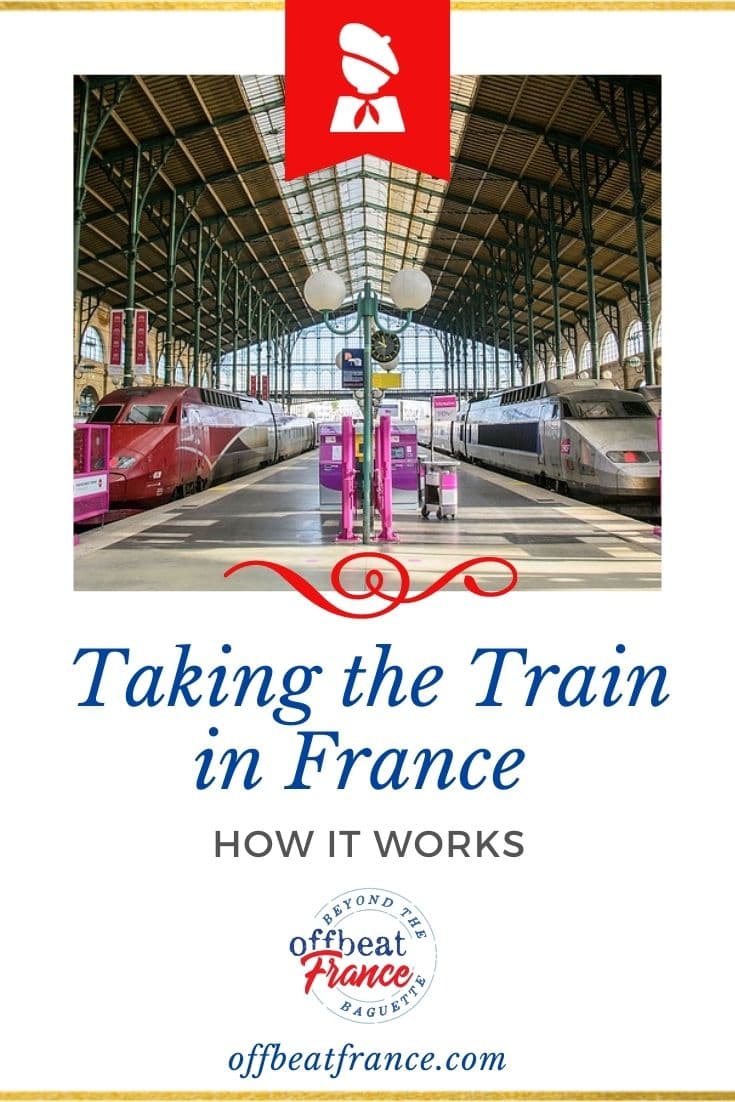
Bonjour! I’m Leyla! I was born in Paris and now live in the bucolic mountain foothills of Eastern France between Lyon and Annecy.
I'm rediscovering my own back yard after years of living abroad in Canada, Spain and Switzerland as a journalist and a diplomat - and I'm loving every minute.
Passionate about history and culture, I’ve created Offbeat France to seek out my country’s mysteries and legends, less-traveled destinations, along with plenty of food stops and many castles - I am French, after all!
What's New!
How To Get To Mont Saint-Michel: The Ultimate Hassle-Free Guide
May 02, 24 04:09 PM
The Best Giverny Day Trip From Paris (+ Orsay)
Apr 17, 24 05:32 AM
11 Masterpieces Of The Cluny Museum (Including Lady And The Unicorn)
Apr 15, 24 10:46 AM
12 Things To Do In Rouen, Normandy, That Will Enrich Your Culture
Apr 06, 24 04:47 AM
7 Thematic Ways to Explore Rouen Cathedral, A Gothic Masterpiece
Apr 06, 24 04:46 AM
© Copyright 2024 OffbeatFrance.com | All Rights Reserved | Privacy Policy & Disclaimer | Contact Me | ABOUT
As an Amazon Associate offbeatfrance.com earns from qualifying purchases
Getting Around France: Transportation Options

Train Travel in France
France is extremely well connected via rail. Laced with high-speed train networks (called the TGV, or Train à Grande Vitesse ) that connect easily to regional and local trains, France is incredibly accessible for those who don’t want to drive. In fact, traveling by train is almost always the fastest and easiest way to get around – and there are great deals to be had, too.
>>Read more about the difference between the TGV and local/regional trains and more in traveling by train in France .
Driving in France
While driving will almost always take you longer than taking the train, renting a car in France allows a lot more flexibility when traveling. Also, some small villages do not have a train station nearby, and are mostly easily accessible by car – so you can really get to the nooks and crannies of France when you drive. Driving is also great if you’re free and easy and want to take the leisurely route, stopping at villages and markets as you travel, hopping between small towns and avoiding even the suggestion of a fellow tourist in your path.
One thing though – avoid driving in or around Paris. It can get pretty hairy, and first-timers driving in a foreign country are going to get frustrated before they even get out of town! If you are planning on hanging out in Paris and then renting a car, I would recommend taking a train to a smaller city and picking up the car there.
>>Read more about Driving in France and Renting a Car in France
Bus Travel in France
While France has an extremely well connected highway system that laces the country, there is no national bus system in France. This means that while you can travel regionally by bus in France, it is not possible to travel inter-regionally by bus in France. There are some companies like Eurolines that offer international bus routes that go through France as part of a longer route, but you can not travel domestically on bus in France.
>>Read more about regional, inter-regional and international Bus Travel in France
And just because I like you and want you to have fun, here is a whole bunch of location-specific travel options for France:
How to get from Barcelona to Nice
How to get from Paris to Avignon
How to get from Paris to Nice
How to get from Paris to the Loire Valley
How to get from Paris to Normandy
How to get from Paris to Mont St.-Michel
How to get from Paris to Rennes
How to get from London to the South of France
How to get from Lyon to Milan
How to get from Paris to Burgundy
How to get from Paris to Bordeaux
How to get from Paris to Marseille
And if you need anything else, just let me know!
Trains in France – How to Travel around France by Train
Article written by Elisa - Travel Writer & Local in France This article may contain compensated links. Please read disclaimer for more info.
Train Travel in France
If you’re planning a trip to France , getting around the country couldn’t be easier than by train. Trains in France are one of the best modes of transportation and will get you anywhere you want to go in the country with ease and to or from any neighboring country.
If you’re a first-time visitor and need some assistance with understanding train travel in France, then you’ll want to read this quick guide to France by Train . This guide provides everything you need to ensure traveling by train in France goes smoothly, including information on the different types of trains in France, the best France rail pass for tourists, where to buy your tickets, and just some general tips.
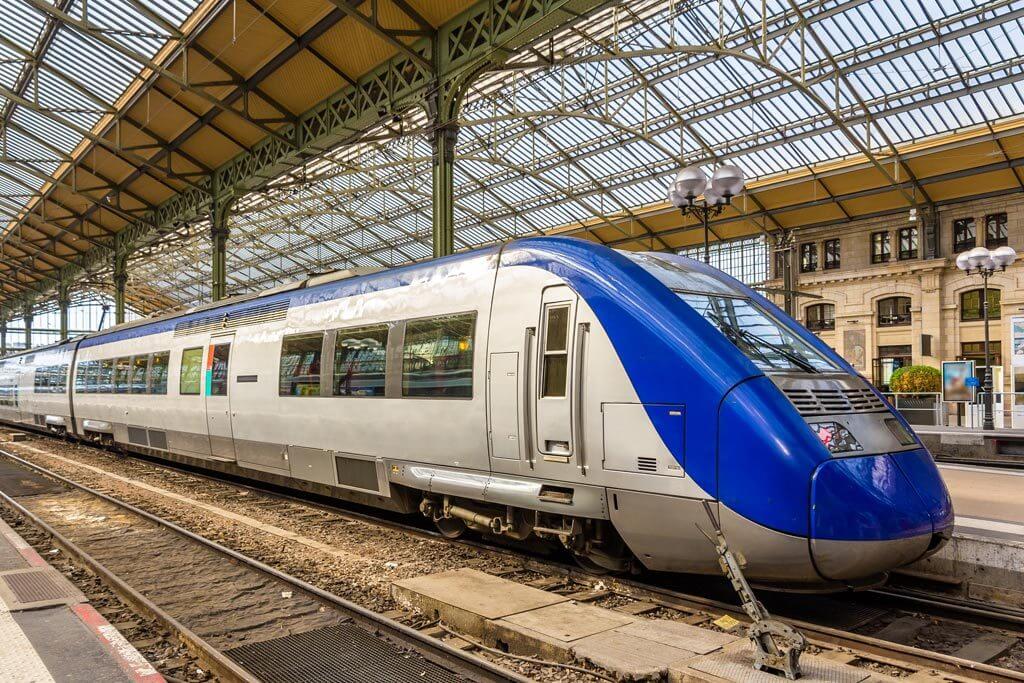
Table of Contents:
France Train Map
Types of trains in france, how to buy tickets for trains in france, sncf’s new luggage policy (as of 2024), travel france by train – destinations.
- France Rail Pass for Tourists
Getting Around France by Train – Best Tips
The French rail network links all the major French cities and the smaller rural towns and cities of neighboring countries. In the France train map below, the high-speed rail lines are in red, and the other major lines are in brown.
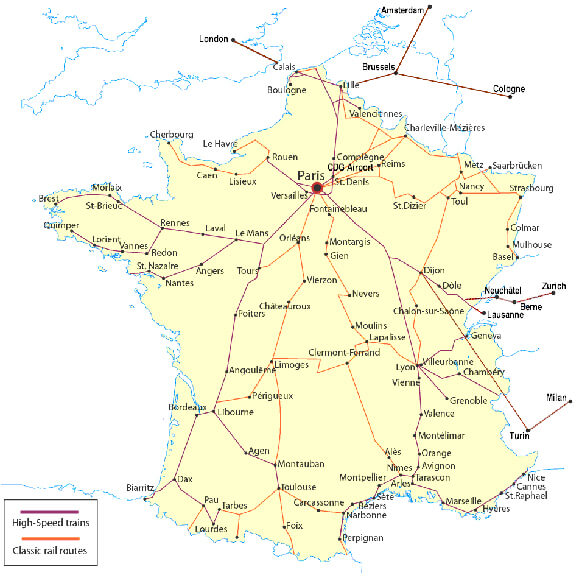
There are various types of trains in France, from local trains to long-distance trains. There are even trains that cross into neighboring countries.
Below, I have provided a brief overview of the various trains in France, so you can understand which trains will get you to your destination,
France Train Travel: First Class or Second Class?
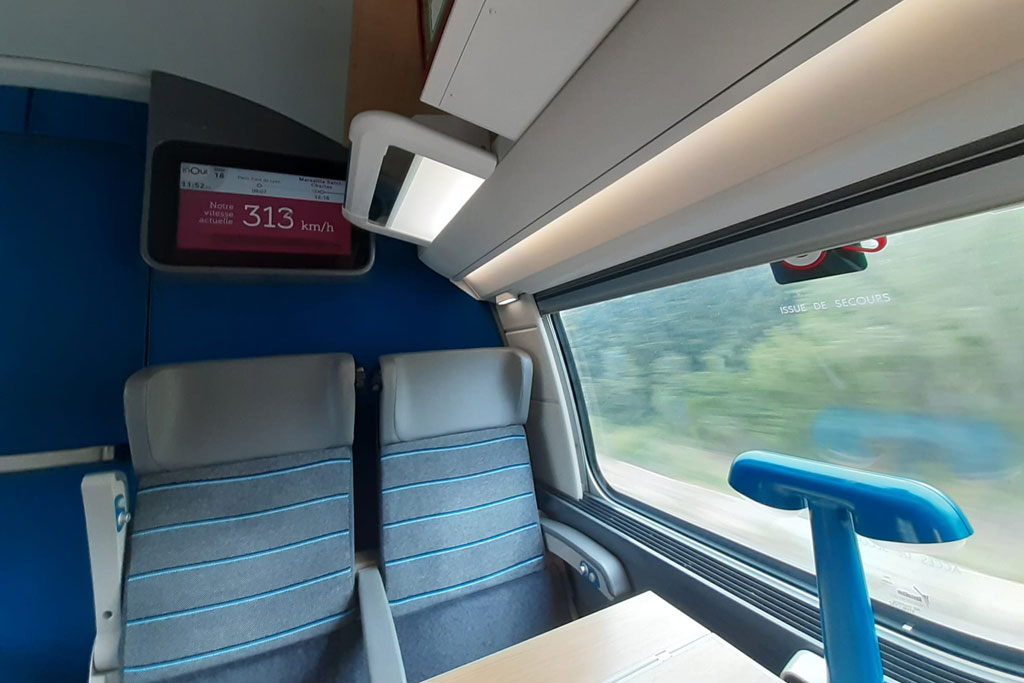
When you travel France by train, you have the option of purchasing a first-class or second-class ticket. Either class is very comfortable with most seats, including drop-down tables and power.
First-class seats are wider and more comfortable than 2nd-class seats, as there are fewer seats per car. There’s also more space for your luggage.
Personally, I find the first class to be less noisy and a place where it’s easier to relax or work (no kids running along the corridors, people talking on the phone, or listening to music with the loudspeaker).
Sometimes, the difference in price between first and second class is minimal, so the extra comfort is well worth it.
Generally, all trains have free Wi-Fi and a café on board, but you are also welcome to bring your own food.
1. TGV Trains (Train à Grande Vitesse)
The TGV train is France’s high-speed rail service, connecting over 230 cities across France and some European cities. At up to 320km/h, these trains will get you where you need to go fast!
Unfortunately, I don’t have a specific TGV map but if you look at the France train map above, the TGV network would correspond to most of the dark red lines.
With TGV Trains, you have the option of traveling first-class, second-class , and (in some TGV lines) business class . Generally, all TGV trains have free Wi-Fi and a café on board, but you are also welcome to bring your own food.
To ride the TGV, you must book a seat reservation (see below on how to purchase train tickets). For the cheapest tickets, book well in advance rather than on the day of travel. Tickets are usually available for purchase around 90 days before the day of travel.
2. Intercités
Intercités trains in France are express trains that connect the main cities within France. They cover longer distances than local trains, but not quite as long as the TGV trains. These trains service over 300 destinations in all the French regions , reaching cities such as Amiens, Orléans, Bordeaux, Caen, Lyon, Reims, Troyes, Toulouse, and Paris.
With Intercités Trains, you have the option of traveling first-class or second-class . Generally, all trains have free Wi-Fi and a café on board, but you are also welcome to bring your own food.
Like the TGV trains, the Intercités trains require advance booking. For the cheapest tickets, book well in advance rather than on the day of travel. Tickets are usually available for purchase around 90 days before the day of travel.
3. OUIGO Trains
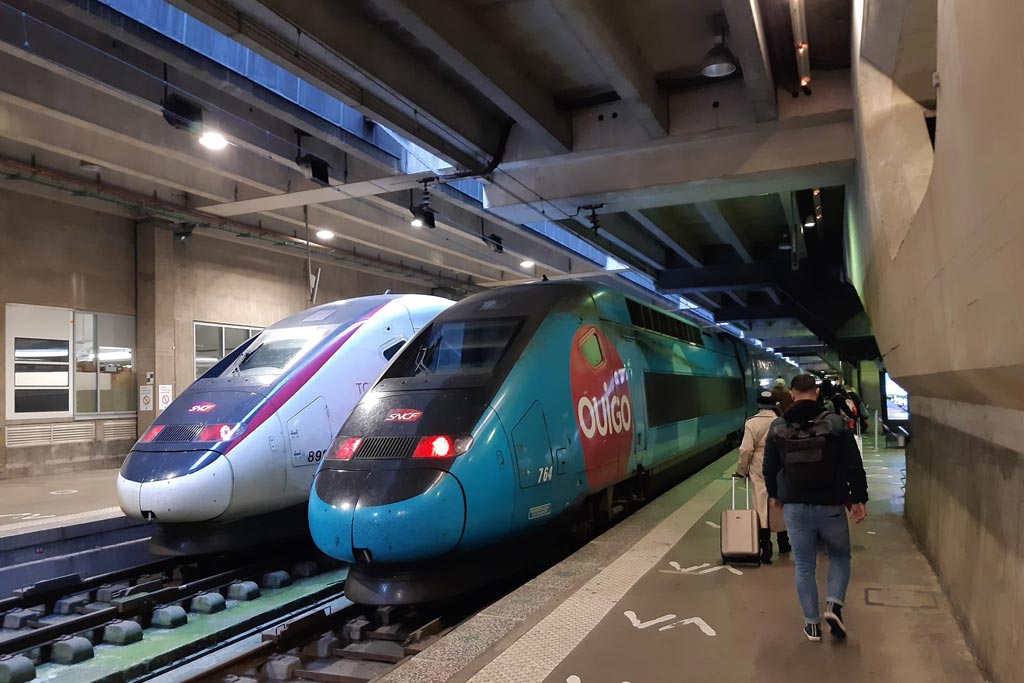
OUIGO is a low-cost rail service company established in 2013 as part of the SNCF group. OUIGO trains only have one class, equivalent to second-class travel. This is why OUIGO tickets are so cheap – from €10 for adults (depending on the destination) and €5 for children.
In OUIGO trains, Wi-Fi and a plug for charging your devices are considered extras (to pay in addition to the train ticket).
4. TER (Transport Express Regional)
TER trains are regional trains in France, usually referred to as local trains. They are ideal for getting between regional French towns and villages.
Like long-distance trains, with TER trains, you can also travel first or second class , but this will change soon (a unique class).
No seat reservation is required to travel on a TER train (you can sit anywhere you like). However, you will require a ticket. Tickets can be purchased as you go or in advance up to 120 days before the day of travel. During the high season in France, main holidays, and long weekends, I recommend booking these train tickets online in advance.
5. AutoTrain
Don’t feel like driving to your destination but need your car once you get there? Well, AutoTrain is the answer! This train runs from Paris Bercy Station to the South of France with your car onboard. So all you need to do is take a comfortable and quick Autorain and meet your car there.
6. Night Train
Some destinations are also covered by night trains – TGV trains or Intercités trains, which also have 4 and 6-bed cabins. Night trains are environmentally friendly and are a great way to save time and money (one hotel night less).
The main lines covered by night trains in France are Paris – Nice, Paris – Toulouse, Paris – Antibes, Paris – Marseille, Paris – Rodez, and Paris – Montauban. There are also international night trains from /to France, with Paris – Vienna being the most famous line.
Update December 2023: two more night train lines are available in France: Paris – Aurillac and Paris – Berlin!
>> Paris-Aurillac in the Cantal leaves in the evening from Paris Austerlitz train station and arrives in Aurillac early in the morning. It is available on weekends and during school holidays in France – Click here to buy your tickets from Paris to Aurillac (or vice-versa)
>> NightJet from Paris to Berlin leaves the German capital in the evening, traveling via Strasbourg, and arrives in Paris early in the morning. For the time being, this service is available 3 times a week, and it will be a daily service from October 2024. The train operator is OBB (Austria) – Click here to buy your tickets from Paris to Berlin (or vice-versa)
7. Eurostar (Train from the UK to France)
The Eurostar (international joint operation) is a high-speed train from England to France that connects France with the UK and Belgium via the Channel Tunnel. One of the most popular Euro trains to Paris, the Eurostar is so fast that it’s, in fact, possible to make day trips from London to Paris or London to Disneyland Paris !
Other French cities served by Eurostar trains are Calais, Lille, Lyon, Avignon, Marseille, Moutiers, Aime-la-Plagne, and Bourg-St-Maurice.
This Euro train has three classes of travel: standard, standard premier, and business. All classes of travel are very comfortable. Standard premier and business classes are served food onboard, while standard class can purchase food at the onboard café or bring their own food. On most trains, Wi-Fi is available onboard the trains and a range of entertainment is via the Eurostar App.
A seat reservation is mandatory on Eurostar (see below for how to purchase tickets). For the cheapest tickets, book your tickets well in advance rather than on the day of travel. Tickets are usually available for purchase around 90 days before the day of travel.
Unlike most of the other trains above, for the Eurostar, you are required to check in before boarding the train.
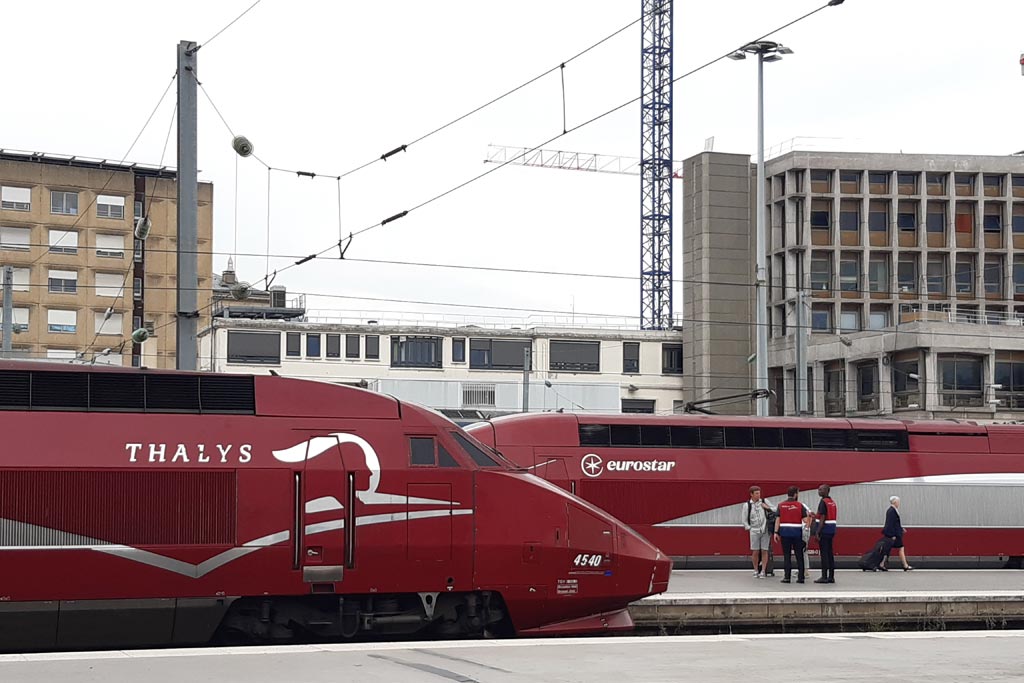
The Thalys is a French-Belgian train operator connecting France with Belgium, the Netherlands, and Germany.
When traveling on the Thalys train, you can purchase a first-class (comfort or premium class) or second-class ticket. Either class is very comfortable with all seats, including drop-down tables and power sockets. All trains have free Wi-Fi and a café on board, but you are also welcome to bring your own food onboard.
A seat reservation is mandatory on Thalys trains (see below for how to purchase tickets). For the cheapest tickets, book your tickets well in advance rather than on the day of travel. Tickets are usually available for purchase around three months before the day of travel.
There are various ways to buy train tickets in France, depending on your preference. These options are available whether you hold a rail pass and just need to make a seat reservation or if you require a point-to-point ticket.
1. In Train Stations
For the ultimate flexibility, you can just turn up and purchase your ticket at the train station. You can either purchase your ticket at a vending machine or from a ticket window (this is becoming rare, though).
If you don’t speak English, it’s often best to use the vending machines, as you can switch it to English.
However, I don’t recommend this option for long distances, as some train lines are sold out days (or months) in advance.
2. Online on the SNCF Website
Locals in France usually prefer to purchase their train tickets via the SNCF website , which is the official website of the French Railways. You can either purchase your tickets as you go or in advance to secure some good deals. Unfortunately, the English version of the site is not that great, but it is still a good way to purchase tickets online.
You can then choose to print your ticket on your phone or keep it on your smartphone.
3. Online on Omio or Trainline Websites
I recommend that you use Omio to book French train tickets – alternatively – book your train tickets on Trainline here. Both sites are easy to navigate, have great overviews of the train schedules and prices, have lots of information, straightforward booking, and are all in English. (All the things that the SNCF is NOT!)
Since 15 February 2024, the SNCF has imposed a limit on passengers regarding their luggage, which means that your suitcases will have to respect certain dimensions. The size of baggage allowed depends on the type of train.
1. TGV and Intercités Trains
One person can take up to two pieces of labeled luggage with maximum dimensions of 70 x 90 x 50 cm (suitcase, large backpack, hiking bag, sports bag) and one labeled handbag with maximum dimensions of 40 x 30 x 15 cm (backpack, shopping bag, computer bag).
In addition, it is also possible to travel with “special luggage”: “stroller, folded scooter, musical instrument in a labeled case, pair of skis in a labeled bag, wakeboard or snowboard in a labeled bag,” specifies the SNCF.
2. TER Trains
TER trains do not have a maximum size imposed. “Nevertheless, luggage must be able to be handled by yourself and enter the spaces provided on our regional trains,” SNCF says.
For the Ouigos, nothing changes. Passengers already had to respect a size and a number of bags before this new policy. As a reminder, you can board the carry-on baggage of no more than 36 x 27 x 15 cm and one piece of cabin baggage that does not exceed 55 x 35 x 25 cm.
GOOD TO KNOW: While the rules have been in place since 15 February 2024, the SNCF promises to be flexible “until 15 September 2024,” the end date of the “adaptation period.” From September 2024, there will be a fine of 50 euros for non-compliance with the baggage policy.
1. Train Travel from Paris
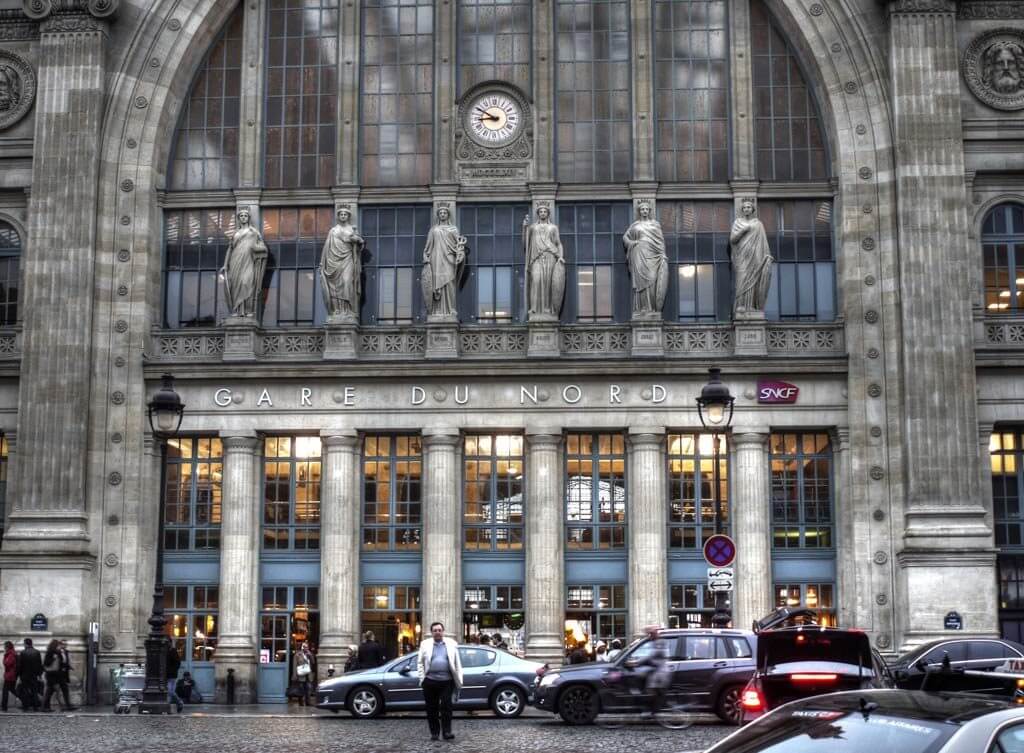
Given many tourists arrive in Paris , this is often the starting point for many train journeys within France. With the trains in Paris, you can pretty much reach anywhere within the country with ease.
Here are some of the main destinations in France served from the train stations in Paris:
» Gare du Nord: Northeast France, Lille, Valenciennes, Calais, London (Eurostar), Brussels, Cologne, and Amsterdam (Thalys)
» Gare de l’Est: Nancy, Metz, Reims, Strasbourg, Colmar, Germany, and Luxembourg
» Gare de Lyon: South of France. Lyon, Dijon, Besançon, Clermont-Ferrand, Marseille, Nice, Montpellier. Mulhouse in the East of France. Switzerland (Geneva, Zurich), Italy, and Catalunya (Girona, Barcelona)
» Gare d’Austerlitz: Tours, Poitiers, Limoges, Bordeaux, Toulouse, Biarritz, Western Spain
» Gare Montparnasse: All TGVs to West of France (Brittany, Brest, Rennes, Nantes)
» Gare St. Lazare: Caen, Cherbourg, Rouen, Le Havre.
2. Train Travel in France
Did you know France is the most visited country on earth? Whether you prefer spending your holidays swimming, hiking, sightseeing, or drinking some of the world’s best wines, it is possible to reach your dream destination in France by train.
Check out our suggested train itineraries:
- Best day trips from Paris by train
- Train itineraries 1 week
- Train itineraries 2 weeks
- Gothic Cathedrals in France train itinerary
3. Euro Train Travel to France
Train travel to France is not exclusive to French trains, so it is possible to travel to France with train companies from abroad. Examples of international cooperations are SNCF – Deutsche Bahn for train travel France – Germany, SNCF – Swiss Rail for train travel France – Switzerland, and SNCF – RENFE for train travel France – Catalonia and Spain.
Below I have listed the most popular international train travel routes to France:
- Need to catch a train from England to France? – take the super-fast and efficient Eurostar . England to France by train was never easier, and Eurostar connects Paris with both the UK and Brussels.
- From Switzerland, you can get a high-speed train to France with TGV Lyria .
- SNCF, in cooperation with Deutsche Bahn , operates frequent trains between France and Germany.
- If you’d like to travel to France by train from Belgium, the Netherlands, or Germany, Thalys operates an efficient train service.
New French destinations from Spain
RENFE (the Spanish train network) chose Lyon to introduce its new AVE fast train service for France. This new service connecting France and Spain began on 13 July 2023 between Barcelona and Lyon with no change of trains. Then, the connection between Madrid and Marseille started on 28 July 2023.
This is great news for Catalan and Spanish who wish to attend the Summer Olympics competitions in Southern France.
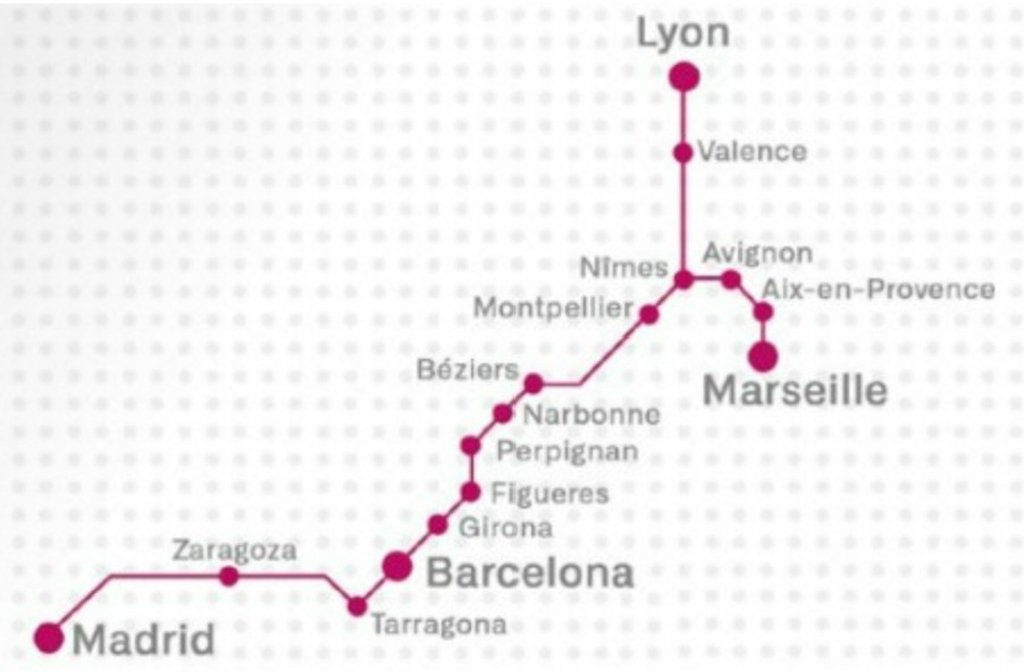
Currently, SNCF trains travel from Paris to Barcelona in less than 10 hours, with 3 routes per day. RENFE will also operate this route but only after the Summer Olympics.
France Rail Pass For Tourists
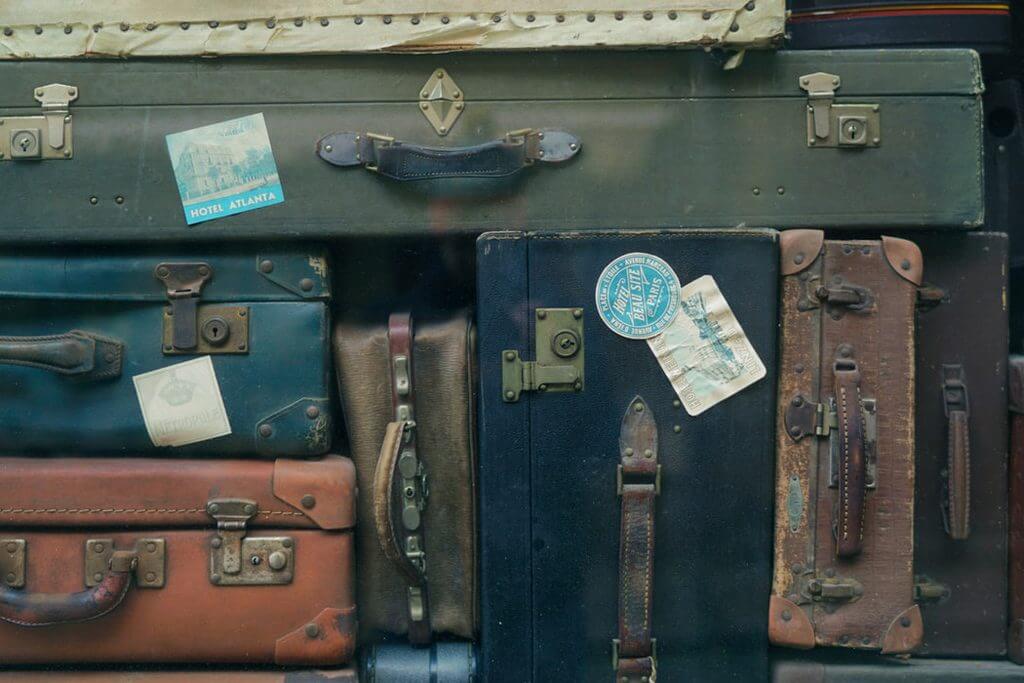
There are a range of different rail passes that you can use to travel France by train. Some passes are solely for train travel in France, while others allow you to travel in France and other European countries. What pass is best for you really depends upon your individual travel plans.
There are various benefits to having a rail pass as opposed to purchasing point-to-point tickets as you go, such as:
- Convenience – no need to purchase train tickets every time you want to take a train.
- Flexibility – given a rail pass provides you with unlimited train travel you can just turn up at the station whenever you like and catch the next train. If you miss a train – no problem catch the next one.
- Save money – this is the main reason people purchase a rail pass. Unless you book your tickets well in advance, last-minute train tickets can be crazy expensive. By having a pass with unlimited travel, you will, in many cases, save money.
- Discounts: many rail passes come with other inclusions of discounts for attractions or other modes of transport.
1. Interrail Pass One Country
For those only traveling in France, the Interrail Pass, One Country is the way to go. This France rail pass provides you with unlimited train travel in France (all France trains, including the TGC, TER, Intercity, etc.) – there is absolutely no limit to the number of times you take a train on any given day.
You can choose a France rail pass based on the number of travel days you will have in France. You can choose from 1 to 8 days of travel within a month. You can also choose to travel first or second class.
Interrail Pass can only be used by European citizens or permanent residents in Europe. If you are a UK resident, you can use this pass too.
When it comes to regional and local trains, just jump on board and sit wherever you like. For fast trains, in most cases, a seat reservation is required in addition to your pass.
With the Interrail Pass One Country , you will also receive discounts on various museums, attractions, cruises, ferries, buses, and hotels.
2. Eurail Global Pass – Multi-Country Pass
If you are visiting France as well as neighboring countries, then the Eurail Global Pass is the better rail pass option. Indeed, with this multi-country train pass, Europe has no secrets for you! This pass provides you will unlimited travel in 31 different European Countries (including France) – there is absolutely no limit to the number of times you take a train on any given day.
You can choose the best train pass for Europe based on how many travel days you will have in Europe. Choose either 3, 5, or 7 days of travel within a month or 10 or 15 days of travel within two months. If you travel by train more frequently, you can also buy a consecutive day travel pass of 15 days, 22 days, one month, two months, or even three months. You can also choose to travel first or second class.
While some trains you can just jump on board and sit wherever you like, remember other trains require you to have a seat reservation in addition to your pass.
How to Use Rail Passes
Generally, most rail passes are still paper-based and require you to write the date of your travel before the first trip of each day. You then simply board the train. If you have made a seat reservation (remember this is mandatory for some trains), you need to find this seat and sit there for the duration of your train trip.
Ticket inspectors will come through the train periodically and ask to see your ticket. You simply show them your rail pass and seat reservation (if you have one).
To make your train travel in France enjoyable, here are a few additional tips:
1. Train Strikes in France
Train strikes in France can be a major inconvenience, especially if you’re caught off-guard. I tell you all about train strikes in France – strike dates and the best tips to deal with them – in this article about French Train Strikes .
2. Arrive Early at the Station
There is nothing worse than arriving a few minutes before your train is about to depart and having no idea where to go. France train stations can be huge places, and it can be a little daunting to navigate your way around.
Arrive at least 15-20 minutes (perhaps more in huge train stations like Gare du Nord in Paris) before your train is due to depart. This will give you enough time to check the large screens and see which platform your train is leaving from and then find the platform. Once you arrive at the platform, there is often a sign indicating where the train’s carriages are so that you can wait in the appropriate place for easy boarding.
If this is your first time catching a train in Europe, or if you don’t speak French, I’d even recommend giving yourself an extra 10 minutes until you get the hang of things.
3. Bring Snacks for the Train
This is particularly important for long-distance trains. While most trains have a trolley cart that comes around or even a café on board, sometimes, for whatever reason, the trolley doesn’t come, or the café is closed. Even when they are open, they may not have your favorite drink or anything you like. Plus, the food and drinks tend to be expensive.
Most train stations have various convenience stores where you can pick up food and drinks before boarding the train.
4. Validate Tickets before Boarding
If you use point-to-point tickets on regional and local trains, you must validate your ticket before boarding the train. Usually, there is a machine just before you enter the platform where you insert your ticket.
If you are using a pass, nothing is required except boarding the train. If in doubt, always ask the station staff before boarding the train.
5. Never Leave Unattended Luggage
It can be tempting to briefly leave your bag while you walk to a nearby shop for a bottle of water, but you should never leave your luggage unattended – even for a second. Unfortunately, thieves are everywhere, and they are well experienced with taking bags in a split second.
It is also recommended that you store your luggage within eyesight on board the train instead of in the dedicated spaces between the seats and the doors. In most cases, you should be able to store your luggage in the compartments above your seat or below your seat.
When I take a train in France, I never leave my suitcase in the compartments between the seats and the doors.
6. Making Train Connections
Unlike flight connections, you really don’t need much time between train connections. Sometimes, a train connection might involve walking to the other side of the platform. However, at other times you will need to walk from one end of the train station to the other, so leave yourself plenty of time to make your connection – 10 minutes should be plenty.
And there you have it, a quick guide to trains in France. I hope that this guide to the train system in France will help you with getting around France by train. Bon voyage!
Back to Homepage
Pin it Now & Read it Later
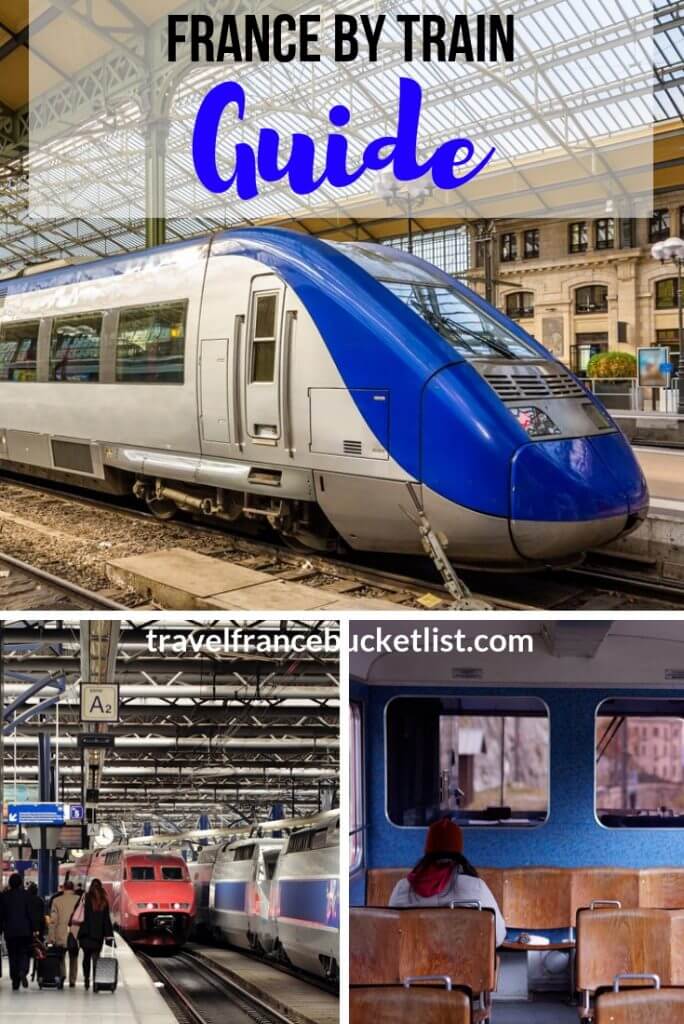
Disclaimer: This article may contain compensated links, meaning we get a small commission if you make a purchase through our links. It costs you nothing more (in fact, if anything, you’ll get a nice discount) but helps us to go on creating incredible French content for you. We trust all products and brands promoted here and would never recommend anything that isn’t of value. Please read disclaimer for more info.
(C) Copyright 2019 - 2024 France Bucket List. All Rights Reserved. Designed & Developed by France Bucket List || Disclaimer || Privacy Policy || Contact |
South of France: The Ultimate 12-Day Travel Itinerary
The French Riviera: dazzling sea, sandy beaches, red & white candy-style parasols, and pastel-colored towns. This part of South France truly feels like something out of a vintage film, so it’s no surprise that it’s been used as the setting for many Hollywood movies. Spend around 2 weeks in the French Riviera, getting lost in the old towns, smelling the lemons, enjoying the shade of palm trees, and watching the sailing boats bob on the sparkling Mediterranean. It’s a vacation dream!
French Riviera Travel Guide
Traveling in the French Riviera (Cote d’Azur) is an absolute dream. It’s easy to get around, every town has its own unique wow factor, and the coastline is as pretty as a picture. Enjoy all the top things to do with this complete French Riviera travel guide.

Day 1 – 2: Marseille
Marseille is the best place to start your Cote d’Azur trip, as the oldest city in France and the capital of the French Riviera! It’s a romantic city, with narrow alleys filled with pastel-colored houses, flowers, and elegant ancient buildings. However, it’s also dynamic and vibrant, with its street art, food markets, and modern architecture that pops out amongst the old.
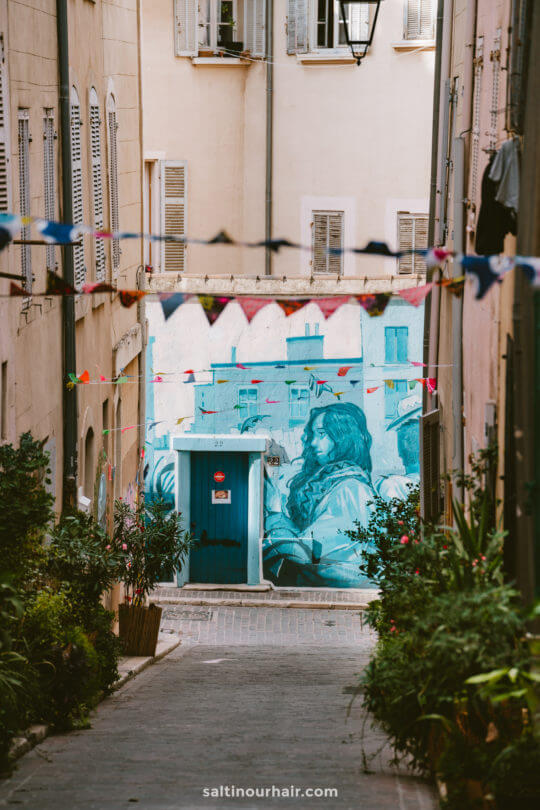
There are so many great things to do in Marseille itself, however, it’s also a great jumping-off point to visit some stunning natural wonders in the area, such as Calanques national park. Here you can hike along sheer cliffs and among dense greenery, before reaching sheltered coves with stunning blue water. This is what the French Riviera is all about: the perfect combination of refreshing summer swims, warm nights, delicious dinners, and city sightseeing.
Read: Things to do on a city trip to Marseille

Where to stay in Marseille
The best place to stay in Marseille is anywhere near the old port (Vieux Port). It’s right in the center of the old town and the best place to stay to see the sights and be at the heart of the action of the city.
Hotels in Marseille 😴

Getting to Marseille
Despite being in the deep south of France, Marseille is really well connected by train to other cities in France, as well as other cities in Europe! For example, you can take a train from London, Paris , Rotterdam , or Amsterdam . This is a fantastic slow way to travel, allowing you to see beautiful landscapes and be more sustainable.
Find your train options to Marseille here.
Marseille also has its own airport, which has flights leaving to many other international destinations. This makes it a very easy place to fly into on your French Riviera trip!
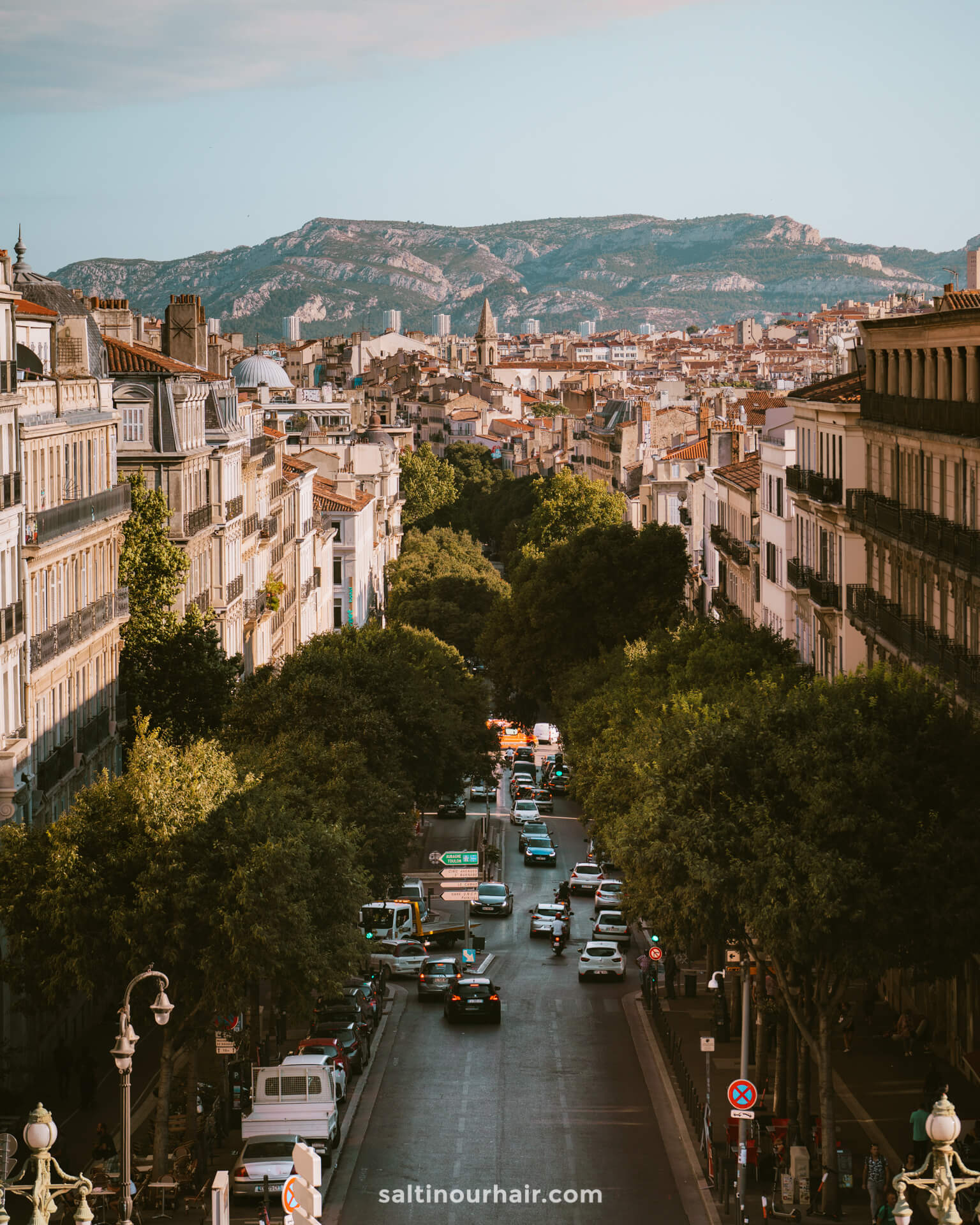
Day 3 – 4: Cassis
Cassis is just 30 minutes away from Marseille, but a whole world away from the bustling city life. When you arrive in Cassis, you’ll immediately be transported to a slower pace of life, and the beauty of the town is truly like something from an old painting. There are pastel-colored houses that complement the charming harbor, and loads of delicious restaurants to choose from.
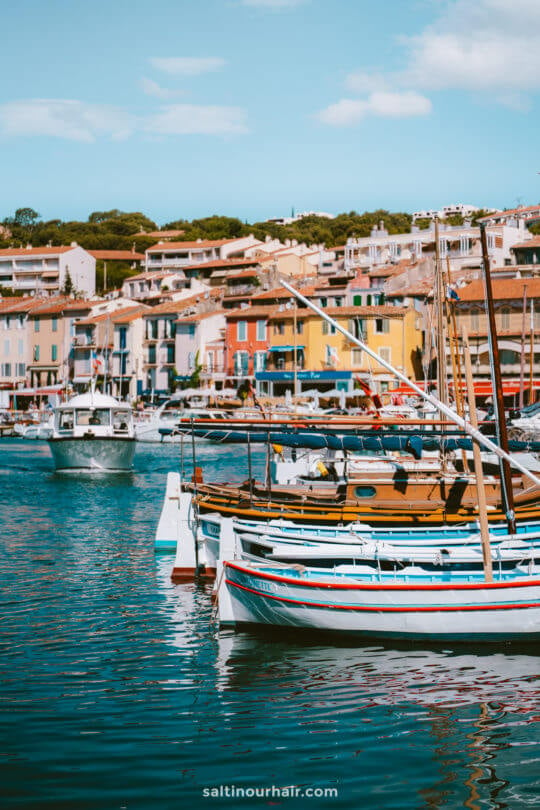
Food is very important here and the small town is famous for its extensive market, with beautiful locally sourced products. Grab your shopping bag and head here to buy the most delicious ingredients for your dinner!
Read more about Cassis in the Marseille travel guide
Where to Stay in Cassis
Cassis is small, but there are plenty of great places to stay. If you’re looking for a little more luxury, there are some incredible hotels that sit high above the town on the surrounding cliffs, with views of the sea. There are also local guest houses too, which are the perfect place to stay to be in the heart of Cassis.
Hotels in Cassis 😴

Getting to Cassis
Cassis is only 30 minutes drive from Marseille, so use Marseille as your main hub for travel. From Marseille, you can travel to Cassis by train in 18 minutes for as little as 5 EUR.
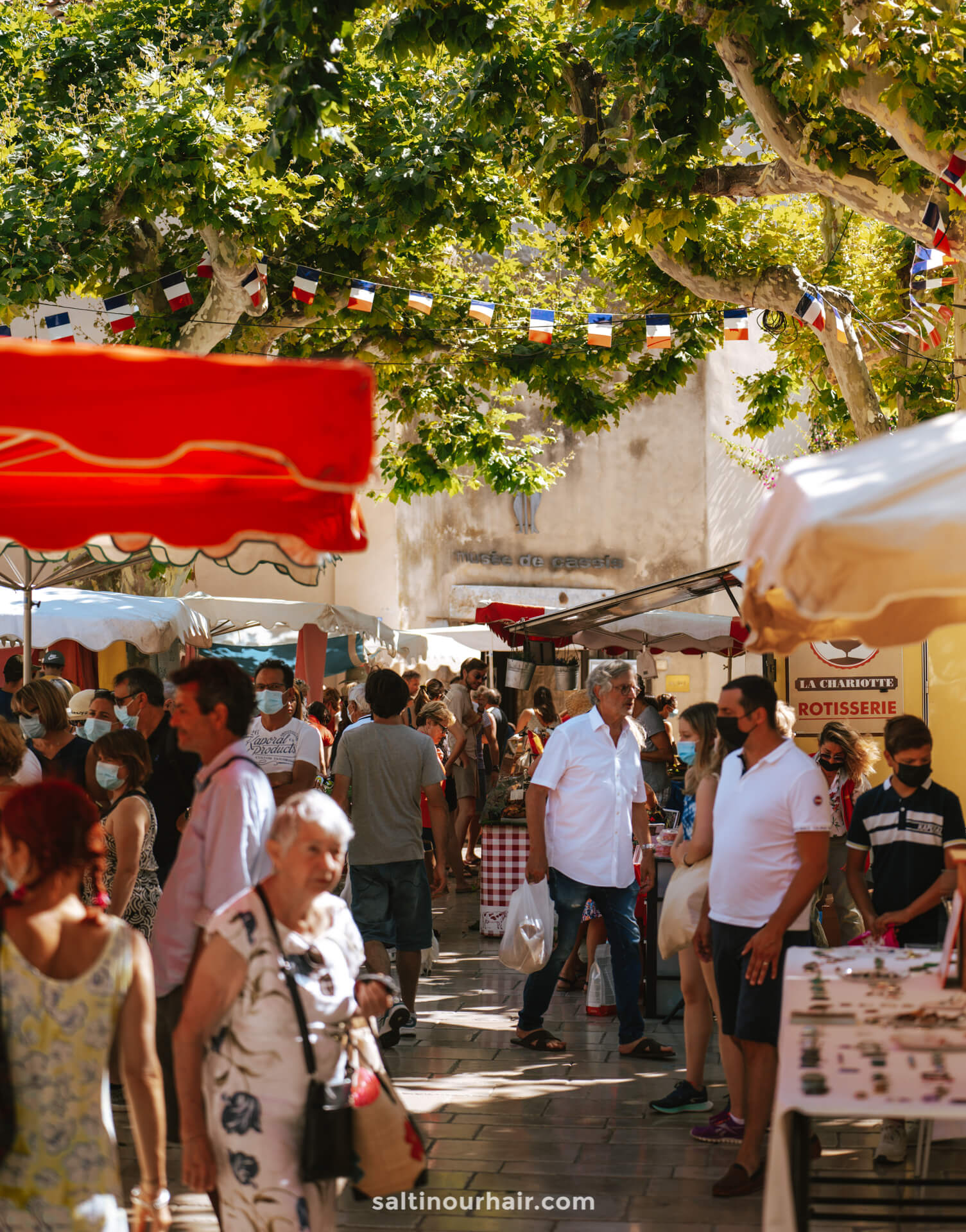
Day 5: Saint-Tropez
Saint-Tropez used to be a small fishing village popular with artists. Over the years, it became known as a luxury destination. Now, the colorful town is home to chic cafes, beautiful houses, and a harbor full of elegant yachts. One of the best things to do is come, people-watch, and sit in one of the harbor-side restaurants with a cocktail in hand.
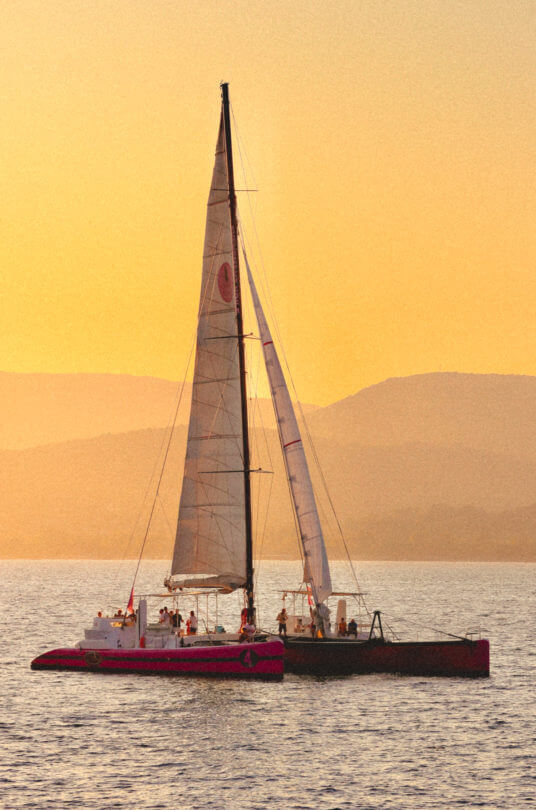
All of the beaches in Saint-Tropez are beautiful! The water here is a stunning turquoise color that is reminiscent of a Caribbean island – perfect for a day of relaxing and swimming. Hire yourself the classic red and white parasol and live out your French Riviera dreams.
Tip: Saint-Tropez has a citadel that sits high up on the hill above the town. It’s the perfect place to go and catch some magical views, especially at sunset or sunrise.
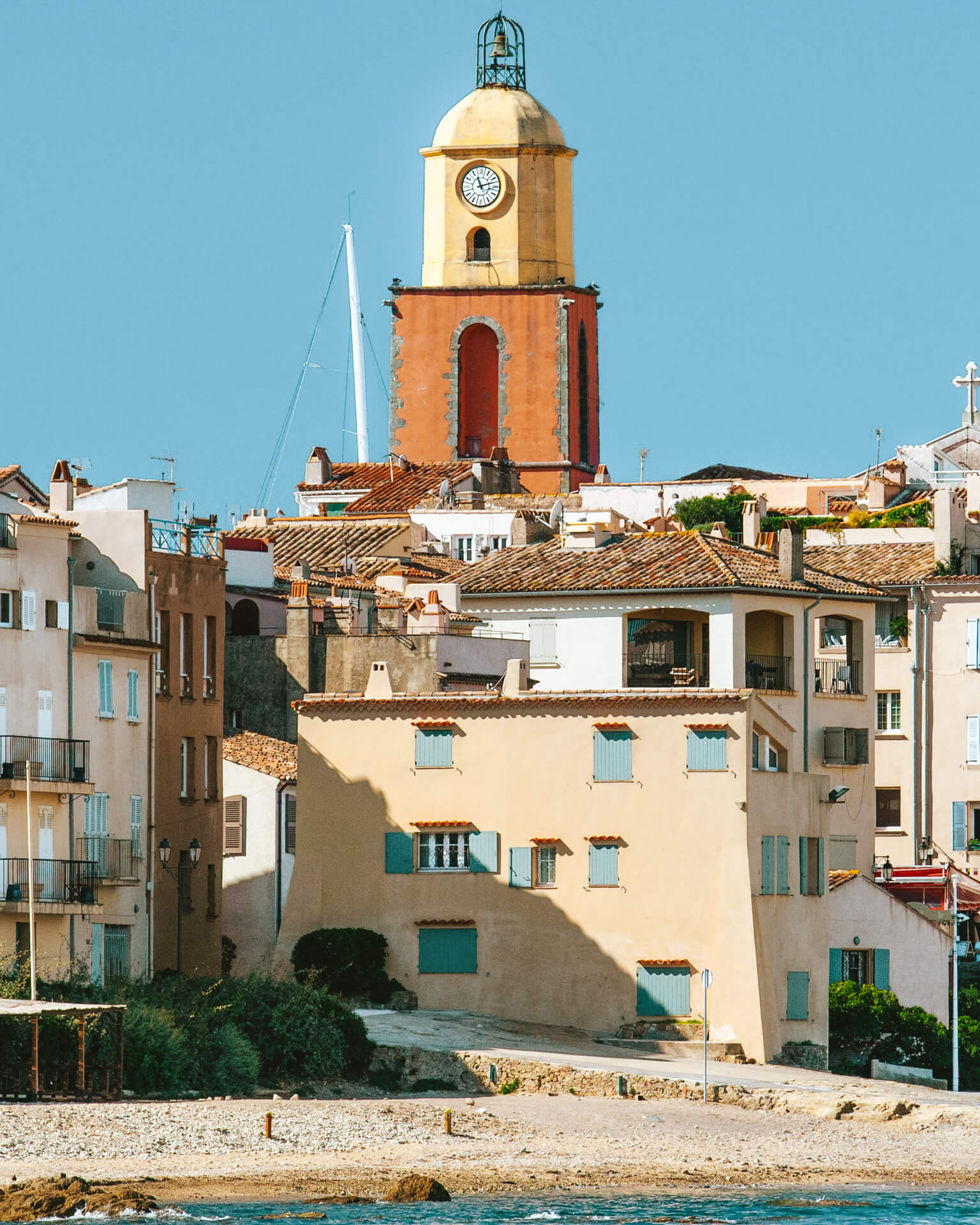
Getting to Saint-Tropez , French Riviera
The nearest airport to Saint-Tropez is Toulon (50 minutes). Alternatively, there is Nice airport which is 90 minutes away.
Reaching Saint-Tropez by public transport is a little harder as there is no train station. However, you can take a train from Nice to the nearest station, ‘St Raphael’, which takes around 50 minutes. From here, you’ll need to take a taxi to Saint-Tropez (1 hour and 15 minutes).
Day 6: Cannes (or Antibes)
Known for the Cannes Film festival, the city is often in the spotlight as a place for celebrities, bringing it a certain exclusivity. However, it’s still a charming port town and there are ways to enjoy it without breaking the bank!
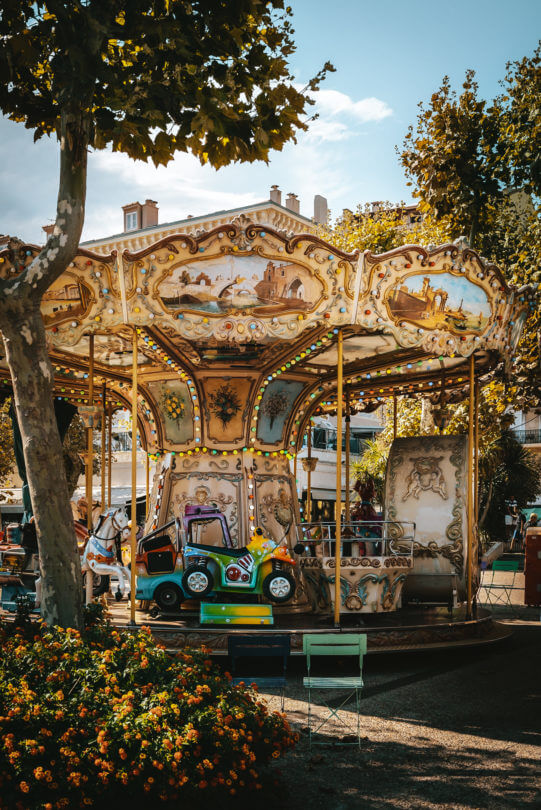
There are lots of great free things to do, from visiting the famous weekly market to finding murals in the old town (Le Suquet). You can also stand in the same spot as some of your favorite actors and actresses by visiting the Palais des Festivals, where you can see the red carpet and the ‘walk of fame’. Or, as an alternative to Cannes, visit Antibes!
Getting to Cannes
Reach Cannes from Saint-Tropez by car in 2 hours or by train from Nice in under half an hour.
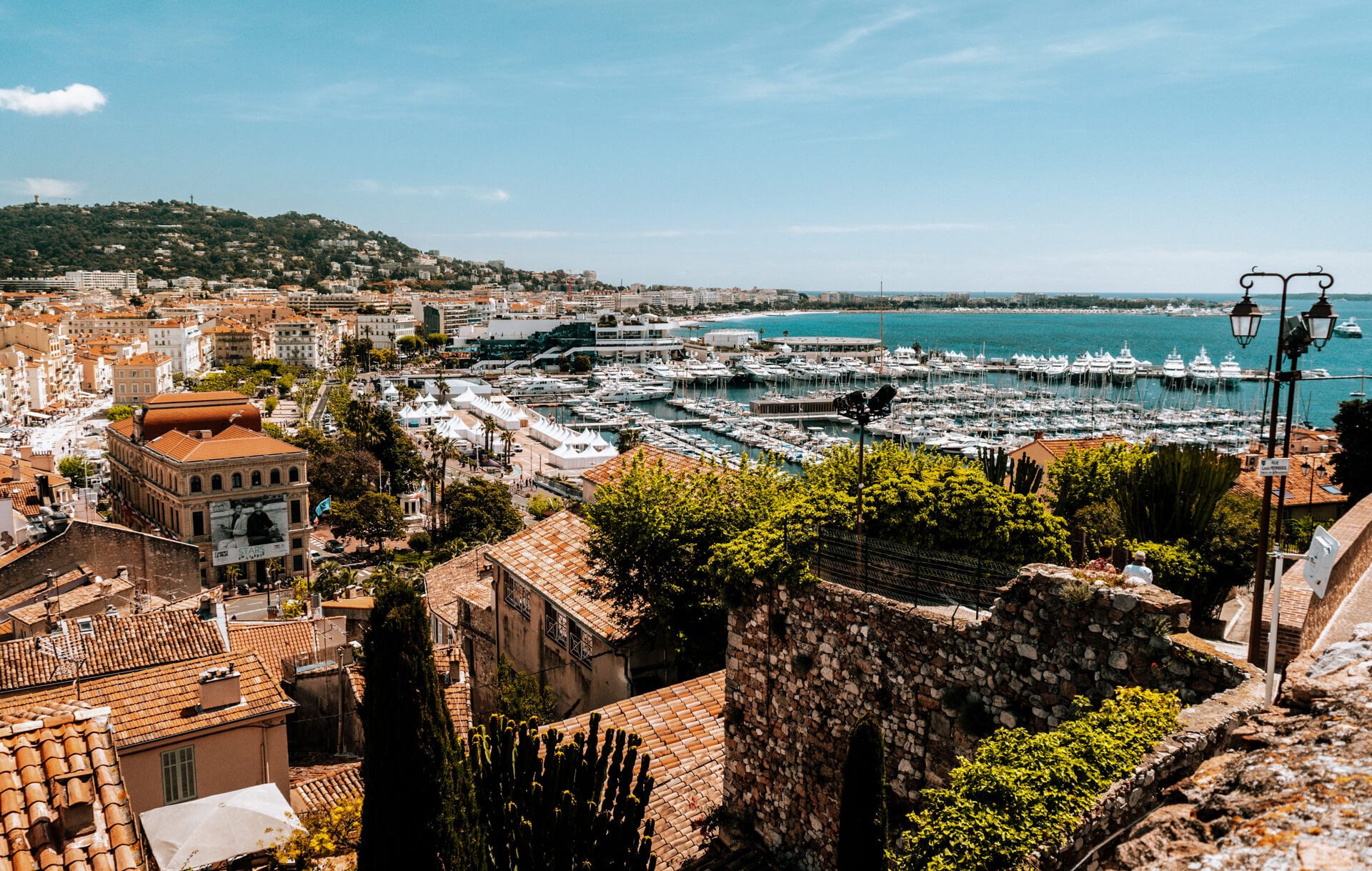
Day 7 – 8: Nice , French Riviera
Nice is true to its name: one of the nicest cities in our French Riviera travel guide! Sandwiched between the majestic Alps and the dazzling blue of the Mediterranean Sea, it’s no surprise that Nice is one of the most popular places to visit on the Cote d’Azur.
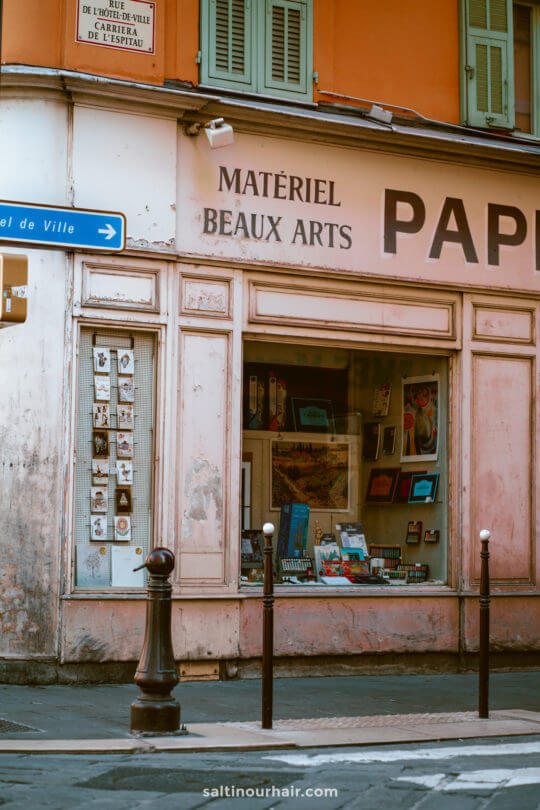
As a seaside city, one of the best things to do here is to visit the many beaches. Follow the Promenade des Anglais, a long boulevard that follows the sea. Although it looks like there is one long stretch of beach, it’s actually split up into 30 different beaches (some private, some public) for you to choose from.
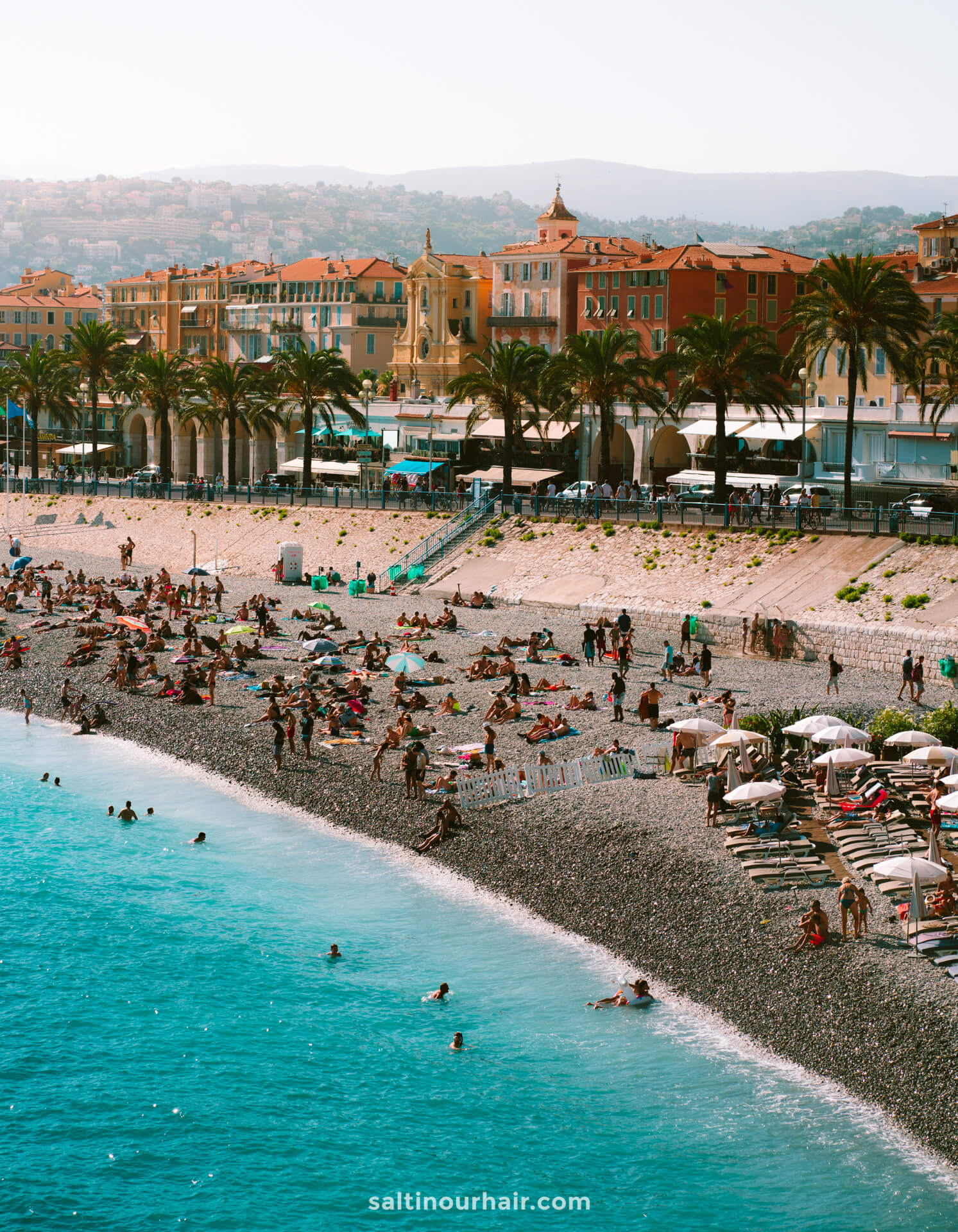
In the evening, take a picnic with the food you’ve bought at the market and head to the top of Castle Hill. Here you’ll discover panoramic views out across Nice and the surrounding coastline; it’s the perfect place to sit as the sun goes down.
Tip: Nice is oozing with history. One of the most unusual historical buildings is the Russian Orthodox Cathedral, known as one of the most impressive of its type outside of Russia itself.
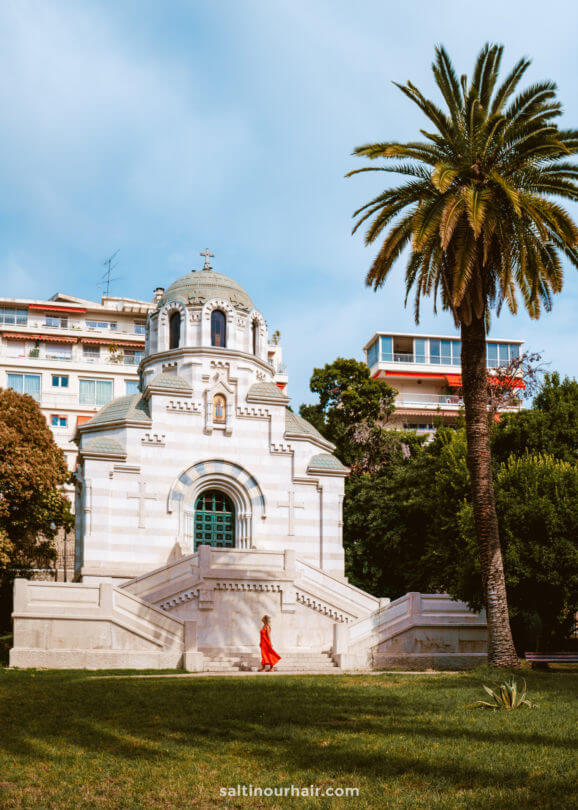
Where to Stay in Nice
Many people choose to base themselves in Nice for the entire duration of their stay on the French Riviera, as it’s such a good location to get to all the other delights of the Cote d’Azur. It’s also got loads of great accommodation options for a variety of prices. Whether it’s beachside or in the historic center, there’s something for every kind of traveler.
Hotels in Nice 😴

Getting to Nice
Nice has an international airport so it’s very easy to get to from all over the world. Trains from Cannes to Nice run regularly and take about 35 minutes. Book your train connection here.
Read: Complete Nice, France travel guide
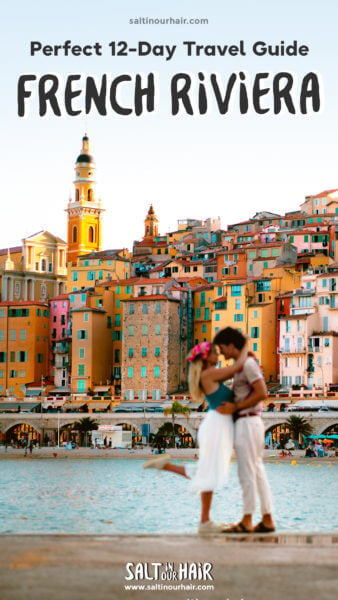
Day 9: Villefranche-sur-Mer
Villefranche-sur-Mer is the hidden gem of the French Riviera. It’s much quieter than some of the more popular neighboring cities and towns on the coastline and this adds to its charm. Every old building has been beautifully preserved and it’s so picturesque that it’s been the setting for many famous films.
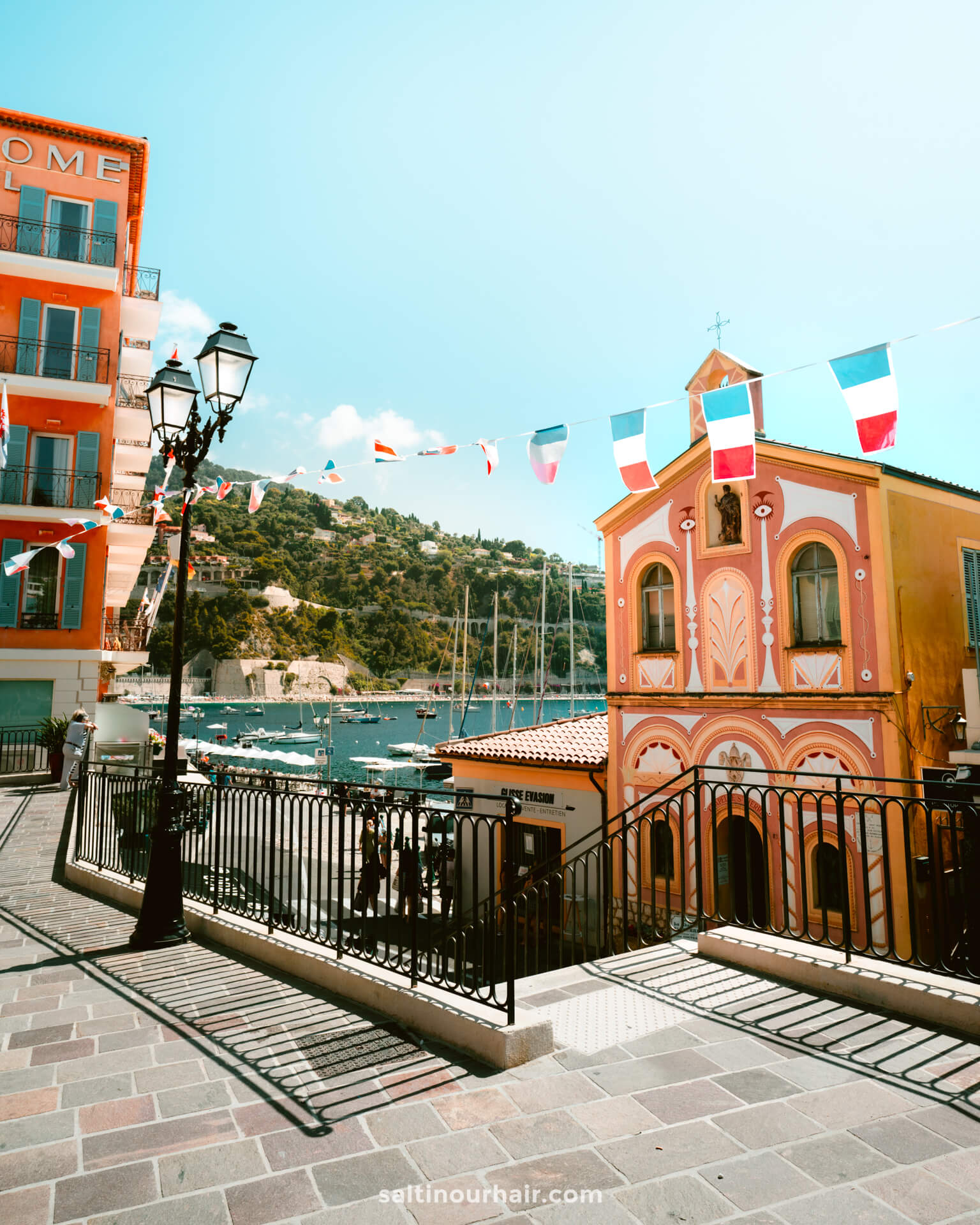
The old town is the must-see on your trip to Villefranche-sur-Mer and you could easily spend a few hours getting lost in the narrow cobbled streets. Grab your camera and enjoy finding all the beautiful details of the colorful townhouses, painted shutters, and hanging flowers. There are even some spooky surprises when stumbling across the Rue Obscure: a 13th-century passageway that goes under the old town.
Tip: Finish your day at the Plage des Marinieres. This is a beautiful bay, with perfect water for swimming, which looks across to the colorful old town.
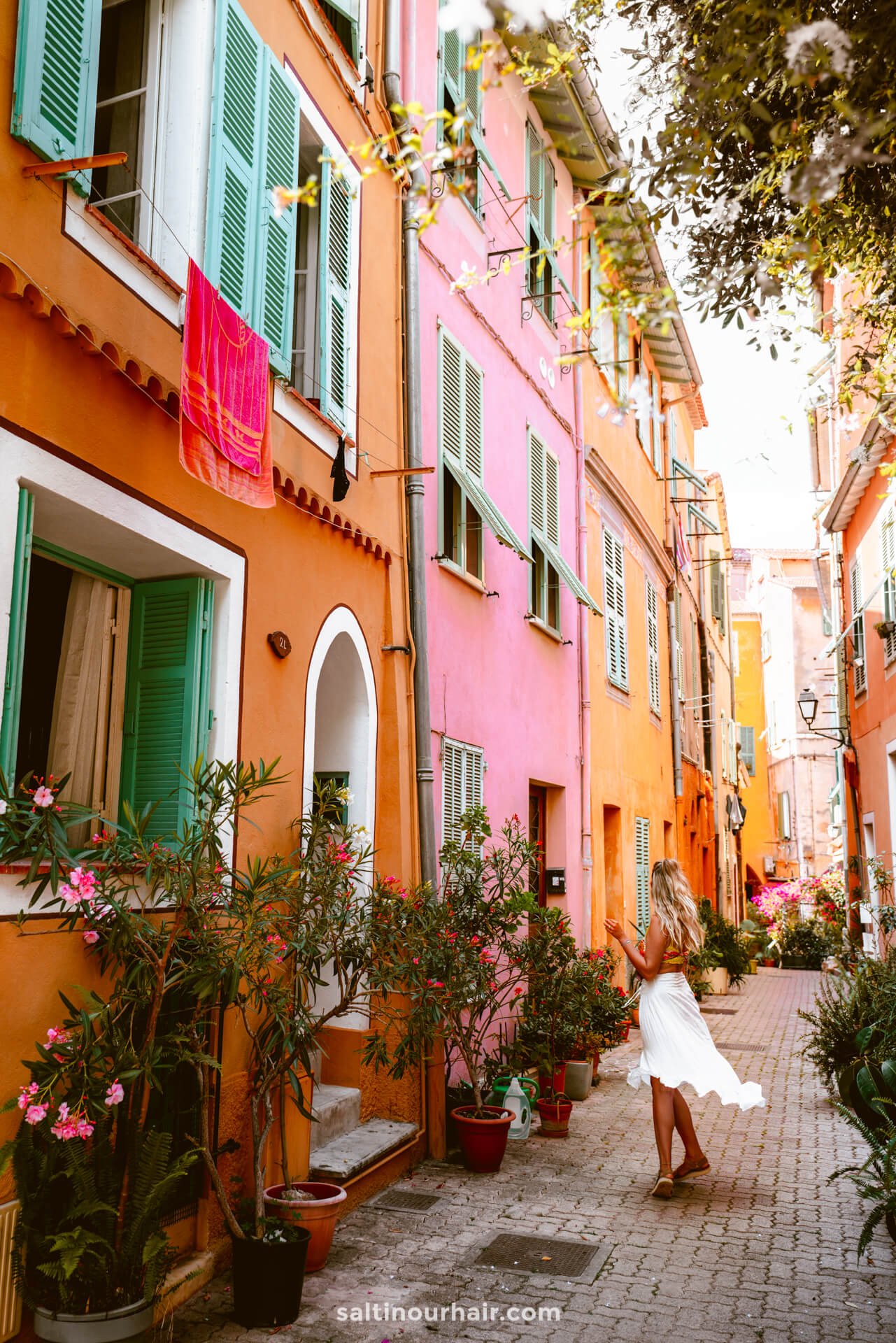
Where to Stay in Villefranche-sur-Mer
Most people choose to visit Villefranche on a day trip from Nice. However, if you have time to extend your itinerary, it’s well worth slowing down in this charming town. There are plenty of great accommodation options beachside, or you can find pretty apartments in the old town.
Hotels in Villefranche-sur-Mer 😴

Getting to Villefranche-sur-Mer
The train from Nice only takes a few minutes and costs 2 EUR. This makes it the perfect day trip! Alternatively, it’s also a great base to explore the rest of the French Riviera, as it’s quieter and less crowded.
Read everything about Villefranche-sur-Mer !
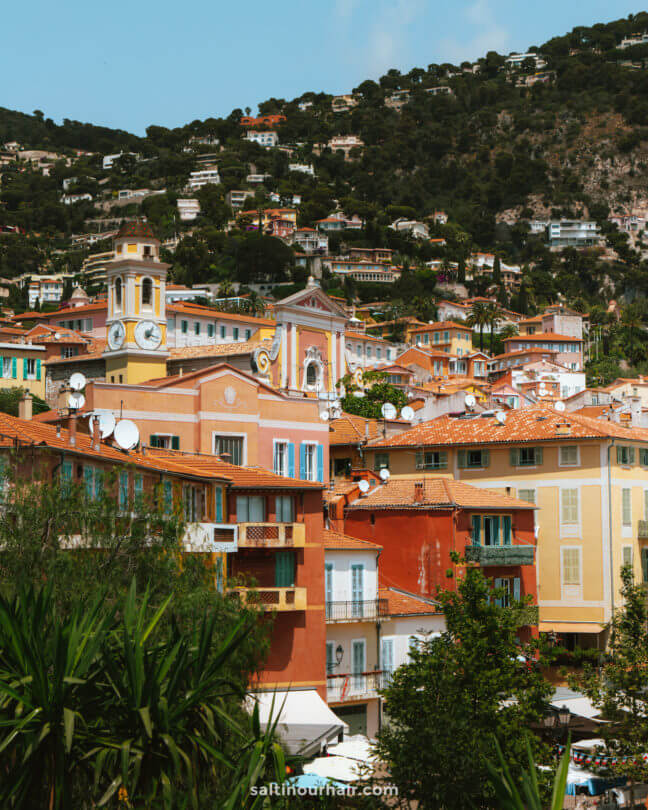
Day 10: Monaco
Monaco is an independent state that’s so beautiful it has become an exclusive holiday destination for the rich and famous. There are grand houses, villas, and even a palace to see on a day trip to Monaco.
Spend your morning exploring the city, your afternoon relaxing on the beautiful beach, and the evening enjoying the legendary nightlife!
Getting to Monaco
Take a train from Nice to Monaco in under half an hour. You can also drive in around 30 minutes but be aware that parking is very expensive.
Book your train tickets here .
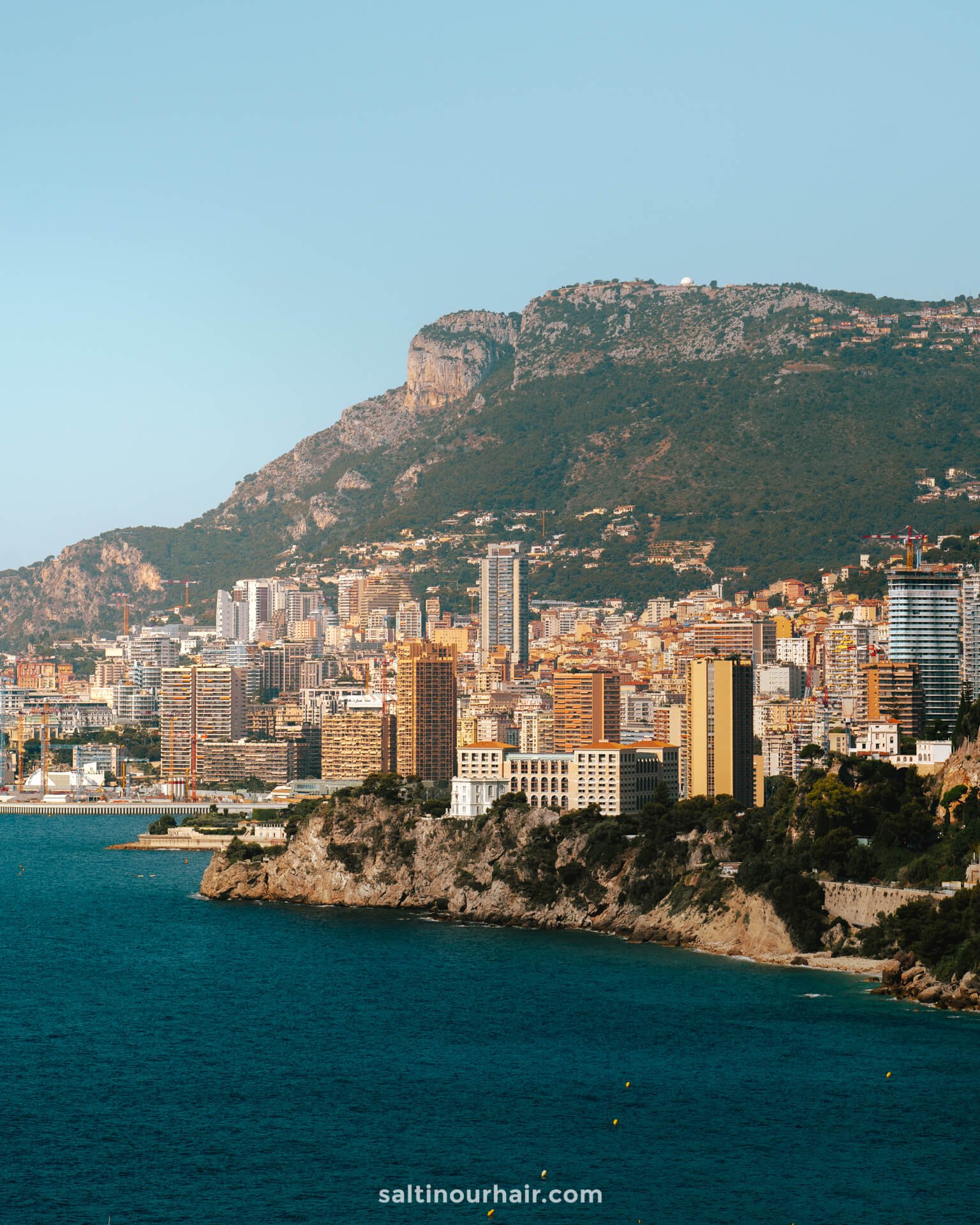
Day 11 – 12: Menton – Pearl of the French Riviera
Menton is known as the ‘Pearl of the French Riviera’ and for good reason! The town has a beauty that is postcard-worthy, with its pastel-colored houses, terracotta roofs, and gardens of lemon trees.
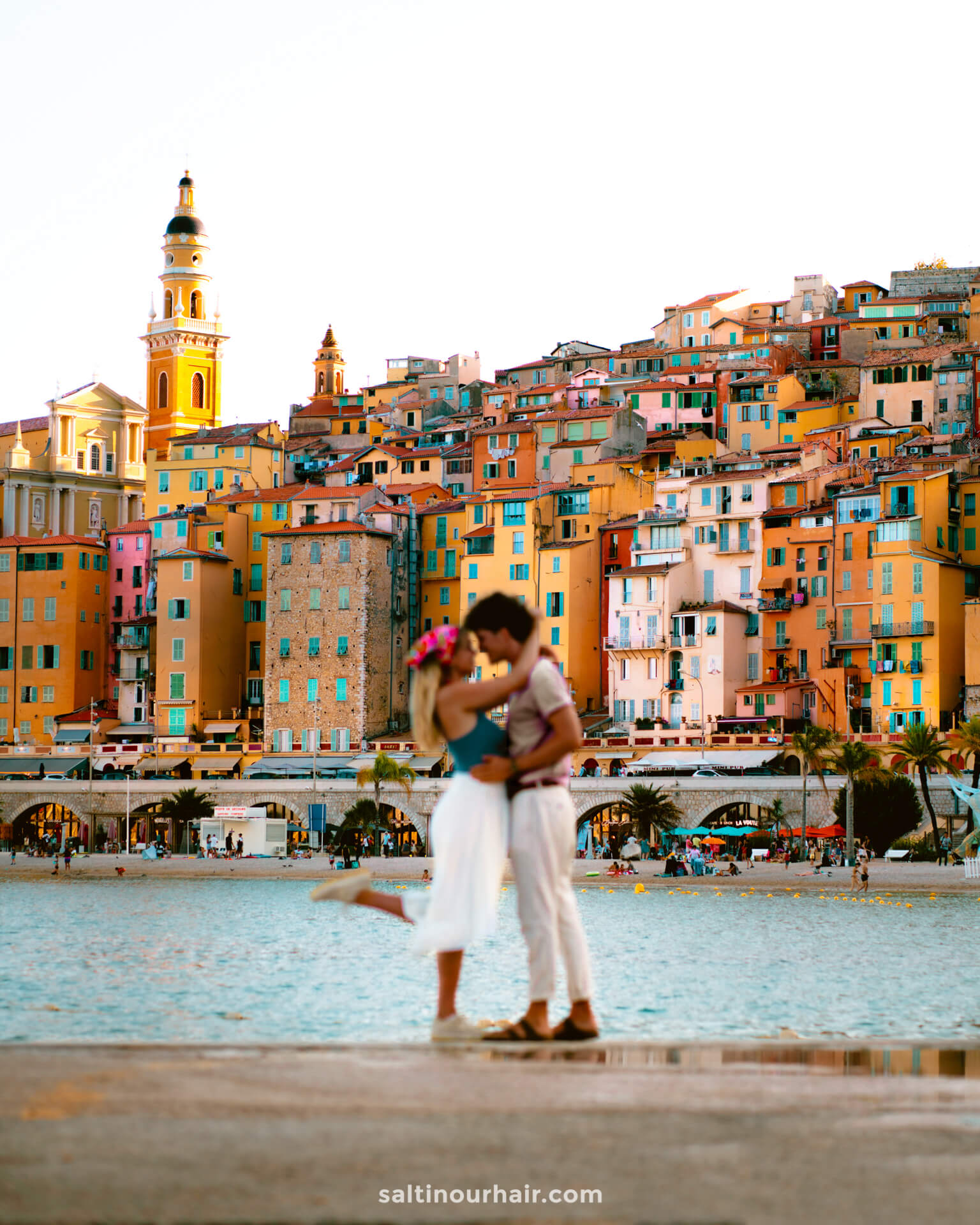
Best of all, it’s thought to be one of the warmest places on the coastline, with over 316 days of sunshine a year! This means it’s the perfect place to visit the French Riviera at any time of year, and it’s the perfect place to grow lemons. The town is very proud of this, and you can find every type of lemon product imaginable. There’s even a lemon festival held every year at the end of February.
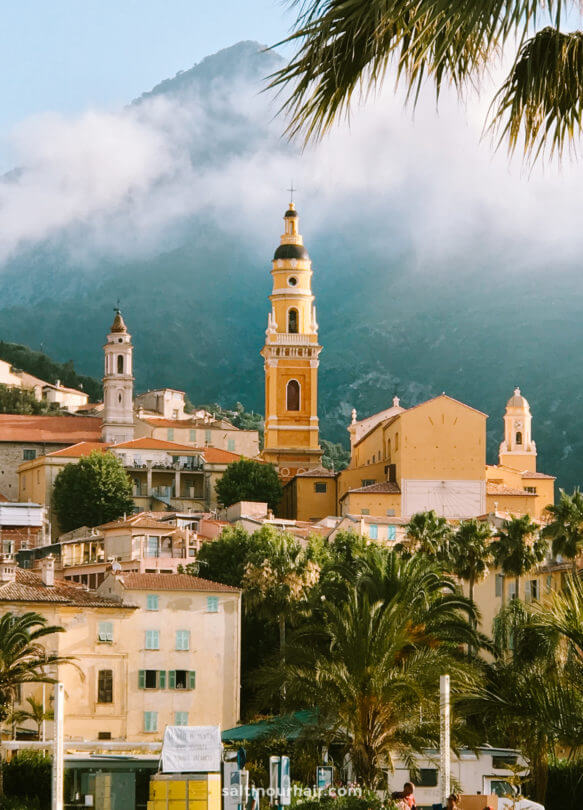
Just like Nice, there are plenty of town beaches to choose from. The ones to the east of Menton (towards Italy) are the sandier ones and are a great place to relax after a day of wandering the steep streets of the gorgeous old town.
Did you know? Menton is so close to the border of Italy that it can feel more Italian than French. Hello, pizza, pasta, and gelato!
Read: Menton – The Pearl of France
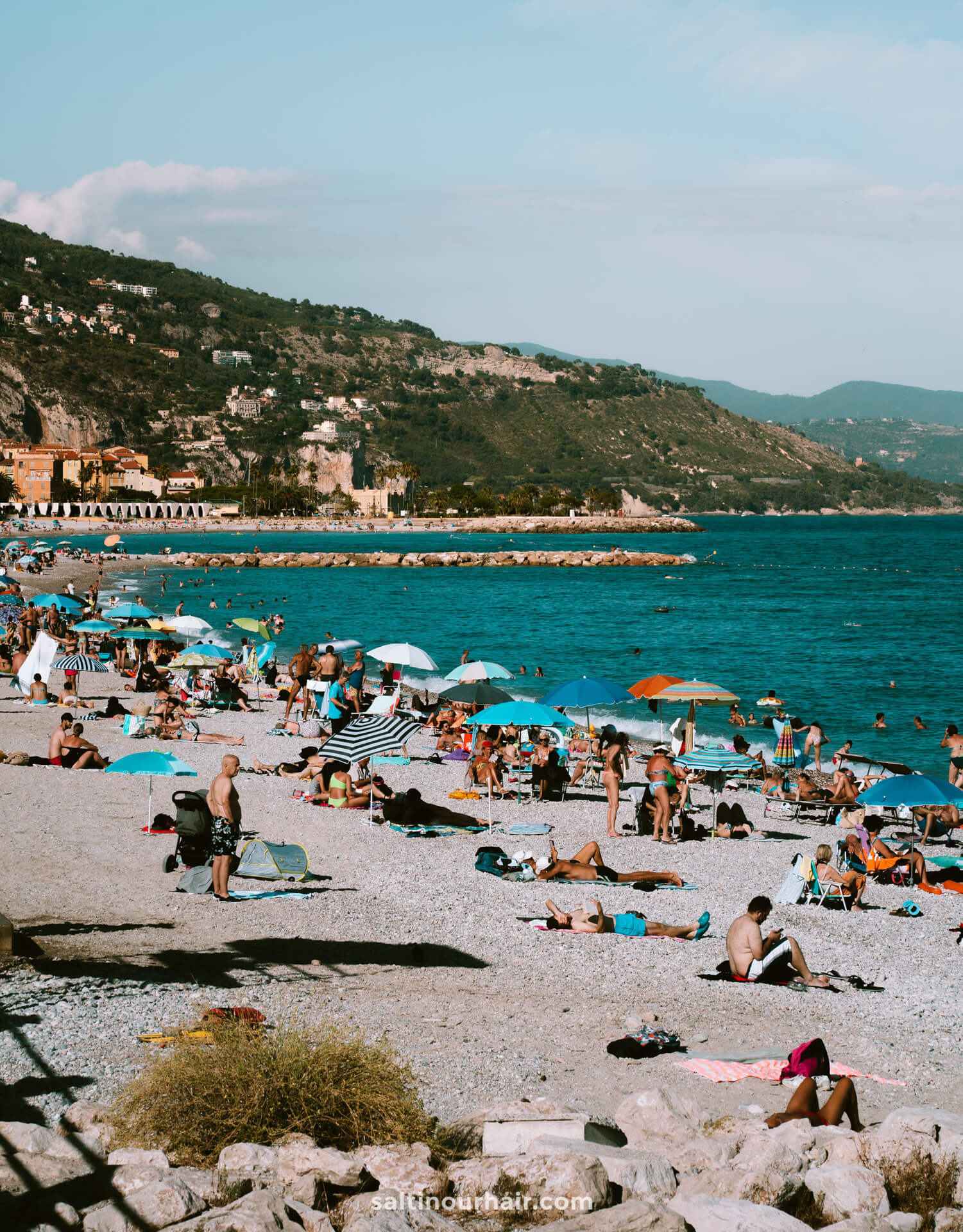
Where to Stay in Menton
Menton is small but perfectly formed, and anywhere in this beautiful town is a good area to stay. It’s particularly nice to choose from one of the hotels that look out over the sea and wake up to beautiful views!
Hotels in Menton 😴

Getting to Menton
There are two railway stations in Menton, and it sits on the regional train line that goes between Nice and Italy. From Nice, it only takes 40 minutes, and it’s a beautiful train ride.
Book your train tickets easily online here.
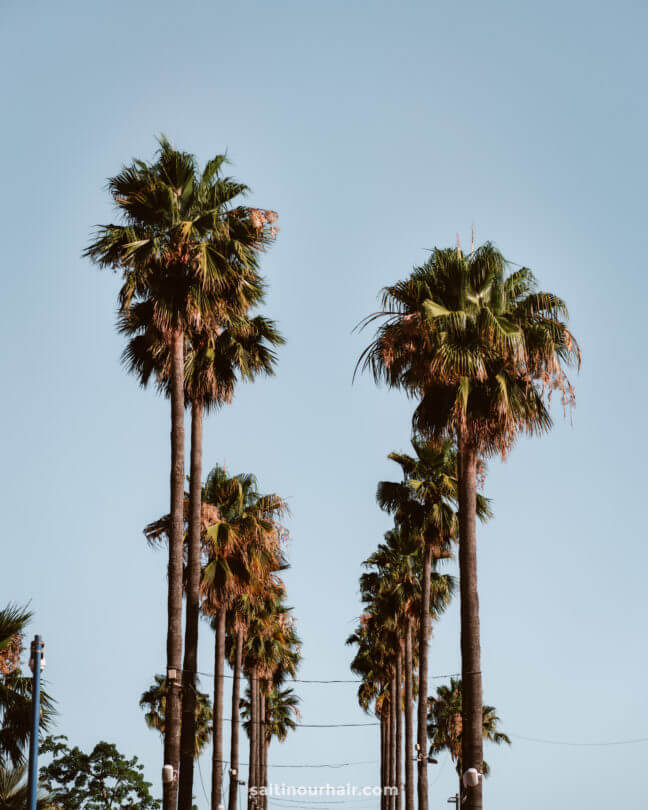
Extending your French Riviera Travels
If you’ve got more time, there are lots more incredible destinations to see on the French Riviera, like Antibes or Eze .
Costs of Traveling on the French Riviera
The French Riviera is known for its beautiful but expensive hotels and restaurants. However, there are ways you can budget for your trip. For example, travel in the off-season when the prices are lower, and it’s less busy. You can also stay in lesser-visited towns like Menton or Eze to reduce costs. Nice and Marseille are bigger cities that also offer a much bigger range of accommodation.
Costs of Traveling in France
Travel on a budget in France, from $340 − $670 USD weekly per person, mid-range $980 − $2160 USD, and high-end from $2070 − $3140 USD. However, costs depend on factors like accommodation, transportation, and activities. We did not include flights. Check flight prices here
- Hotels: $75 − $300 USD Check available hotels
- Hostels: $20 − $70 USD Check available hostels
- Transport: $5 − $20 USD Book public transport
- Car Rental: $35 − $60 USD Book a rental car
- Food: $15 − $50 USD
- Activities: $5 − $30 USD See tickets & tours
- Sim: $1 − $3 USD Get an eSIM or SIM here
- Travel Insurance: $2 − $6 USD Get Travel Insurance
How to Travel Around the French Riviera
Traveling around the French Riviera is super easy by car but also via public transport. There are great rail links between all the towns and tickets are generally very cheap
Find train tickets .
There are public buses, but roads can be busy at peak times on coastal roads. Additionally, hiring a car can give you the freedom to explore hidden corners of the French Riviera but make sure to factor in the costs of parking in the cities and towns.
We recommend to rent a car in France through Sunny Cars with free cancellation and insurance included. Book your rental car here .
Best Time to Travel to the French Riviera
The French Riviera is the warmest place in France, with over 300 days of sunshine a year! The summers are hot and dry, spring and fall are still warm, and the winters are mild. This means that any time is good to travel to the French Riviera. If you want fewer crowds and lower prices, we recommend traveling during the spring or fall.
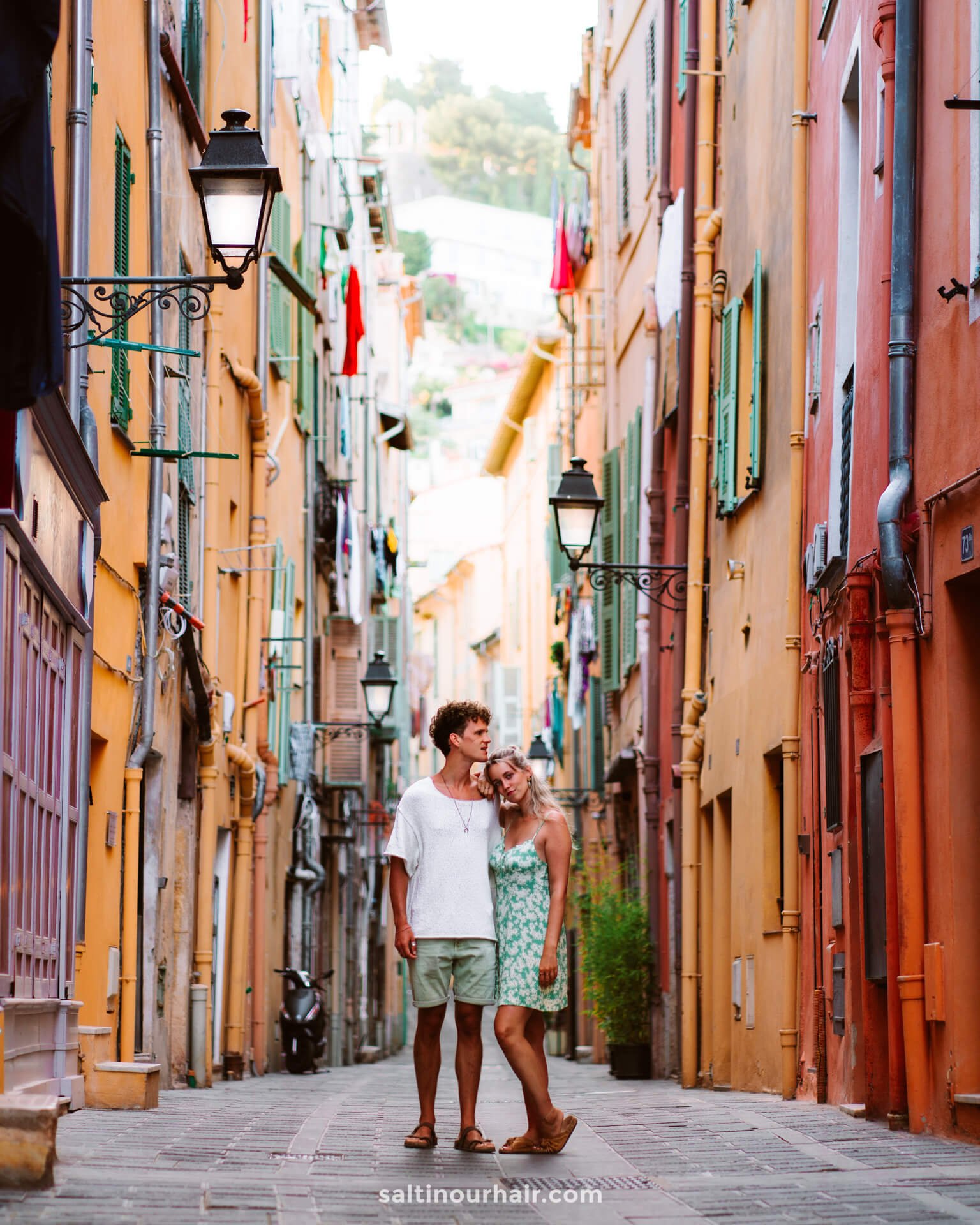
By purchasing through our links, you support us at no additional cost. Thank you for your support. ♥️
- Find Hotels via Booking.com
- Find a Rental Car via Sunny Cars
- Find Flights to via Skyscanner
- Get a Travel Insurance via Heymondo
- Book Tours & Attractions via GetYourGuide
- Book a Bus/Train/Transfer via 12Go
7 Best Things To Do in Nice (French Riviera)
Cotignac: the cliffside village of provence, france, villefranche-sur-mer: visit the most colorful town in south france.
Looking for more travel information? Plan a chat with us for personalised travel advice or get an answer from the Salt in our Hair Travel Community on Facebook.
Hey! This sounds amazing! Have you got any articles about travelling from south of France into Italy as part of your trip? Thanks!
Hi Kate, we don’t have guides that specific but you can have a look at our Italy travel guides .
Your email address will not be published. Required fields are marked *
Notify me when new comments are added.

The Man in Seat 61
A beginner's guide to
Train travel in france.
- Buy train tickets
- Buy ferry tickets
- Book a hotel
- Privacy & cookies
- Home
Train travel UK & Ireland...
Train travel in europe..., train travel in asia..., train travel in africa..., train travel in america..., train travel in australasia, paris to nice, lyon or bordeaux from €25.
The best way to travel between French town & cities is by train, in comfort at ground level. France's world-famous TGV travels at up to 199 mph, from city centre to city centre, and if you pre-book direct with the operator you can find some really cheap fares, too.
International trains to/from France
Station guides, general train travel information, useful country information, how to check schedules & fares.
You can check train times & fares for any journey in France at the French Railways website www.sncf-connect.com , called voyages-sncf.com until 2017. There's no booking fee and if booking 1st class on a TGV you can choose your seat from a seat map. It can be a little fiddly and has occasionally been known to struggle with non-European credit cards, but normally anyone from any country can use it.
You can also use either www.raileurope.com (formerly Loco2.com, prices in €, £ or $) or www.thetrainline.com (formerly Captaintrain.com, in €, £ or $). These are easy to use, in plain English, international cards no problem and they sell tickets for other European operators too, not just for French Railways. Both sites charge a small booking fee.
Maps of the French rail network
How to buy train tickets, do you need to buy in advance.
TER regional, local & suburban trains, no . This includes all TER (Trains Express Régionaux), Paris suburban trains, and all other local trains. For example, Lyon-Grenoble or Dijon-Lyon by TER, Cannes-Nice-Monte Carlo by half-hourly local train, Paris to Versailles or CDG airport by RER. No reservation is necessary or even possible, the train can never sell out, and the fare is fixed so there's no price advantage in pre-booking. Simply buy a ticket at the station ticket office or from the self-service machines, you may still need to validate it ( composter ) in the little yellow machines on the platform (although this requirement is being phased out), hop on the next train and sit where you like.
Intercités, probably . A few shorter-distance Intercité trains don't have compulsory seat reservation, so they can never sell out, you can always buy a full-price ticket at the station and hop on, sitting wherever you like. Routes include Nantes-Bordeaux, Nantes-Lyon, Toulouse-Hendaye, Béziers-Clermont. But you can still save some money by booking a cheap train-specific non-refundable prems fare in advance, so it's worth checking online.
However, most Intercités such as Paris-Limoges-Brive-Toulouse, Paris-Vichy-Clermont, Bordeaux-Toulouse-Montpellier-Marseille and Intercités de nuit require compulsory reservation, just like the TGVs explained below.
TGV high-speed trains, yes . TGV high-speed trains are all-reserved. All tickets for these trains come with a seat reservation automatically included and the price varies like air fares, so pre-book for the cheapest prices. In practice there are almost always places available on most trains even just before departure, the issue is price. On the day of departure you'd have to pay the expensive full-flex fare, for example Paris-Nice €140, but if you pre-book you can buy a cheap Prems fare, Paris-Nice from €25 upwards. So it pays to book ahead! Booking now opens up to 4 months ahead .
Fares explained
SNCF simplified TGV & Intercité fares in 2019 and there's now just one type of fare in 2nd class, although they call the higher prices Seconde and the cheaper prices Prems , which is SNCF's long-established brand name for cheap fares.
So you'll now see only one 2nd class price against each train, in contrast to the flexible, inflexible and semi-flexible fares they used to have. In 1st class there are two fare types, Première & Business Première.
Prices are dynamic like air fares, cheaper in advance, more expensive closer to departure, cheaper on quiet trains, days & dates, more expensive on popular trains, days & dates. All tickets commit you to a specific train.
All 1st & 2nd class fares are now changeable & refundable, free of charge until 30 days before travel, then there's a €5 fee until 3 days before travel, then a €15 fee until 30 minutes before departure. You have to pay any difference in fare.
From 30 minutes before the train departs, tickets can be changed up to two times for the same day and the same journey, but they become non-refundable once exchanged. Tickets are non-refundable and non-exchangeable after departure.
Business première fares are totally flexible, changeable without any fee until 30 minutes after departure. From 30 minutes before the train departs, tickets can be changed up to two times for the same day and the same journey, but they are non-refundable once exchanged. These fares are expensive, aimed at business travellers as their name suggests.
Local and regional ( TER ) trains just have one fixed price fare, usually termed Tariff normal . These tickets are valid for one journey on any train leaving until midnight on the day they're booked for or (in some cases) after you validate it in a little composter machine on the platform. Sometimes there are cheaper tariffs at off-peak times, but that depends on the region.
How to buy tickets at the station
It's easy to buy tickets at the station even if you don't speak French. For local journeys such as Paris-Versailles or Nice-Cannes, you just turn up, buy a ticket and hop on, no reservation necessary. You can buy tickets from the multi-lingual self-service machines at main stations. Just touch the UK flag for English.
For long-distance trains including all TGV , Intercités & Intercités de Nuit overnight trains, reservation is compulsory, but there are usually seats available even on the day of travel and you can buy a ticket immediately before the train departs. But there are much cheaper fares if you pre-book.
In some cases you need to validate your tickets by putting them into the little yellow machines marked Compostez votre billet at the entrance to every platform - there's a fine if you don't! Print-at-home tickets don't need to be validated, and SNCF are steadily phasing out the need to validate tickets. You already don't need to in some regions.
How to buy train tickets online
Bookings open 4 months ahead for TGV & Intercités , 3-5 months for TER regional trains.
Over the summer, booking horizons get longer: In 2024 sales opened on 24 January for travel until 22 May, on 7 March until 5 July, on 13 March until 11 September.
Google SNCF ticket sales opening to find the page on www.sncf-connect.com where they give current sales opening dates.
For Christmas & New Year horizons get shorter: Dates after the mid-December timetable change usually open in mid-October.
Buy direct from SNCF at www.sncf-connect.com
This is French Railways' own website selling tickets in € with no booking fee . You print your own ticket or can show it on your phone.
It's a little fiddly until you get used to it, it's almost as if they made it that way deliberately. The language selector is out of sight towards the bottom of the page and their home page has just one mysterious all-purpose entry field which confuses a lot of people, instead of having from and to fields like a normal site. However, I've set up all links to www.sncf-connect.com to go to a page in English with conventional from and to fields, at least I can help you with that!
A key advantage of www.sncf-connect.com is that when booking a 1st class ticket on a TGV or Intercité you can usually select your seat from a seat map.
Another key advantage is that it can sell all SNCF products including Billets Bambin (which gives infants under 4 their own reserved seat) and Espace Privatif (sole occupancy of a couchette compartment on French overnight trains). It can sell tickets with the Carte Avantage discount applied (SNCF's discount card) and can sell tickets for Ouigo lo-cost trains as well as full-service TGV InOui.
The vast majority of tickets can be printed or shown on your phone. In rare cases where www.sncf-connect.com only offers you a collect-at-station ticket you'll need a chip & PIN credit card to collect from the machines (without chip & PIN you'll need to use the busy staffed ticket counter) but if you buy at Raileurope.com or Thetrainline.com no credit card is necessary to collect tickets, just the booking reference.
www.sncf-connect.com normally works for anyone from any country, so give it a try. In the past I've occasionally known it to reject some overseas credit cards, but if you have any problems you can simply switch to www.thetrainline.com .
Buy at www.thetrainline.com
Three young French entrepreneurs thought they could sell SNCF tickets better than SNCF themselves, and they were right. They started a website called Capitainetrain which was later acquired by well-known UK ticket retailer The Trainline and absorbed into www.thetrainline.com . It connects to SNCF's ticketing system and sells the same tickets at the same prices, with a small booking fee. You can pay in €, £ or $. Who are Thetrainline.com?
It's easier to use than www.sncf-connect.com , anyone of any nationality can buy tickets at www.thetrainline.com , international credit cards are welcome. You print your ticket or show it on your phone. They ask you to print in A4 size, but if you're American printing tickets on Letter size paper is absolutely fine.
Like sncf-connect, when booking a 1st class ticket on a TGV or Intercité you can usually select seats from a seat map, a big plus.
Thetrainline.com can sell Billets Bambin , Espace Privatif and tickets for Ouigo lo-cost trains , and can apply the Carte Avantage discount.
Buy at www.raileurope.com
Two young British entrepreneurs started Loco2.com, aiming to make buying train tickets easier. Loco2 was acquired by SNCF in 2018, rebranded Raileurope.com in 2019 and sold on again in 2020. It links to SNCF's ticketing system and sells the same tickets as SNCF at the same prices, with a small booking fee. You can pay in €, £ or $. Who are Raileurope.com?
It can sell Billets Bambin to give your infant under 4 their own reserved seat.
However, it can't sell tickets for Ouigo lo-cost trains or Espace Privatif on overnight trains, nor can it sell tickets with a Carte Avantage discount. It offers a wide range of seating options including upper and lower deck on a TGV Duplex, but unlike SNCF-connect and Thetrainline it doesn't offer seat selection from a seat map.
It's easier to use than www.sncf-connect.com , international credit cards welcome. You print your ticket or show it on your phone. They ask you to print in A4 size, but if you're American printing tickets on Letter size paper is absolutely fine.
Which website should you use to buy French train tickets ?
Here's a summary of the features of each website, you can draw your own conclusions. As far as price is concerned, all the sites below charge the same basic fare (give or take exchange rates).
Type = offers basic choice of aisle, window, table-for-four or (in 1st class) a table-for-two or solo seat.
Deck = offers choice of upper or lower deck on a double-decker TGV Duplex, I recommend top deck for the best views.
Map = you can select your seat from a seat map when booking 1st class on a TGV nor Intercité.
Ouigo = Special lo-cost budget-airline-on-rails TGV trains branded Ouigo, see the Ouigo page for information .
FB = Billet Bambin , allows you to pay a few euros to reserve a seat for your infant aged 0-3, more information here .
EP = Espace Privatif , allows you to book sole occupancy of a 4-berth couchette on a French night train, more information here .
CA = Carte Avantage , can this website sell tickets if you have SNCF's Carte Avantage discount card?
* www.sncf-connect.com usually works with any credit card, very occasionally I receive an It's rejected my credit card email from overseas users such as Americans or Australians, but give it a go, with one of the other sites as a fall-back if it doesn't.
Buy train tickets by phone in the UK
If you live in the UK you can buy French train tickets by phone with a number of UK-based train travel specialists, see the list of agencies and phone numbers here . But it's quicker and easier and cheaper to book online.
How to contact SNCF
You can call SNCF telesales & customer service on 00 33 184943635 , listen out for option 85 for English. Lines open 08:00-20:00 French time, 7 days a week.
Back to top
SNCF's discount card : Carte Avantage
What is a carte avantage.
Carte Avantage is SNCF's discount card for leisure travel. You buy it for a year and it gives discounts on travel. It may justify the price even for one or two long trips, especially if you're booking close to your departure date when fares would normally be expensive.
Man in Seat 61's top tip
You can read the small print until you're blue in the face, but the only way you'll know for certain what benefit a Carte Avantage gives is by running an enquiry with and without a Carte Avantage added and seeing what effect the card has.
So before buying a Carte Avantage, run an enquiry for the specific journeys you plan to make, on the same days of the week, using either www.thetrainline.com or www.sncf-connect.com (a) without any Carte Avantage and (b) with a Carte Avantage discount added.
You can add a Carte Avantage reduction to the passenger details without entering a card number. See what that does to prices. If you see no difference, the discount may not apply to your particular route/train/day. If you see a difference, do savings justify the cost of the card?
Types of Carte Avantage
Carte Avantage Adulte costs €49 at the time I write this and lasts one year, see details & buy online at sncf-connect.com .
It can be bought by anyone regardless of nationality or country of residence.
It gives 30% discount on French domestic TGV & Intercité journeys and 25%-50% on some TER regional trains if your journey is:
(a) one-way on a Saturday or Sunday; or
(b) a return journey on any day of the week which includes a Friday, Saturday or Sunday night away; or
(c) one-way or return on any day of the week if accompanied by at least one child under 12.
One accompanying adult also gets the same discount - in other words, if there are 2 of you, you only need one Carte Avantage.
Up to 3 accompanying children under 12 years old get 60% off TGV & Intercité fares, and a varying amount off TER fares.
In addition, fares are capped if you have a Carte Avantage so they remain affordable even close to travel date where they'd otherwise be high.
The 30% discount also applies to some international journeys, notably the Paris-Luxembourg TGVs, Paris-Milan TGVs , Paris-Barcelona TGVs ; TGVs & ICEs between Paris & Frankfurt, Stuttgart, Munich; and TGV-Lyria between Paris & Switzerland.
However, there is no discount on Eurostar or Eurostar (formerly Thalys) , and no discount on TER trains in some French regions.
There is no discount on one-way journeys on weekdays (unless you're travelling with a child), or on some international journeys, so see my top tip above to check whether a Carte Avantage will work for your own specific journeys.
Carte Avantage Jeune is for anyone aged 12 but under 28 years old, see details & buy online . This costs the same as the adult version, but the discounts apply one-way or round trip on any day of the week, without the weekend or accompanying child restriction. However, there's no discount for a second adult. You can buy wherever you live and whatever your nationality.
Carte Avantage Senior for anyone over 60, see details & buy online . This costs the same as the adult version, but the discounts apply one-way or round trip on any day of the week, without the weekend or accompanying child restriction. However, there's no discount for a second adult. You can buy wherever you live and whatever your nationality.
How to buy a Carte Avantage
See details & buy online
The card is digital, you can either print it out and carry it as a .pdf document or load it into the SNCF-Connect app to show on your phone. Either way, there's a QR code which conductors can scan.
In theory, you can upload a photo of yourself to make the card fully digital with no separate ID needed (your photo will appear on the conductor's device the moment he scans your ticket). However, SNCF's photo upload system doesn't work and will repeatedly reject any photo you try to upload. So don't waste your time on it, if you can't upload a photo (which you can't), you simply need to carry some alternative form of photo ID, such as a passport or driving licence.
How to buy tickets with Carte Avantage discount
As soon as you've bought your Carte Avantage, you can buy tickets with the relevant discount at either www.thetrainline.com (small booking fee) or www.sncf-connect.com (a little more fiddly, no fee).
When using www.thetrainline.com , don't click Add railcard as you'll only see UK railcards, first set up a journey with a French origin and/or destination, then click Add loyalty and railcards, then click SNCF - Discount cards .
You can also use your Carte Avantage if buying French train tickets at Omio.com . Unfortunately, you can't use a Carte Avantage at www.raileurope.com .
What are French trains like ?
Trains à grande vitesse (tgv).
TGVs or Trains à Grande Vitesse are SNCF's premier high-speed trains. They run on major routes covering most of France at up to 300 km/h (186 mph). In fact, they run at up to 320 km/h (198 mph) on the new TGV-Est route from Paris to Reims, Strasbourg, Metz, Luxembourg & Basel, opened in 2007. Smooth & quiet even at high speed, it's a very relaxing way to travel. All but a handful of shorter-distance TGVs have a cafe-bar, and all have power outlets, free WiFi, toilets, wheelchair accessible spaces and luggage space.
Seat reservation is compulsory on TGV services, and all tickets come with a seat reservation automatically included.
SNCF's full-service TGVs are branded TGV InOui , to distinguish them from the no-frills lo-cost Ouigo trains .
See the TGV page for more photos, tips & information about travelling by TGV .
SNCF used to have a subsidiary company called iDTGV to run special cheap TGVs, but iDTGV was discontinued in December 2017.
Intercités is the name given to SNCF's remaining non-high-speed long-distance express trains. They come in two varieties, Intercités with compulsory reservation and Intercités without compulsory reservation.
Intercités with compulsory reservation are mostly smart locomotive-hauled trains running at up to 125mph, many using stylish air-conditioned cars formerly branded Téoz like the ones shown below, although SNCF has ceased using the Téoz branding. New electric units are slowly coming on stream for Intercité services to replace the locomotive-hauled cars. All seats have access to power sockets. Intercité routes include the Paris-Limoges-Brive-Toulouse (POLT) route and Nantes-Bordeaux-Toulouse-Perpignan-Marseille. All tickets for these trains come with a seat reservation for a specific train automatically included. See seating plan .
Intercités without compulsory reservation usually use similar locomotive-hauled coaches with a plainer interior. There are only a few routes left now, Nantes-Bordeaux, Nantes-Lyon, Toulouse-Hendaye, Béziers-Clermont. Most other routes in this category have now been handed over to the French regions and have become TER, notably Paris-Boulogne-Calais & Paris-Normandy. As the name suggests, you don't need a reservation for these trains, you can just turn up, buy an open ticket which can never sell out, get on and sit where you like. Seat reservation is an optional extra if you want it. Although these trains don't need to be pre-booked, if you book in advance you can often find cheaper train-specific prems fares which save money over the on-the-day full-flex price.
All Intercités have plenty of room for luggage, toilets, and often some form of catering - either a trolley service or a cafe-bar.
Some routes formerly branded Intercité have become TER (for example, Paris-Amiens-Boulogne-Calais), whilst Paris-Normandy Intercités have been rebranded Train Nomad with modern unit trains replacing or about to replace the old locomotive-hauled carriages.
Tip: It's possible to pre-order drinks & snacks for delivery to your seat on most Intercités. Go to www.sncf-connect.com/train/services-train/restauration-intercites (please let me know if that link stops working), order what you want (the cut-off seems to be just hours before departure), enter your train number, you car & seat number, your name & email, and pay.
Intercités de Nuit
SNCF's overnight sleeper trains are called Intercités de Nuit . Taking an overnight train with couchettes can be great fun and the most time-effective way to travel, in effect faster than flying. Sleep your way to the south of France in a comfy couchette, from Paris to Cannes, Nice, Narbonne, Perpignan, Toulouse, Rodez, Briancon or Latour de Carol for as little as €29 each way booked at www.raileurope.com or www.thetrainline.com . You can book sole or dual occupancy of a couchette compartment as explained here .
For more information, photos & a video guide see the Intercités de Nuit page .
Trains Express Régionaux (TER )
Trains Express Régionaux (TER) come in all shapes and sizes, typical single-deck and double-deck TERs are shown below. TERs are local regional trains, with affordable fixed-price open tickets and no advance-purchase discounts so you may as well just buy at the station on the day - these trains can never 'sell out'. There are no seat reservations, you just sit where you like. Some TERs are double-deck such as the Cannes-Nice-Monaco-Ventimiglia TERs and a few use locomotive-hauled mainline carriages including the Paris-Dijon-Lyon and Marseille-Nice TER trains. All TER trains have space for luggage on various racks, and many carry bikes too. Most have toilets.
Travel tips
Maps of the French rail network: See the maps section on the Train travel in Europe page .
Printing your ticket : These days you'll often get a print-at-home ticket for a French train journey. You should print it out full-size on normal A4 paper, but if you're American it's absolutely fine to print on US Letter Size paper which is very similar.
Collecting your ticket : Some tickets can't be self-printed so need to be collected from the self-service ticket machines at any French station. If you bought your tickets online at www.raileurope.com or www.thetrainline.com or any Rail Europe site, all you need is the booking reference and lead passenger name, you don't need the credit card you used. However, if you bought online at www.sncf-connect.com (any version) you'll need to insert the original credit card, which will need to be chip n PIN for the machine to work. If your credit card isn't chip n PIN and you bought from www.sncf-connect.com you'll need to collect from the staffed counter, rather than from the machines. See photos showing how to collect tickets .
Ticket validation (compostage) : Originally, all French train tickets had to be validated just before you boarded your train, by putting them into the small yellow machines marked Compostez votre billet at the entrance to each platform. There was a fine if you didn't! This process is being phased out and machines removed, it's already unnecessary for TER tickets in some regions of France, and unnecessary if you have a train-specific ticket for a TGV or Intercité. And of course you can't validate an e-ticket on your phone! But the need to validate still exists with some tickets in some regions, so be aware of it and if in doubt where there's a machine, validate your ticket.
Language problems : First-time visitors often think this will be a problem, but it hardly ever is. At stations, signs are usually in English as well as French, or easy-to-understand pictograms are used.
Food & drink on French trains : Most long-distance trains have a cafe-bar, serving tea, coffee, wine, beer & snacks. French domestic trains no longer have restaurant cars, though a few key Monday-Friday business services offer pre-bookable at-seat meals in first class. However, feel free to bring your own food and drink (even a bottle of wine, if you like) onto the train, there's no rules against that on the rails!
A meal at the Gare de Lyon? If you're passing through Paris via the Gare de Lyon, consider dining at the famous Train Bleu restaurant inside the station . It was originally the Gare de Lyon's grand buffet, opened in 1903 and decorated in a sumptuous art nouveau style. It's not the cheapest restaurant around, but the food is superb and the surroundings are perhaps the most spectacular you will ever eat a meal in. It's an experience in itself, and well worth it! The restaurant's website is www.le-train-bleu.com , just email them to book a table. You can also use their bar section to wait for your train while you have a coffee or beer, far better than waiting for your train at one of the draughty cafe tables downstairs on the concourse!
Luggage on trains : You don't check your bags in, you simply take them with you onto the train, placing them on the racks at the end of each car, or above your head. More about luggage on trains .
Luggage limits: Since February 2024 SNCF has had a more formal luggage policy for its TGV InOui trains which will be enforced from September: There are no weight limits, but you must be able to carry it yourself in one go. You can carry either 1 hand luggage + 2 suitcases or 1 hand luggage + 1 suitcase + 1 specific item. Your hand luggage can measure up to 40 cm x 30 cm x 15 cm. Your suitcase(s) can measure up to 90 cm x 70 cm x 50 cm. Your specific item (musical instrument, pushchair, bike in cover, folded bike, scooter) can measure up to 130 cm x 90 cm. Bikes, musical instruments, snowboards, and skis must be under a labelled cover. You can travel with your pair of skis, without a maximum size, one pair per person. If you exceed these limits there's a €50 fee, but it's not yet clear how tough staff will be.
Left luggage at stations : Major French stations including Paris Gare du Nord, Paris Gare d'Austerlitz Est & Paris Gare de Lyon have left-luggage lockers in various sizes, up to suitcase-sized. Expect to have your bags X-rayed before entry to the locker area. More information on left luggage lockers including current prices .
Bicycles : You can take a bike with you free of charge on suburban & regional trains. On Intercités de Nuit overnight trains & TGVs on a few routes, you can take them for a small fee, about €10. On other TGVs, you'll need to place you bike in a zip-up 'bike bag' & they then travel free. For more information, see the bicycles by train page .
Dogs & pets: Dogs can be taken on all French trains, sometimes free, sometimes for a small fee. For more information, see the dogs & pets page .
Can I book a seat facing direction of travel? Only on some routes, and then only if you book through the right website! You can book a seat facing the direction of travel on a handful of TGV routes where the trains have been equipped with a special seat numbering system. On these trains, each seat has two possible numbers and the relevant one lights up depending on the direction of the train. Routes equipped with this system where you can choose a seat facing direction of travel include TGV-Atlantique Paris-Brittany, Paris-Bordeaux/Biarritz/Lourdes/Spanish border and most TGV-Est trains Paris-Reims-Nancy-Strasbourg, Paris-Luxembourg and also the Paris-Italy TGVs Paris-Turin-Milan. Choosing a facing seat is not possible on TGV Duplex, or on routes such as Lille-Lyon-Avignon/Marseille/Bordeaux/Montpelier, Paris-Avignon-Marseille-Nice, Paris-Lyon, Paris-Nimes-Montpelier. But if there are two of you and you choose dual face to face in 1st class, or a table for 4 ( family or facing ) in 2nd class, you'll know you always have at least one seat facing. See this comparison table to see which websites can book a forward-facing seat where it is an option, and which sites can't.
Can I book a reserved seat for my baby or infant? Infants under 4 go free on French trains, no ticket necessary, just buy tickets for yourself and bring your infant along without a ticket. However, they don't get their own seat if they go free, so they'll have to sit on your lap. You may want a seat for your baby carrier or wriggly 2 or 3 year old, I know I would! No problem, on French domestic TGV and Intercité trains you can pay an extra flat €9 for a Billet Bambin and get a reserved seat for your infant next to yours, in either class. You can only buy Billet Bambin at www.raileurope.com , www.thetrainline.com or at www.sncf-connect.com . If you want a Billet Bambin, simply add a passenger with age 0-3 and it will be added automatically.
How to change trains & stations in Paris
Which station in paris .
The Gare du Nord serves trains to the north: Lille, Amiens, Boulogne, Calais, Dunquerque, London, Brussels, Antwerp, Rotterdam, Amsterdam, Cologne.
The Gare de l'Est serves trains to the east: Nancy, Strasbourg, Reims, Frankfurt, Munich, Stuttgart, sleepers to Berlin, Hamburg, Munich, Moscow
The Gare de Lyon serves TGV trains to the south-east: Lyon, Avignon, Marseille, Cannes, Nice, Monte Carlo, Nîmes, Montpellier, Narbonne, Perpignan, Turin, Milan, Geneva, Bern, Lausanne, Basel, Zurich.
The Gare d'Austerlitz serves Téoz trains to Limoges, Toulouse, & overnight couchette trains to Cannes, Nice, Monte Carlo, Toulouse, Perpignan, Narbonne, Lourdes, Biarritz, Madrid & Barcelona.
The Gare Montparnasse serves TGV trains to the southwest: Toulouse, Bordeaux, Nantes, Biarritz, Lourdes, Brest, Rennes.
The Gare St Lazare serves Dieppe and the immediate north.
The Gare de Bercy , a little known station down the road from the Gare de Lyon, now handles most trains to Clermont Ferrand.
Charles de Gaulle airport has its own station, served by TGV high-speed trains on the Paris by-pass line and by RER express metro trains into central Paris, see the section below .
Disneyland Paris is right next to Marne La Vallée station. This is linked to central Paris by frequent turn-up-and-go RER express metro trains, just buy tickets at the station on the day. Marne la Vallée is also served by mainline TGV high-speed trains on the Paris by-pass line, carrying trains from Brussels & Lille in the North to Lyon, Avignon, Marseille, Nimes & Montpellier in the south, for times & tickets use www.thetrainline.com . For park information & tickets see www.disneylandparis.com .
Places not served by the main rail network
Mont St Michel has no station, the nearest station is Pontorson-Mont St Michel which is about 5 miles away.
Option 1, cheapest & easiest, but slower, total journey from Paris around 4h30: Take a regional train from Paris Montparnasse to Pontorson-Mont St Michel then an integrated connecting bus to Mont St Michel. You can book from Paris to Mont St Michel as one transaction at www.thetrainline.com or www.sncf-connect.com , you'll get a through ticket covering both the train and the connecting bus. There aren't many departures per day, typically one morning service out and one late afternoon service back, allowing day or weekend trips from Paris. If these don't suit you, buy a ticket to/from Pontorson-Mont St Michel station and use a taxi between the station and Mont St Michel.
Tip: When selecting your seating options on www.thetrainline.com , don't panic when it says 'no places available' against the bus (or in French 'car'). That just means there are no allocated seats, you can sit where you like. It does not mean the bus is full! And yes, it's a bus between Pontorson and Mont St Michel, not a train, whatever it looks like in the data.
Option 2, faster, total journey from Paris around 3h: Take a high-speed TGV from Paris Montparnasse to Rennes in 1h30 then a connecting Keolis bus from Rennes to Mont St Michel in around 1h10. From April to September there are 3 buses a day between Rennes & Mont St Michel in each direction, see keolis-armor.com . Book a suitable train to/from Rennes at www.thetrainline.com or www.sncf-connect.com . Buy the bus ticket at Rennes bus station, see keolis-armor.com for prices & more info.
Option 3, between May & September there's also a daily bus from St Malo to Mont St Michel, journey time 1h20, see keolis-armor.com for dates, times, prices & more info. St Malo is linked by ferry to Portsmouth with www.brittany-ferries.co.uk and with Paris by train.
St Tropez: Take a train to St Raphael. Bus 876 links St Raphael bus station (next to the railway station) with St Tropez bus station every hour or so, journey time 1h25, fare around €3, check times and buy tickets using the Zou regional transport phone app at zou.maregionsud.fr .
The Nice-Digne railway is a private and very scenic line linking Nice (CFP station) with Digne. Highly recommended, see www.trainprovence.com .
Corsica: Corsica can easily be reached by comfortable ferry from a variety of ports in Southern France, including Marseille, Toulon or Nice. The principal ferry operators are www.corsicalinea.com (formerly SNCM and Corsica Ferries ( www.corsicaferries.com ). For train service on Corsica see cf-corse.corsica .
Charles de Gaulle (CDG) Airport station
For journeys between CDG Airport and central Paris, simply use the frequent RER express metro - RER Line B has stations at both Terminal 1 & Terminal 2. RER trains run every 6 to 15 minutes, journey time into Paris around 50 minutes, fare around €10 valid to any RER or metro station in central Paris. No reservation is necessary or possible for the RER, just buy a ticket at the station on the day. For more info see http://easycdg.com .
Charles de Gaulle Airport also has its own TGV station , which is on the high-speed line that by-passes Paris. It's served by TGVs to Lille & Brussels in the north and to Lyon, Avignon, Marseille, Perpignan, Cannes, Nice, Rennes, Nantes, Le Mans, Poitiers, Bordeaux, Toulouse to the south. You can check TGV times & prices and buy tickets from CDG to destinations across France at either www.raileurope.com or www.thetrainline.com .
Remember that TGV tickets are only valid on the specific TGV you book. Cheap tickets become worthless if your flight is late and you miss your train, so I recommend allowing at least 3 hours between your flight's scheduled landing time and any TGV leaving CDG station.
You'll find more frequent trains to these destinations from the relevant station in central Paris , often with greater availability of cheaper tickets, so if you don't see a convenient departure with an attractive price leaving direct from CDG, use www.raileurope.com or www.thetrainline.com to check train times & prices from central Paris to your destination, leaving Paris at least 4 hours after your flight lands, and simply hop on the RER express metro to the relevant central Paris station as explained above.
You can't reach every French destination from CDG TGV station - If you're bound for Normandy, Limoges, Brive, Cahors or Clermont Ferrand for example you'll have to take the RER into central Paris as explained above and then take a train from the relevant station in central Paris .
Railpasses for France
By all means check out the Interrail pass for France (for European residents, see the Interrail pass information page ) or Eurail passes for France (for non-Europeans, see the Eurail pass information page ). However, passes have lost their convenience factor as all TGV, ex-Téoz Intercité de jour, & Intercités de Nuit overnight trains now require a seat reservation before boarding. A €10 or €20 reservation fee needs to be paid on top of the pass price for each long-distance journey which must be factored into your budget - the €10 seat reservations have a limited quota, when it sells out the fee becomes €20. For one or two specific journeys, you may find it easier just to book regular cheap advance-purchase tickets at www.raileurope.com or www.thetrainline.com .
Click the images to buy at Amazon.co.uk
Or buy in the usa from amazon.com.
Alternatively, you can download just the chapters or areas you need in .PDF format from the Lonely Planet Website , from around £2.99 or US$4.95 a chapter.
European Rail Timetable & maps

Rail Map Europe is the map I recommend, covering all of Europe from Portugal in the west to Moscow & Istanbul in the east, Finland in the north to Sicily & Athens in the south. Scenic routes & high-speed lines are highlighted. See an extract from the map . Buy online at www.europeanrailtimetable.eu (shipping worldwide) or at www.amazon.co.uk (UK addresses).
Custom-made tours of France
Railbookers, railbookers.co.uk.
Railbookers are a train travel specialist who can put together a tour or short break for you as a package, including rail travel, hotels & transfers. On their website you'll find a range of suggested tours & holidays which can be varied or customised to your own requirements. And as you're booking a package, they'll take care of you if anything happens to one part of the itinerary such as a strike or delay. They now have offices in the UK, USA & Australia.
Tailor Made Rail, tailormaderail.com
Tailor Made Rail can arrange tours of France by train based on your own requirements, they welcome complex itineraries. As it's a package, they'll take care of you if anything happens on one part of the trip, for example, a national strike. They're TTA-protected - like ATOL, but not only for agencies that sell air travel.
Call their dedicated seat61 phone line 020 3778 1461 and quote seat 61 when booking. From outside the UK call +44 20 3778 1461. Lines open 09:00-17:30 Monday-Friday. Their website is www.tailormaderail.com/destinations/france .
Find hotels in Paris & France
Hotels near the gare du nord & other paris stations:.
If you need to stay over between trains, here are some suggestions that are both very close and get good reviews:
Hotels near the Gare du Nord with good reviews: Libertel Gare du Nord Suede (5 min walk from Gare du Nord, 2-star), 25 Hours Terminus Nord (formerly the Mercure Terminus Nord, now refurbished in a decidedly funky style, 3-star, directly across the road from the station); Art Hotel (3-star); Avalon Hotel (2-star); Hotel Cambrai (5 min walk from Gare du Nord, 1-star).
Hotels near the Gare de l'Est with good reviews: Libertel Gare de l'Est Français (opposite the station, 3-star); Libertel Gare du Nord Suede (350m from the Gare de l'Est, 2-star); OKKO Hotels Paris Gare de l'Est (2-star).
Hotels near the Gare de Lyon with good reviews: Citizen M Hotel (just along the road from the station, 4-star, great reviews), Hotel Terminus Lyon (right in front of the station, 3-star); Mercure Paris Gare de Lyon (on the station itself, 4-star); Novotel Paris Gare de Lyon (opposite the station, 4-star); Mistral Hotel (800m from Gare de Lyon, 1-star); Hotel 26 Faubourg (5 min walk from Gare de Lyon, 2-star);
Hotels near the Gare Montparnasse with good reviews: Mercure Paris Gare Montparnasse (150m from the Gare Montparnasse, 4-star); Best Western Sevres Montparnasse (15 minute walk to Gare Montparnasse, 3-star); La Maison Montparnasse (10 min walk from station, 2-star); Hotel du Maine (5 min walk from station, 2-star).
A special hotel for that romantic break in Paris
There's the famous & flashy Paris Ritz in the Place Vendôme of course (over €900 a night) or the similarly-priced Le Meurice , but if you want a really special hotel for a luxury break or romantic weekend and can afford to splurge around €280 a night, I'd recommend the small, sumptuous and intimate L'Hotel . It's on the bohemian left bank, walking distance from the Seine, the Ile de la Cité & Notre Dame. Oscar Wilde spent the last days of his life here in room 16, and the hotel has been used by many famous people from Sinatra to Mick Jagger. Rooms are on the cosy side, but they are beautifully decorated and have character that other hotels lack.
Backpacker hostels: www.hostelworld.com
www.hostelworld.com : If you're on a tight budget, don't forget about backpacker hostels. Hostelworld offers online booking of cheap private rooms or dorm beds in backpacker hostels in Paris and most other European cities at rock-bottom prices.
Travel insurance & other tips
Always take out travel insurance.
You should take out travel insurance with at least £1m or preferably £5m medical cover from a reliable insurer. It should cover trip cancellation and loss of cash & belongings up to a reasonable limit. These days, check you're covered for covid-19-related issues, and use an insurer whose cover isn't invalidated by well-meant but excessive Foreign Office travel advice against non-essential travel. An annual policy is usually cheapest even for just 2 or 3 trips a year, I have an annual policy with Staysure.co.uk myself. Don't expect travel insurance to bail you out of every missed connection, see the advice on missed connections here . Here are some suggested insurers, I get a little commission if you buy through these links, feedback always welcome.
Get an eSIM with mobile data package
Don't rely on WiFi, download an eSIM with a European mobile data package and stay connected. Most newer mobile phones can download a virtual SIM including iPhone 11 & later, see device compatibility list . There's no need to buy a physical SIM card! Maya.net is a reliable eSIM data retailer with a 4.5 out of 5 Trustpilot rating and a range of packages including unlimited data .
Get a Curve card for foreign travel
Most banks give you a poor exchange rate then add a foreign transaction fee on top. A Curve MasterCard means no foreign transaction fees and gives you the mid-market exchange rate, at least up to a certain limit, £500 per month as I write this. The money you spend on your Curve card goes straight onto one of your existing debit or credit cards. And you can get a Curve card for free.
How it works: 1. Download the Curve app for iPhone or Android . 2. Enter your details & they'll send you a Curve MasterCard - they send to the UK and most European addresses. 3. Link your existing credit & debit cards to the app, you can link up to two cards with the free version of Curve, I link my normal debit card and my normal credit card. 4. Now use the Curve MasterCard to buy things online or in person or take cash from ATMs, exactly like a normal MasterCard. Curve does the currency conversion and puts the balance in your own currency onto whichever debit or credit card is currently selected in the Curve app. You can even change your mind about which card it goes onto, within 14 days of the transaction.
I have a Curve Blue card myself, it means I can buy a coffee on a foreign station on a card without being stung by fees and lousy exchange rates, just by tapping the Curve card on their card reader. The money goes through Curve to my normal debit card and is taken directly from my account (in fact I have the Curve card set up as payment card on Apple Pay on my iPhone, so can double-click my phone, let it do Face ID then tap the reader with the phone - even easier than getting a card out). I get a little commission if you sign up to Curve, but I recommend it here because I think it's great. See details, download the app and get a Curve card , they'll give you £5 cashback through that link.
Get a VPN for safe browsing. Why you need a VPN
When travelling you may use free public WiFi which is often insecure. A VPN encrypts your connection so it's always secure, even on unsecured WiFi. It also means you can select the geographic location of the IP address you browse with, to get around geoblocking which a surprising number of websites apply. See VPNs & why you need one explained . ExpressVPN is a best buy with a 4.7 out of 5 Trustpilot ranking which I use myself - I've signed up as an ExpressVPN affiliate, and if you go with expressvpn.com using this link you should see a special deal, 3 months free with an annual subscription. I also get some commission to help support this site.
Carry an Anker powerbank
Tickets, reservations, hotel bookings and Interrail or Eurail passes are often now held on your mobile phone. You daren't let it run out of power, and you can't always rely on the phone's internal battery or on being near a power outlet. I always carry an Anker powerbank which can recharge my phone several times over. Buy from Amazon.co.uk or Buy from Amazon.com .
Touring cities? Use hill walking shoes!
One of the best things I've done is swap my normal shoes for hill-walking shoes, in my case from Scarpa. They're intended for hiking across the Pennines not wandering around Florence, but the support and cushioning for hiking works equally well when you're on your feet all day exploring foreign cities. My feet used to give out first and limit my day, now the rest of me gives up before they do!
Back to home page
30+ common French phrases for your trip to France
There's no better way to level up your trip to France than by practicing your French! Learning a few key phrases will help you feel more confident ordering in a French pâtisserie (pastry shop) and chatting with locals at a marché (market).
Here are the most important phrases you'll need in France. On y va !

You don't have to be fluent to have fun with French. You're on vacation, so don't stress! Enjoy using the French you know and see what else you learn along the way. (And you might be pleasantly surprised that even beginners can have real conversations !)
It's the effort that counts. Using some French shows locals that you're interested in their culture and community .
Study smart, not hard. Focus on the most useful French words and phrases , and worry less about getting every grammar detail right. A few key words go a long way!
Asking for help
Getting around town, ordering food.

Local language
Bonjour ! It's considered polite to greet people with "good morning" or "good afternoon" when you enter stores, cafés, or souvenir shops.
Le truc. A favorite of the French, you might overhear locals use this casual word for "thing."
The beginning of your journey with French 🇫🇷
These basics will get you far in France, but there's a lot more French where that came from. To make real connections during your trip, let Duolingo be your guide! Our bite-sized lessons make it easy to fit study time into your busy schedule, and our entire French course is free—so you can save your euros for souvenirs.
Related Posts All Posts
30+ common italian phrases for your trip to italy, dear duolingo: is it easier to learn your family's language.
Home Explore France Official Tourism Board Website
- Explore the map
Discovering France by bike: instructions for use
Inspiration
Cycling Tourism

Reading time: 0 min Published on 25 October 2023, updated on 17 April 2024
With 26,115 kilometres of cycle routes and greenways, France is the world's second most popular destination for cycle tourism. And the champion when it comes to inventing great escapes to discover nature, heritage and local delicacies. Climb the mountains of the Alps or the Pyrenees in the wake of the Tour de France, stroll along the banks of the Loire between châteaux and vineyards, pedal along the coast or explore towns and cities by bike... We explain how to organise your touring trip, cycle in town, and book suitable accommodation and services. Saddle up!
1. plan your cycling itinerary
Unless you want to pedal with your nose to the wind as and when you feel like it, it's best to organise your cycling trip in advance so that you can make the most of it. Whether it's a weekend, a day trip, a mountain bike tour, a route specially adapted for families or a long-distance tour, the France Vélo Tourisme website lists the various cycle routes available in France: Eurovélo routes, national cycle routes, greenways, cycle paths, etc. An interactive map and search engine enable you to find the route you're looking for. An interactive map and search engine allow you to choose your route (a loop or a one-way trip), depending on your technical level (beginner, family or experienced cyclist), duration or theme (châteaux and monuments, in the heart of vineyards, in the mountains or by the sea). The websites of the regional and departmental tourist boards are also full of information to help you plan your cycling trip!

Take your own bike or hire one locally?
Each solution has its advantages. Cycling with your own bike is reassuring for experienced cyclists, but it has to be transported. Hiring a bike is more suitable if you don't want to worry about transport or if this is your first experience of travelling by bike.
Travelling with a bike
By train The train is the most practical mode of transport for cycle tourists. Some TGV lines have spaces reserved for bicycles that have not been dismantled, as do "Ouigo classic trains" (€10 supplement) and Intercités trains (€5 to €10) and Intercités night trains (€10). Booking is compulsory on these lines. Reservations are not compulsory on most TER lines (with some exceptions). It is also possible to travel with a folded or dismantled bicycle on the TGV Inoui and Intercités lines (at no extra charge) and on the Ouigo Grande vitesse and Ouigo train classique lines (booking required, with an extra charge of €5). The bicycle must be placed in a cover measuring no more than 90 x 130 cm. Recumbents, tricycles, tandems and trailers are not permitted. During the summer (from June to September or in July/August), special services are available on trains to increase capacity for transporting bicycles. Travelling by train with a bicycle
By bus Some bus companies accept bicycles, such as Flixbus, on condition that they are packed or placed in covers (extra charge of 9 euros), or BlaBlaCar Bus (in a cover, with a maximum weight of 23 kg). It is generally possible to transport bicycles by air, although each airline has its own rules (weight, size, pricing, etc.). Travelling by Flixbus coach with your bike Travelling by BlaBlaCar bus with your bike
By boat You can also travel by boat, usually on ferries, but also in summer on boats or ferries between the mainland and the islands (check with the shipping companies beforehand). For a nice roaming tour, you can also opt to hire a barge, especially with your family. It's an ideal way of combining a soft mobility trip with cycling!
Hire a bike
You can book a "one way" hire (you hire the bike in one place and return it in another) from a number of hire companies, particularly on certain cycle routes.
- Good to know : whether you choose to travel with your own bike or hire one, you can use luggage transport services (Bicybags, La Malle Postale, BagaFrance, Loire Vélo Nature, Bag Transfert, DeliverBag, etc.).
if the sunny days are making your legs tingle, saddle up! In the land of the Tour de France, there is no shortage of beautiful escapes. With 22,800 km of cycle routes and greenways, 5,500km of regional tourist routes, 3,000 road and mountain bike circuits inviting you to enjoy gentle pedalling as a couple, with your family or with friends. In the countryside, along a canal, by the sea, in the vineyards or in the mountains, from Northern France to the Côte d'Azur and from Brittany to Alsace... here's a small selection of the most beautiful tours and detours and discover France by bike.
Book accommodation, restaurants and other dedicated services
To travel by bike in optimum conditions, cycle tourists can use service providers with the "Accueil Vélo" label, all of which are listed on the France Vélo Tourisme website . More than 7,000 are listed: accommodation, restaurants, cycle hire and repair services, tourist offices and tourist sites. These businesses make a number of commitments: they must be located less than 5 kilometres from a cycle route, have facilities for cyclists (secure bike shelter, repair kit, plug for recharging, etc.), provide dedicated services (luggage transfer, washing and drying of clothes, bike washing, etc.) and offer a personalised welcome to cyclists (advice, weather, itineraries, etc.). The accommodation listed includes campsites, guest houses, hotels, unusual accommodation, self-catering cottages, etc. A community platform offers (with a subscription fee for the first year) home-stay accommodation for cyclists, and the Fédération Française de Cyclotourisme also lists the best places to stay. Find a restaurant close to cycle routes Search for "cycle-friendly" accommodation near cycle routes
2. Cycle routes in France

In France, each region offers an infinite number of routes to explore by bike, mountain bike or electric bike, as well as long-distance routes combining véloroutes and "voies vertes" (greenways) to discover the natural riches and heritage of the region: The Loire à vélo, along the king of rivers and his châteaux, the ViaRhôna, from Lake Geneva to the Mediterranean, the Vélodyssée, from the Basque country to Brittany or the Vélomaritime from Hauts-de-France to Finistère... Depending on your state of fitness and your desires, you can cycle part or all of them, unless you want to emulate the Tour de France riders and embark on a grand loop! Gourmets can also take advantage of the cycling and cheese routes : over 8,000 kilometres of routes and 1,500 cheese-making sites to cycle and enjoy!
Some not-to-be-missed cycle routes : La Loire à Vélo en Val de Loire the ViaRhôna from the Alps to Provence the Vélodyssée from Brittany to the Basque Country the Vélomaritime from Hauts-de-France to Brittany via Normandy
In towns and cities, cycling is a great way to get from one tourist site to another and around the surrounding area. Numerous improvements have been made in recent years to make French towns and cities even more accessible to cycle tourists, and the network of dedicated lanes is constantly expanding. All the major cities and many medium-sized towns have public bicycles available for hire (including long-term hire) at stations, based on the Vélib' model installed in the Paris region (1,443 stations in Paris and the surrounding area) and in 61 communes, with a fleet of almost 20,000 bicycles, 40% of which are electric (€1 for the first 30 minutes, €2 for each additional 30 minutes). Apps such as Weelo or Lime can also be used to hire electrically-assisted bicycles based on location. As well as the themed cycle tours and other bike treasure hunts on offer in Paris and many other major French cities, there are also long-distance routes such as the véloroutes that criss-cross the cities: in Paris, for example, you can cycle the Scandibérique route linking Belgium to Spain!
- Self-service bike hire schemes in France's major cities: Vélib' in Paris Levélo in Marseille Vélo'V in Lyon VélôToulouse Vélobleu in Nice Bicloo in Nantes Vélhop in Strasbourg V3 in Bordeaux V'Lille Star - le vélo à Rennes
4. Learning the rules of road safety
Before taking your first turn on the pedal, it's vital to know the rules of road safety, especially in town where cyclists share space with pedestrians, motorised two-wheelers and cars. On the French road safety website , visitors can consult a few tips for good cycling behaviour and download a full information leaflet.
- Good to know : helmets must be worn by children under the age of 12, whether drivers or passengers, and the use of devices likely to emit sound (earphones, earpieces, headphones) is prohibited on pain of a fine of €135. It is advisable to wear light colours, a hazard marker to prevent motorists from approaching, rear-view mirrors and trouser clips. Outside built-up areas, cyclists and their passengers must wear a certified retro-reflective jacket at night and in poor visibility.
For further information, please contact
France Vélo Tourisme Vélo en France (Fédération française de cyclotourisme) Vélo et Territoires
Also worth reading:
- Getting around France by soft mobility
- Getting around by car: where to recharge your electric vehicle in France
- Our favourite routes for cycling around France
- Cycling and cheese: 7 gourmet cycling itineraries
- Gentle cycling, everything you need to know to make the most of it

By Rédaction France.fr
The magazine of the destination unravels an unexpected France that revisits tradition and cultivates creativity. A France far beyond what you can imagine…
Join the Accor TRIBE in Paris newest hipster hub

Paris Region is the home of major sporting events!
Tour de france : final stage of glory in paris, get in touch with nouvelle-aquitaine in south west of france.
Biarritz-Basque Country

Loire Valley, Champagne and beyond, The perfect blend
Alsace and Lorraine

100% nature road trip in Auvergne-Rhône-Alpes with Worldelse
Alps - Mont Blanc

How I never quite made it to Chambord Chateau
Loire Valley

EuroVélo 3 - La Scandibérique dans le Loiret

Getting around Nice is a breeze, whether you take the tram or walk the promenade
May 4, 2022 • 6 min read
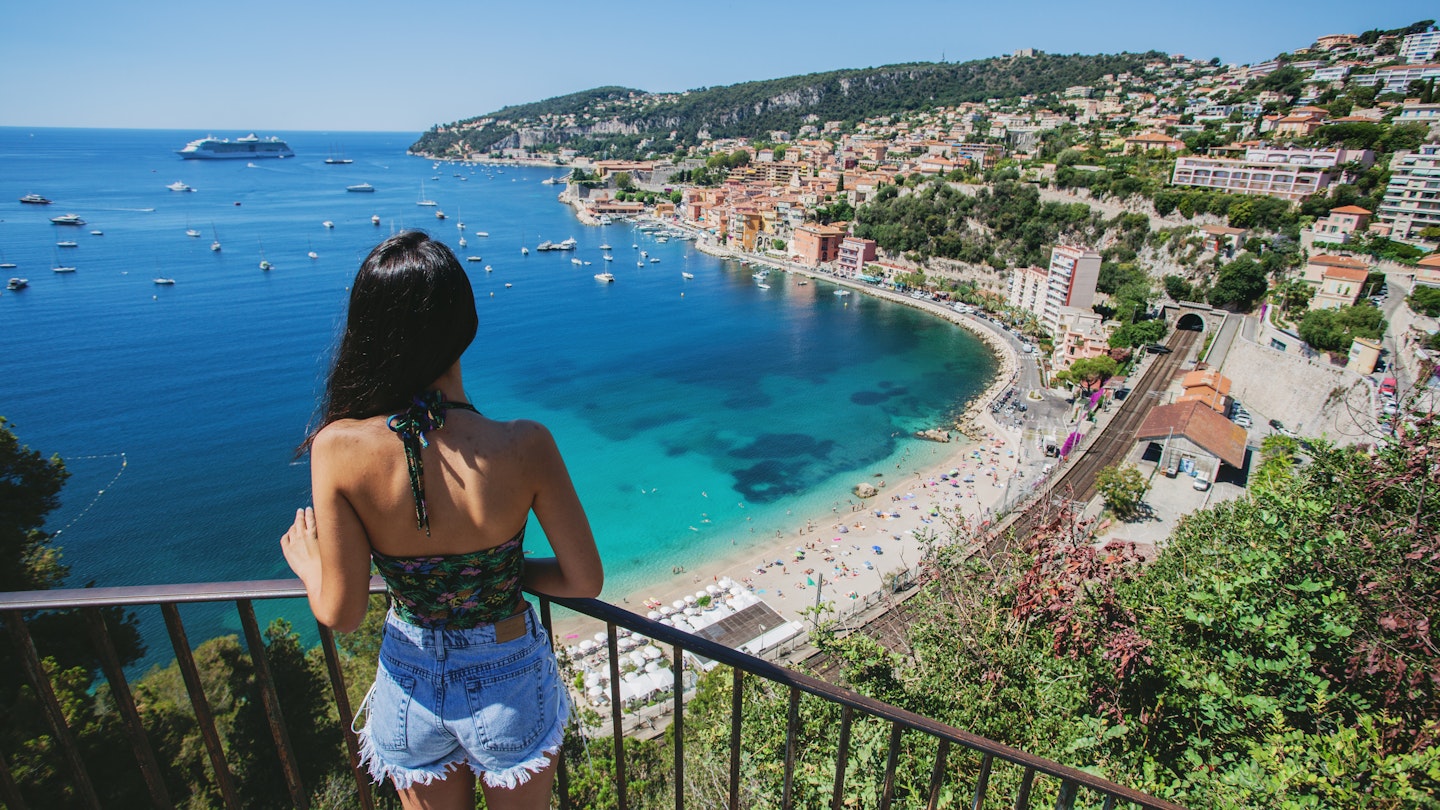
Getting around in Nice is easy, whether you explore on foot, by tram, or by bus © Carol Yepes / Getty Images
Getting around Nice couldn’t be easier! This compact French city is very walkable and easily accessible by public transport, with plenty of eco-friendly ways to get around. Inexpensive fares and short travel times only add to the experience.
Even Nice’s airport – one of France’s biggest hubs, serving hundreds of national and international destinations daily – is located a mere 20 minutes from the city center by tram. So get ready to explore one of France’s most stunning seaside locations with our guide to transport in Nice.
Central Nice is best explored on foot
Nice is a great place to explore on foot. Nowhere is too far away, the weather is usually on your side (it’s more often sunny than not) and some areas – like the atmospheric old town – are fully pedestrianized. There’s also plenty to look at, from stunning architectural gems and colorful facades to cute cafés and quirky boutiques. The best way to find your favorite spots to eat and shop is on foot.
The best walk starts on the Promenade des Anglais
Start off with a stroll along the Promenade des Anglais , one of the most famous stretches of seafront in France, lined with iconic beaches, swaying palm trees and iconic landmarks. Next, climb the steps leading up to the Colline du Château for magnificent views, before making your way back down to the old town just below. Get lost in Vieux Nice ’s narrow, winding streets and alleyways, which are packed with shops, restaurants, palaces and baroque churches that are all well worth a visit.
From there, it’s a short walk to the picturesque Place Masséna and the city center, where you can hit the stores along Avenue Jean-Médecin, take a break in Promenade du Paillon ’s gorgeously landscaped park, or delve into modern and contemporary art at the Musée d’Art Moderne et d’Art Contemporain (MAMAC).

The tram is fast, cheap and sustainable and will get you almost anywhere
After walking, the tram is Nice’s next best mode of transport. Just hop on a tram from anywhere in central Nice for easy and quick access to top sights and spots, including the Avenue Jean-Médecin, the Place Masséna, Vieux Nice (Opéra Vieille Ville) and the Libération market .
Run by Lignes d’Azur – the same company that runs the city’s bus network – these electric trams are environmentally friendly, fast and cheap. You'll pay €1.50 a ride, €10 for 10 journeys, €5 for a 24-hour pass, or €15 for a 7-day pass.
Tram line 2 is the easiest way to reach the city from the airport
The first thing you should do when you get off the plane in Nice is hop onto the city’s sleek tram line 2, which will whisk you to the city center in about 20 minutes. The tram operates three lines connecting the airport, the port, the train station and the city center. Carriages are modern, air-conditioned and wheelchair-accessible, with regular services running daily from 4am till after midnight.
Hop on a bus to explore the outskirts of Nice
Also run by Lignes d’Azur, Nice’s extensive bus network is the best way to access and get around outlying neighborhoods such as the leafy Cimiez district, with its art museums, elegant villas, Roman ruins and famous monastery , or the hiking trails and sweeping vistas of the Parc du Mont Boron.
Buses on most routes run every 10 to 15 minutes from 6am to 10pm, with some night services available between 10pm and 1am. The same ticket types and fares apply as for trams, which means you can combine tram and bus journeys when traveling on the Lignes d’Azur network.
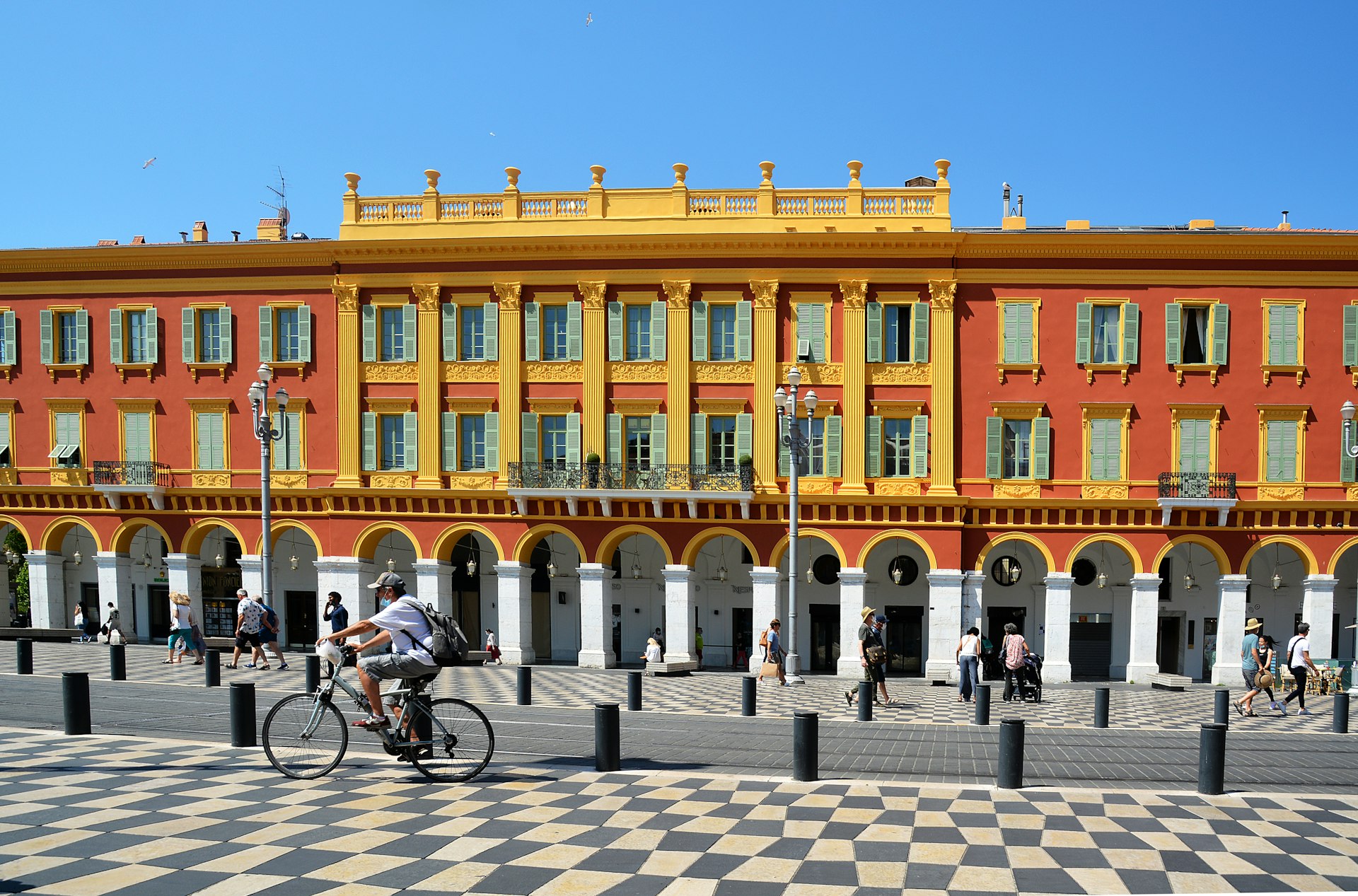
Nice is becoming more and more bike and scooter friendly
With the introduction of dedicated cycling lanes (including all along the seafront) and the introduction of electric bike and e-scooter schemes, Nice has become increasingly friendly to people who like to travel on two wheels.
Nice’s bikeshare system, Vélo Bleu , is a practical, cheap and scenic way to see the sights. The city has a fleet of 1300 bikes spread across 161 docking stations in Nice, Cagnes-sur-Mer and Saint-Laurent du Var. There’s a €1.50 subscription fee, the first 30 minutes are free, and thereafter, rides cost €2 per hour. You can also rent bikes and scooters, including electric ones, from Roller Station on the seafront.
Unless you’re pedaling along the seafront or using other dedicated bike lanes, you’ll be cycling alongside Nice's busy traffic. Remember that as an urban cyclist, the same rules that apply to cars apply to bikes – stop at stop signs, use your hands to give turn signals and ride with the traffic flow.
Rideshares are cheaper than Nice's pricy taxis
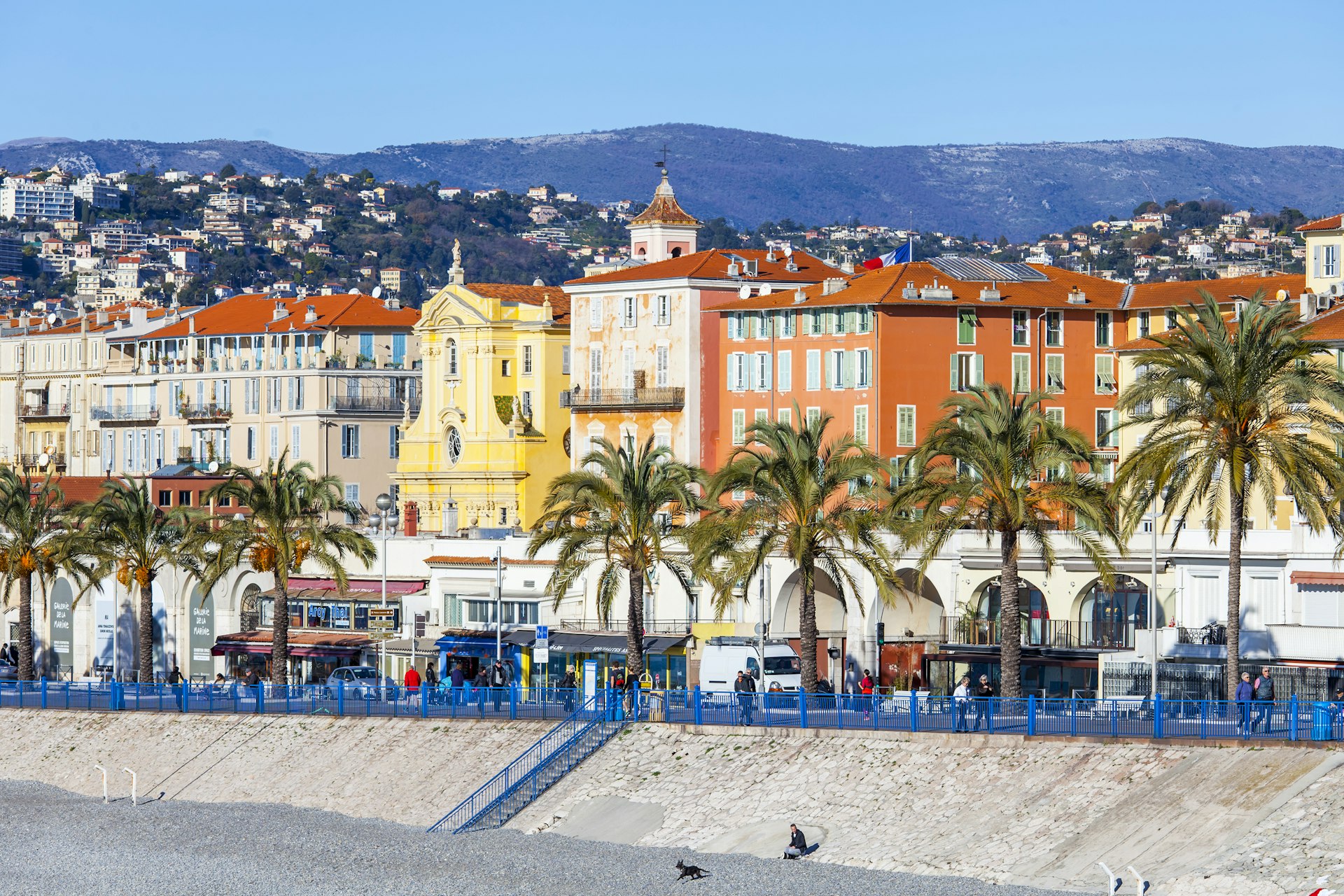
Traveling to Nice by car is best avoided
Driving in Nice is best avoided. Car parks are sparse, street-parking spaces are hard to find (you'll see double-parked cars everywhere), and there are many one-way streets that can be very confusing for first-time visitors. If you're familiar with the city, however, or are looking to explore further afield along the Côte d'Azur , you can hire a car at the airport or at the main train station, where all the major car-rental brands have offices, including Avis, Budget, Enterprise, Europcar, Hertz and Sixt.
Accessible transport in Nice
Nice’s tram and bus network is the most accessible way to get around. All trams and most buses are equipped with a wheelchair lift or ramp and dedicated areas on-board for mobility devices and wheelchairs. Tactile guidance systems at bus and tram stops make it easier for the visually impaired to board.
The city’s Mobil’Azur service provides buses specially equipped for the disabled on request, and rides cost the same as regular buses (€1.50 a ride, or €10 for 10 journeys). For more information on accessible travel, check out Lonely Planet’s accessible travel resources .
Why I love walking around Nice
I love exploring Nice on foot for a chance to spot the little things – the pretty storefronts and colorful shutters of the old town; the local market traders enthusiastically selling their wares on the Cours Saleya; the children (and sometimes adults, too) playing in the water fountains on the Promenade du Paillon.
It’s good exercise too, and you can never get bored of strolling along the paved Promenade des Anglais, my favorite walk in Nice for the sunshine, the sea breeze, the water’s ever-changing hues of blue and turquoise, and the people jogging, walking or cycling past. Take a seat on one of Nice’s famous blue beach chairs lining the seafront and take it all in like a local!
You may also like: 14 places to go to enjoy the best of France France’s 10 most stunning road trips The 12 best beaches in France
Explore related stories
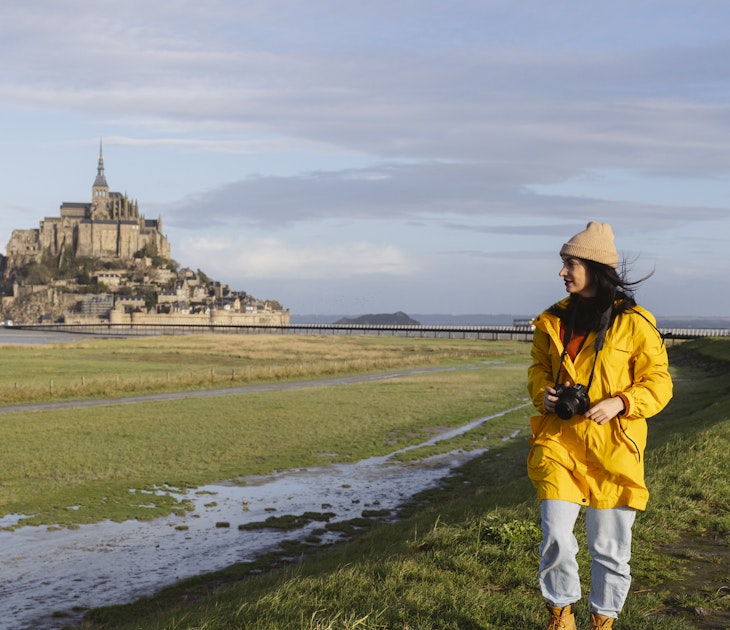
Destination Practicalities
Apr 12, 2024 • 9 min read
France is a country associated with luxury, but with these top tips, it's possible to experience it on a limited budget.

Dec 25, 2023 • 11 min read
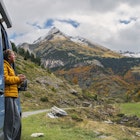
Dec 17, 2023 • 6 min read

Nov 25, 2023 • 7 min read

Oct 6, 2023 • 8 min read

Aug 28, 2023 • 11 min read
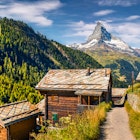
Aug 8, 2023 • 4 min read

Jul 26, 2023 • 9 min read

Jul 4, 2023 • 5 min read

Jun 20, 2023 • 4 min read

IMAGES
VIDEO
COMMENTS
The vast majority of visitors to France choose to travel en voiture (by car). However, while driving is often the most convenient and comfortable way to get around - especially if you want to explore the French countryside - it's not always the easiest or even cheapest option. The French rail network is superb, and traveling by train is ...
The TGV Train network (Train a Grande Vitesse) runs to major cities in France and Europe.; Intercites trains cover many of the medium distance routes between cities like Amiens, Orleans, Bordeaux, Caen, Lyon, Reims, Troyes, Toulouse, and Paris. They link cities in French regions like Nantes, Bordeaux, and Lyons-Nantes-Tours. TER is the French regional service running from towns and villages ...
It takes 11 days of train travel to do this trip (also consider the cheaper Ouibus and Flixbus for some trips). If using only the train, buy an eight-day France rail pass, and make it stretch by buying point-to-point tickets for cheaper trips on day 5, day 13, and day 18. If you only have two weeks, end your tour in Nice.
Mont Saint-Michel. #3 in Best Places to Visit in France. Rising above the sea like a castle in a fairy tale, Mont Saint-Michel in Normandy is one of France's most-visited sights. Legend says the ...
Disclosure: Travel Lemming is an independent reader-supported blog. You can support us by purchasing via the affiliate links on this page, which may earn us commissions. See our Advertising Policy for further explanation. Thank you! 4 Ways to Get Around in France. The most popular transportation methods in France are trains, cars, buses, and ...
Southwest France. Paris. Brittany & Normandy. St-Germain & Les Invalides. Bordeaux. Montmartre & Northern Paris. Le Marais, Ménilmontant & Belleville. France's best sights and local secrets, from travel experts you can trust.
18. Be sea- and snow-safe. Powerful tides and undertows occur on France's Atlantic Coast; don't swim at un-patrolled beaches. Avalanches are a risk in the Alps and Pyrenees: check daily reports and keep to groomed pistes. Summer can bring sudden, intense thunderstorms. 19. Know what to do if things go wrong.
Reading time: 0 min Published on 21 March 2024, updated on 23 April 2024. Being the UK's nearest neighbour and boasting one of the best transport infrastructures in the world, France is wonderfully easily accessible to us Brits, whichever way you choose to travel.
Non-Europeans also have the option of picking up the France Rail Pass(starting from $205/$371 for three days unlimited travel in one month) before arriving in France. The pass is available for 3- to 9-day periods. By bus. SNCF operates bus services between train stations in areas no longer accessible by rail.
Opening Hours: Standard work hours in France are 9 am-6 pm with a two hour lunch break around 12-2 pm. For the tourist, the key hours to know are: 1) bakeries open as early as 6 or 7am, and 2) retail generally opens at 10am. In other words, you can enjoy your coffee and croissant before hitting the local boutiques!
France Itinerary. Discover the best of French life with this spectacular France itinerary. Start your trip in beautiful Paris and let the train carry you down to the sunny Mediterranean, while cruising through hillside vineyards and endless lavender fields. Reserve a seat on France's TGV high-speed train for fast and comfortable journeys ...
Cost of a 2-week France trip. France is one of the most popular destinations in the world making it one of the most expensive in the world especially during the peak season (summer and Christmas). Here are some ideas on what to budget: Affordable: Budget travellers might spend around €1,200 to €1,800.
Traveling around France is easy, whether you get there by plane, train, automobile — or even boat, in the case of Corsica. So don't feel like you've got to spend all your time in Paris .
Get ready to explore the best of France with Travel + Leisure. ... 10 Best Backpacking Trips Around the World. The 50 Best Places to Travel in 2023.
France Suggested Budgets. On a backpacker's budget, prepare to spend 70 EUR per day. On this suggested budget, you'll be staying in hostel dorms, cooking all of your meals, using public transportation to get around, limiting your drinking, and sticking to mostly free and cheap activities like free walking tours, parks and gardens, and free museums.
Train travel in France is an easy, affordable, and sustainable way to get around and see all that the county has to offer. There are over 1700 kilometers of high-speed train lines all over France. One of the best parts about traveling by train is the fact that there are stations in almost every city rather than only near the airports.
Eurostar and Thalys trains. The Eurostar is a direct train from Paris Gare du Nord to London St. Pancras. At just over 2h15, this is perfect for traveling downtown to downtown and avoiding all those pesky ferries and airport delays. Still, the cost is high and this isn't considered a bargain at all. Just a convenience.
The route ends in Le Grau-du-Roi, just steps from the Mediterranean Sea. 8. Le Petit Train Jaune is the most famous vintage train ride. Villefranche-de-Conflent to Latour de Carol; 64km (40 miles) This historic little train - or, literally, the " little yellow train " - may be the most famous of them all in France.
France 2 Week Itinerary #5: Paris - La Rochelle - Bordeaux - Biarritz. This 2 weeks in France itinerary by train starts from Paris, and it explores some of the most beautiful cities in Western France. Spend 14 days in France, combining sightseeing with relaxing days by the beach.
France is extremely well connected via rail. Laced with high-speed train networks (called the TGV, or Train à Grande Vitesse) that connect easily to regional and local trains, France is incredibly accessible for those who don't want to drive. In fact, traveling by train is almost always the fastest and easiest way to get around - and there ...
Train Travel in France. If you're planning a trip to France, getting around the country couldn't be easier than by train.Trains in France are one of the best modes of transportation and will get you anywhere you want to go in the country with ease and to or from any neighboring country.. If you're a first-time visitor and need some assistance with understanding train travel in France ...
Travel on a budget in France, from $340 − $670 USD weekly per person, mid-range $980 − $2160 USD, and high-end from $2070 − $3140 USD. However, costs depend on factors like accommodation, transportation, and activities. ... How to Travel Around the French Riviera. Traveling around the French Riviera is super easy by car but also via ...
Paris to Nice, Lyon or Bordeaux from €25. The best way to travel between French town & cities is by train, in comfort at ground level. France's world-famous TGV travels at up to 199 mph, from city centre to city centre, and if you pre-book direct with the operator you can find some really cheap fares, too.
More than 15 million visitors are expected to travel to Paris during the 2024 Summer Olympics, which will take place from July 26 to August 11.But as the world's attention turns to the City of ...
These basics will get you far in France, but there's a lot more French where that came from. To make real connections during your trip, let Duolingo be your guide! Our bite-sized lessons make it easy to fit study time into your busy schedule, and our entire French course is free—so you can save your euros for souvenirs.
Book accommodation, restaurants and other dedicated services. To travel by bike in optimum conditions, cycle tourists can use service providers with the "Accueil Vélo" label, all of which are listed on the France Vélo Tourisme website.More than 7,000 are listed: accommodation, restaurants, cycle hire and repair services, tourist offices and tourist sites.
Getting around Nice couldn't be easier! This compact French city is very walkable and easily accessible by public transport, with plenty of eco-friendly ways to get around. Inexpensive fares and short travel times only add to the experience. Even Nice's airport - one of France's biggest hubs, serving hundreds of national and ...